Project Summary
Words and Photography by: Martha Molfetas
October 2018
On the ground: Labor Day Weekend 2018
Over Labor Day Weekend, our Executive Director, Martha Molfetas; and our Director of Communications, Michelle Chasteen; went to the Fort Myers area to interview people impacted by this ongoing pollution crisis; and photograph the places affected. In addition to our interviews, we also communicated with Staff Attorney for Save the Manatee, Anne Harvey Holbrook - who has spent her life as a conservationist and an environmental lawyer. We also spoke via email with infrastructure engineer, Mallory Clancy, a Fort Myers local and Professional Civil Engineer. Their expertise and technical prowess is included in the slideshows below.
We went from Fort Myers Beach to Sanibel Island, to Matlacha and St. James City to Cape Coral; and many places in-between. On what should have been one of the busiest weekends of the year, the entire area was a ghost town. The once pristine clear blue Gulf waters have been replaced with red colored waves. Canals have also been altered from their former glory to deep browns, and occasionally greens and yellows. But this is not the first year this has happened, over the last five years, this has become a regular occurrence lock in step with planned releases from Lake Okeechobee; managed by the Army Corps of Engineers.
Over the last five months, the entire area has suffered from a severe red tide and a noxious cyanobacteria bloom, aka: blue-green / green algae; creating a dead-zone that has spanned from Sarasota to Marco Island, and into the Everglades on the west coast. It has even spread into the Miami area - creating a travesty on both coasts. In Lee County alone, 1,700 tons of dead sea turtles, manatees, fish, and other marine life have been collected. Financially it has cost the entire state an estimated $8 million in business losses, Sanibel and Captiva Islands are estimated to have lost $4 million during the July red tide alone. The Fort Myers Chamber of Commerce estimates that businesses lost $2.7 million in August, with roughly $560,000 in wage losses for the community.
Florida is a diverse state, with swamps, springs, beaches, and wetlands - a unique nexus of water and land. What happens in one area can have drastic impacts on other communities. Addressing this issue will require an all hands on deck approach, including state, local, and national responses to both environmental pollution regulations alongside engineering and infrastructure solutions. The cost of doing nothing is far too great. Lives are at stake. Local economies are at stake. The future of Florida is at stake.
Research Brief
{Re-Launch Coming Soon} We are editing and adding to our Brief to include up to date info on this now recurring and nearly year-long issue. There’s a lot of technical aspects, scientific nuance, and policies that have inter-played to make these red tides and algae blooms a new normal for the Fort Myers area. For more on how this pollution crisis has started, how it’s unfolding, and how we can turn the tide - check out our short research brief {re-launch coming Summer 2020}.
Stories from the Field
Over the long Labor Day Weekend, we spoke with five Fort Myers area residents, all impacted by this ongoing crisis. Their stories are featured in the slideshows below, in the order that we met them. Some have had their livelihoods threatened, others have had to endure health impacts from it, all have had their lives changed by this ongoing pollution crisis.
Donna Sellers | Fort Myers Beach
Donna works at a local Fort Myers beachside hotel, and runs a small cleaning business. She lived in Fort Myers for 18 years, moved to North Carolina, and moved back recently to the area. Over the last months, she’s become progressively ill from gasses emitted by the red tide and algae bloom while watching beachside businesses come to a standstill. Her livelihood and her health have both been impacted by this ongoing crisis. We spoke with her on what should have been the busiest day of the year, Labor Day Saturday. The hotel and the surrounding area were all a ghost town. When we first met with Donna, she was debating how much longer she could stay here. After Labor Day Weekend, Donna went to North Carolina for three weeks to detox from all of this, within her first week of returning back home to Fort Myers, she is now just as ill as she was in early September. She’s now making plans to leave the area permanently.

“I have been so severely ill for like a month now, every time I come back here I'm sick again. And then I leave for a week and I'm okay, and then I come back and it's like the symptoms will just come like that and then they can just go like that.”
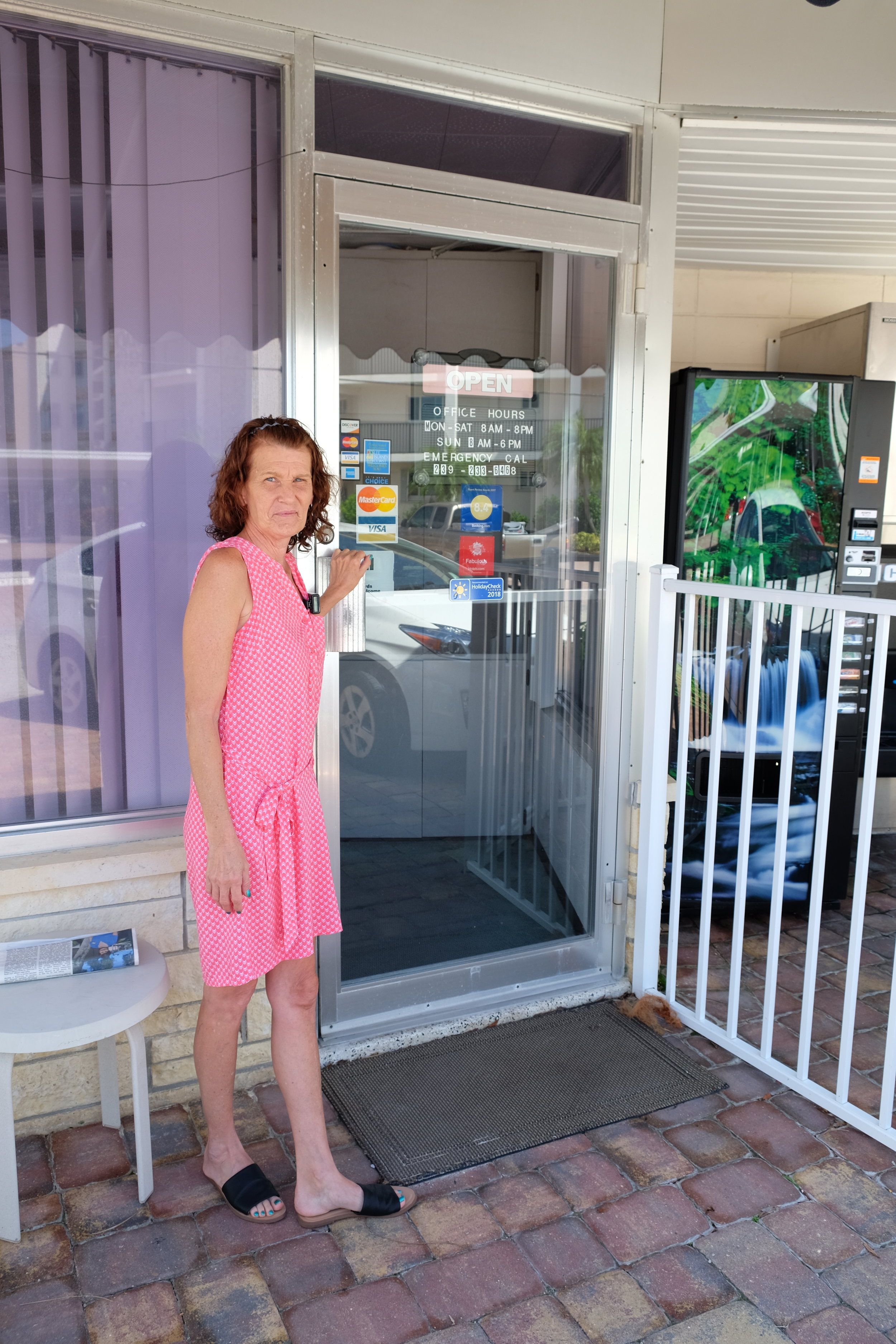
"I'm being affected and seeing all this death, it's traumatizing. It is so traumatizing. And we're all reaching out to people and agencies, and they're just blowing us off. I mean, I called the poison control, and they didn't even recommend for me to go anywhere. I told them I felt poisoned and they just took my number. And that kind of blew me away, because I've never had to call poison control and the fact that I did, with a legitimate report. I was just like, 'it doesn't matter.'… I'm going to North Carolina just to get away and detox myself and I'm gonna go get tested for this, the special test to see if we are, have neural toxins in our body, because those are the symptoms I am having and it's scary."

Donna: “At first, I didn't put it together. And then, being that I am gone for a week and here for a week, after a couple of weeks, and then of course seeing everything on social media and feeling the way I felt, I was like, "There's more to this. It's not just I don't feel well." I mean, it's extreme fatigue. There's days I'm in bed, I can't even get out of bed. My muscles, my legs hurt so bad. And I mean, I have literally cried out to god in my house because I can't take it. My muscles hurt so bad."
Martha: "It's not like you have arthritis or anything like that?"
Donna: "I don't have, I am totally healthy. I don't have cholesterol, heart problems, pressure problems, sinus problems, nothing."
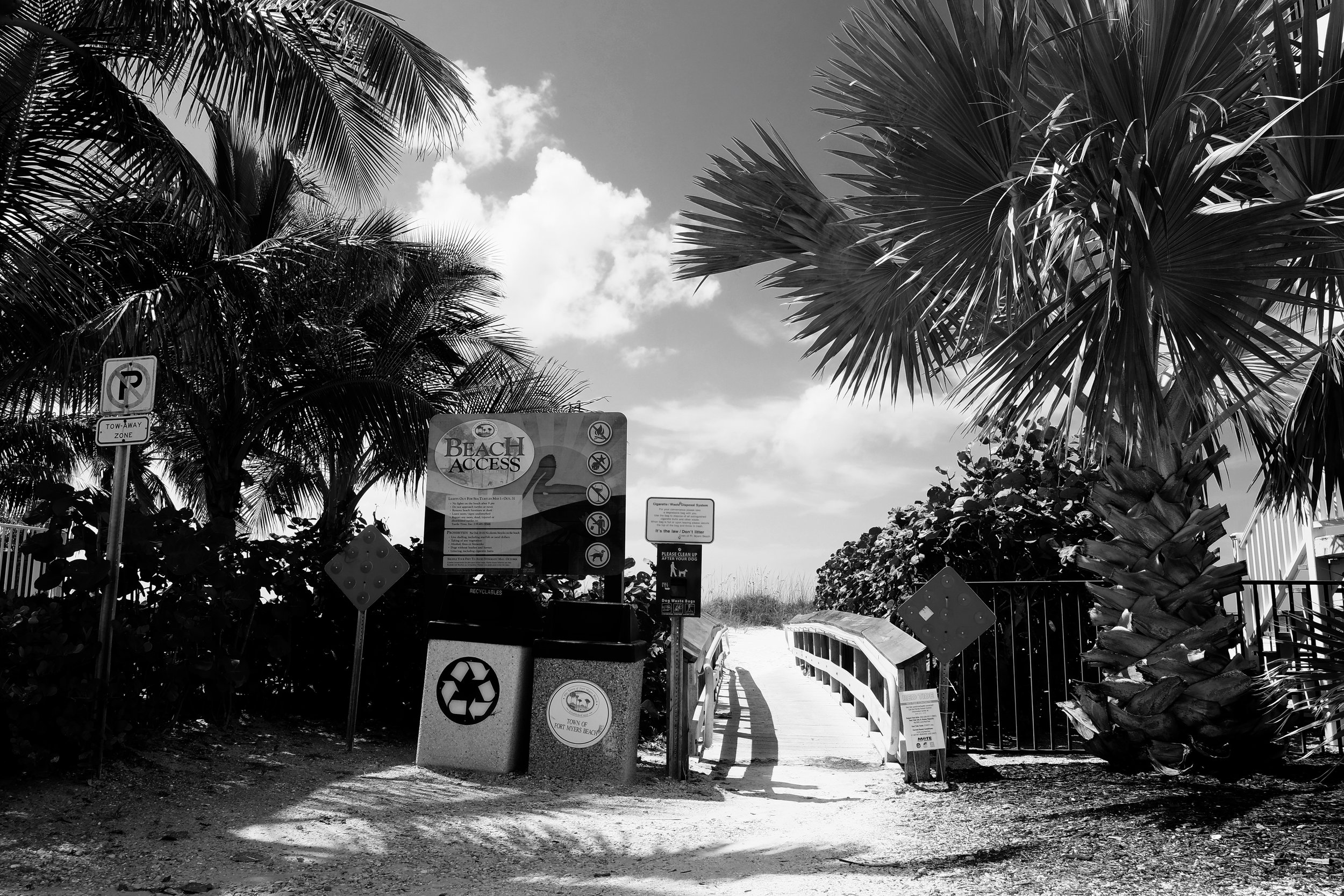
Donna: “Why is no one addressing this on a national level and trying to help us? Not just give businesses loans. Why are they not closing the beaches? My guests call me, I tell them. If you're asking me for my opinion, I don't feel it's safe. I'm not giving nobody medical advice. I believe that it's toxic here. Why are you not testing the air, the sand, the water? Why are you trying to convince people to come to the beach when you have all these people saying how sick they are. This is Labor Day weekend.”
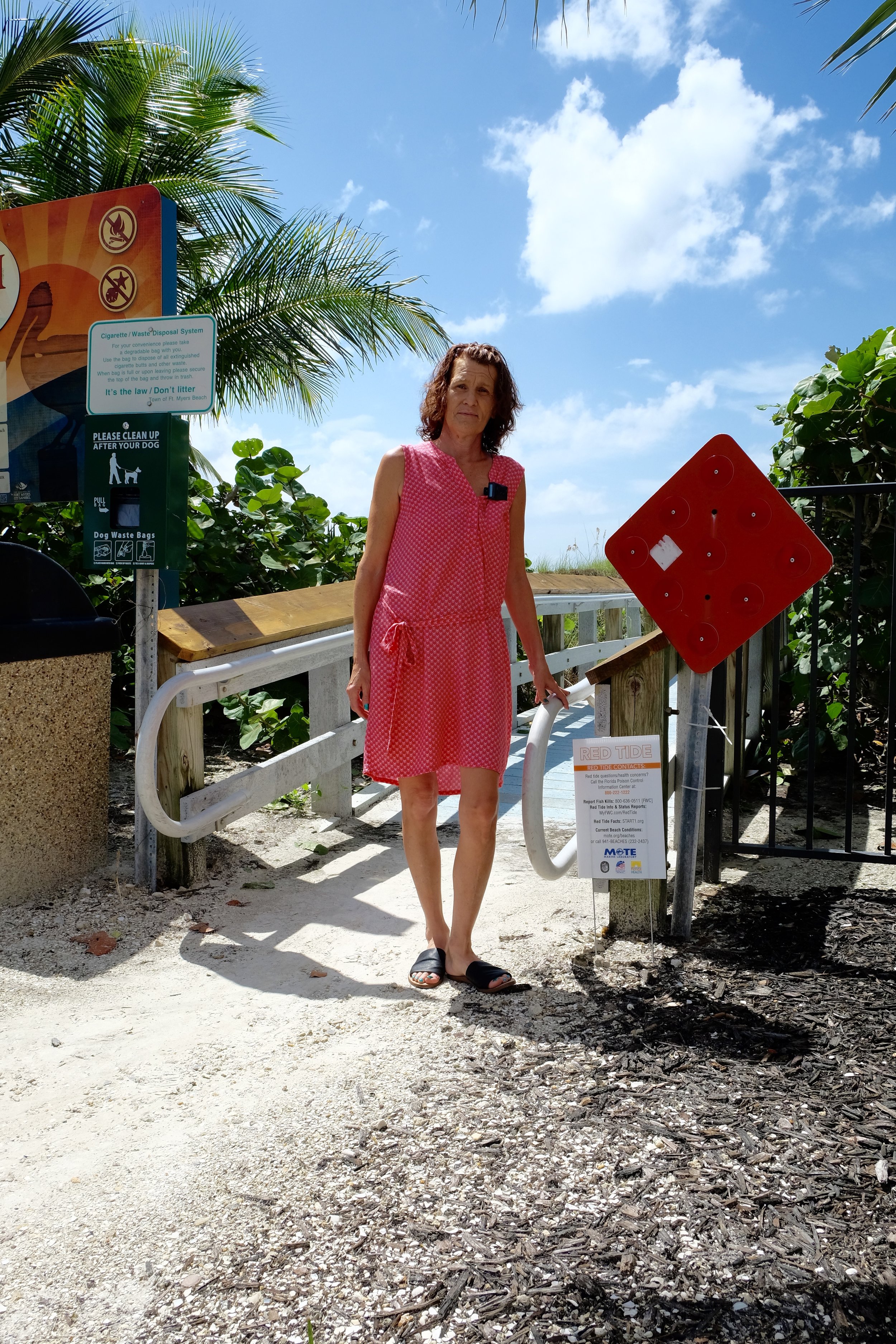
"The past month, all my bills are overdue, so I probably worked 10, 15, pushing 20 hours a week for the last month."
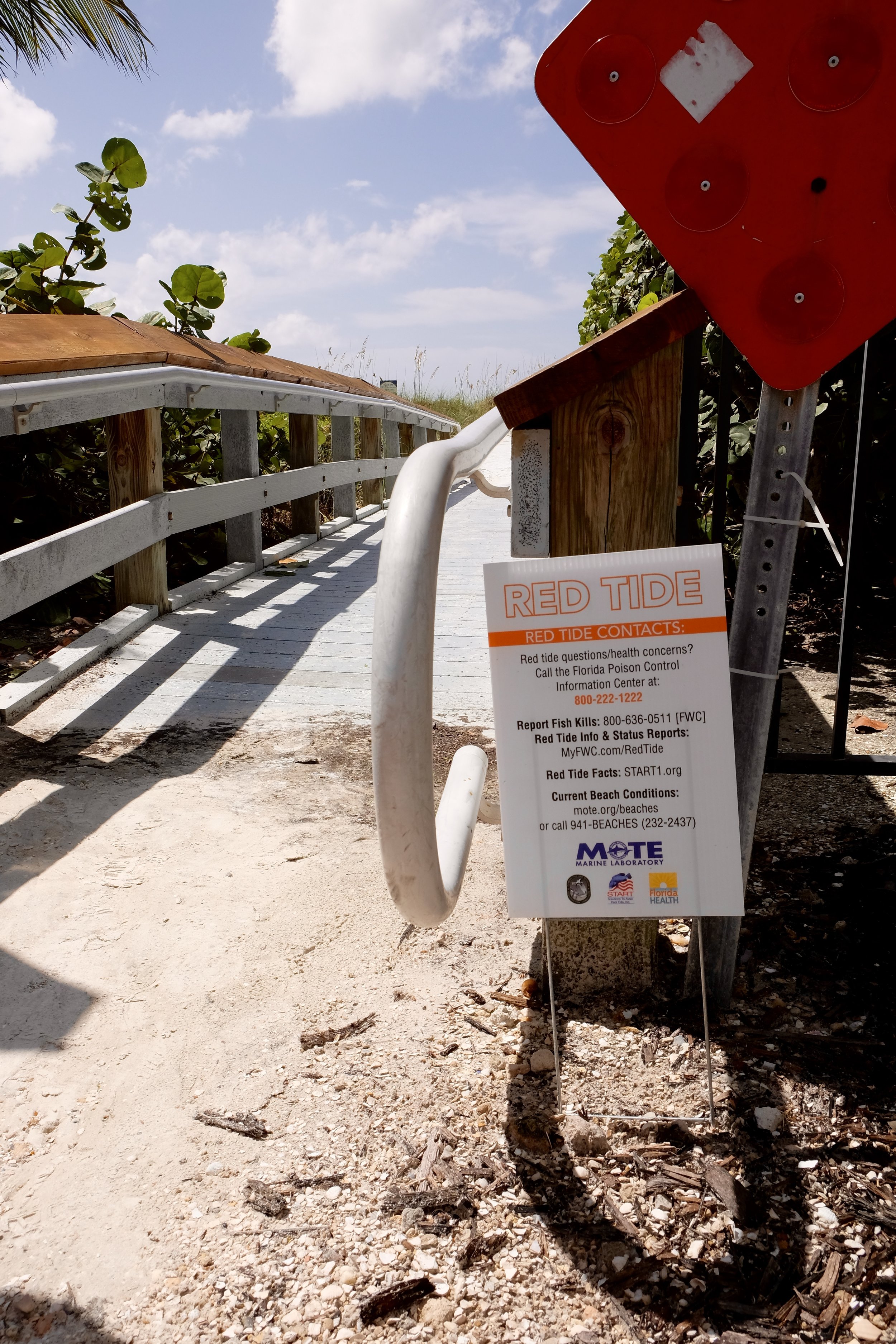

"I warned some of my guests and I said that I don't have ... I'm not qualified in any type of doctor or scientist or any of those fields, but please don't go in the water. Because that's on us. It's like yes, we all need tourism money, but at the end of the day, as a human being, what is more important? Someone's life or you to make money? I would rather go broke and bankrupt, than to not warm someone. And that's what hurts me and is bothering so many of us. Especially when you're going through it yourself. Not to mention the traumatization of all the dead fish. All these protected and endangered species and they're just getting dumped in the dumpster. But yet if we touch them, we're going to jail. Like, I don't understand it. I just don't understand it."
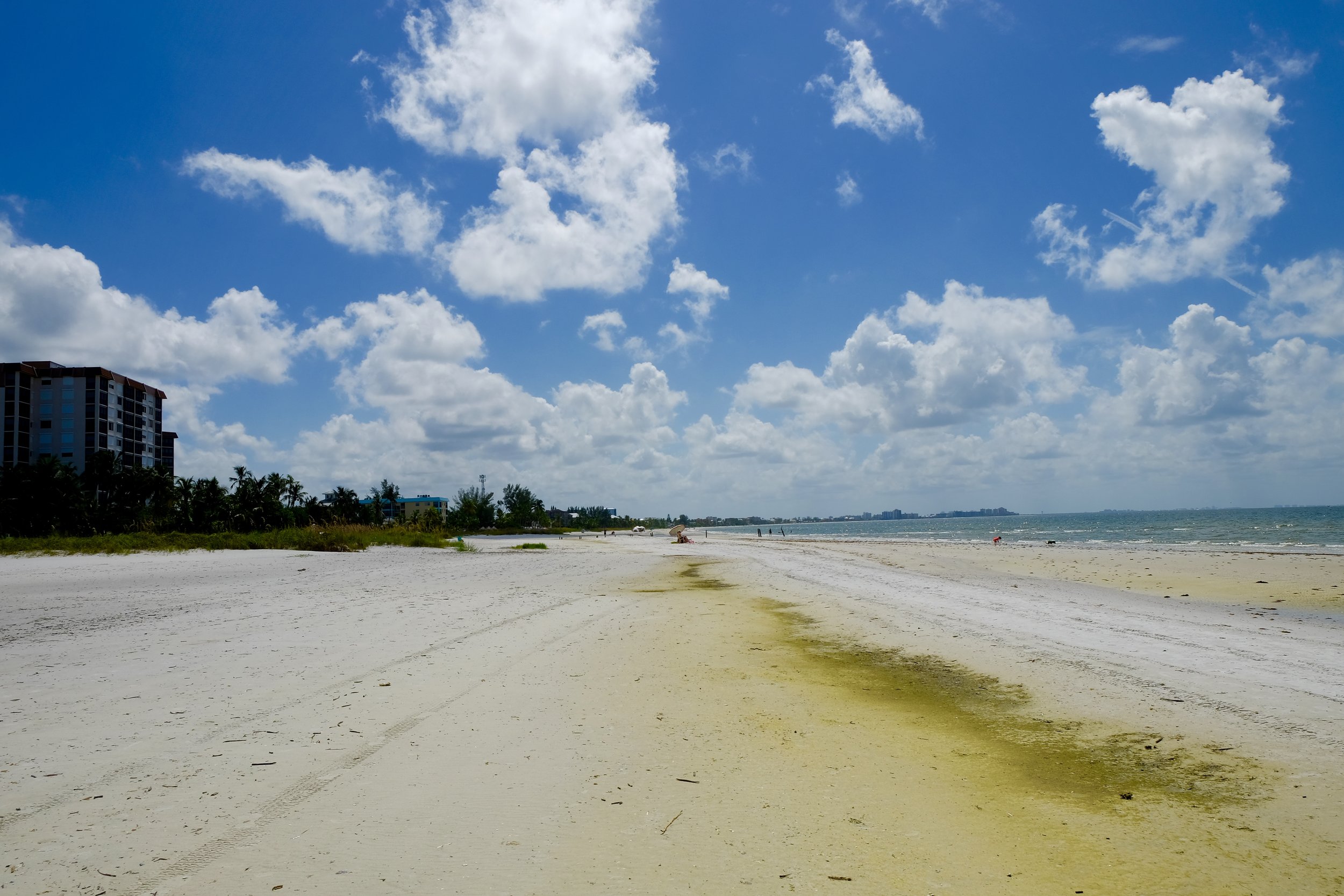
The sand at Fort Myers Beach is tinted green, from the green algae that has hit this area.
Donna: “I have no appetite and just different things. My fingers are going numb. My toes are going numb. My tongue is going numb. So yeah, it is. It's just weird. That's why I'm gonna go to North Carolina, because I feel like I'll get tested and I won't have biased people taking my story and I think I need to let another state know."
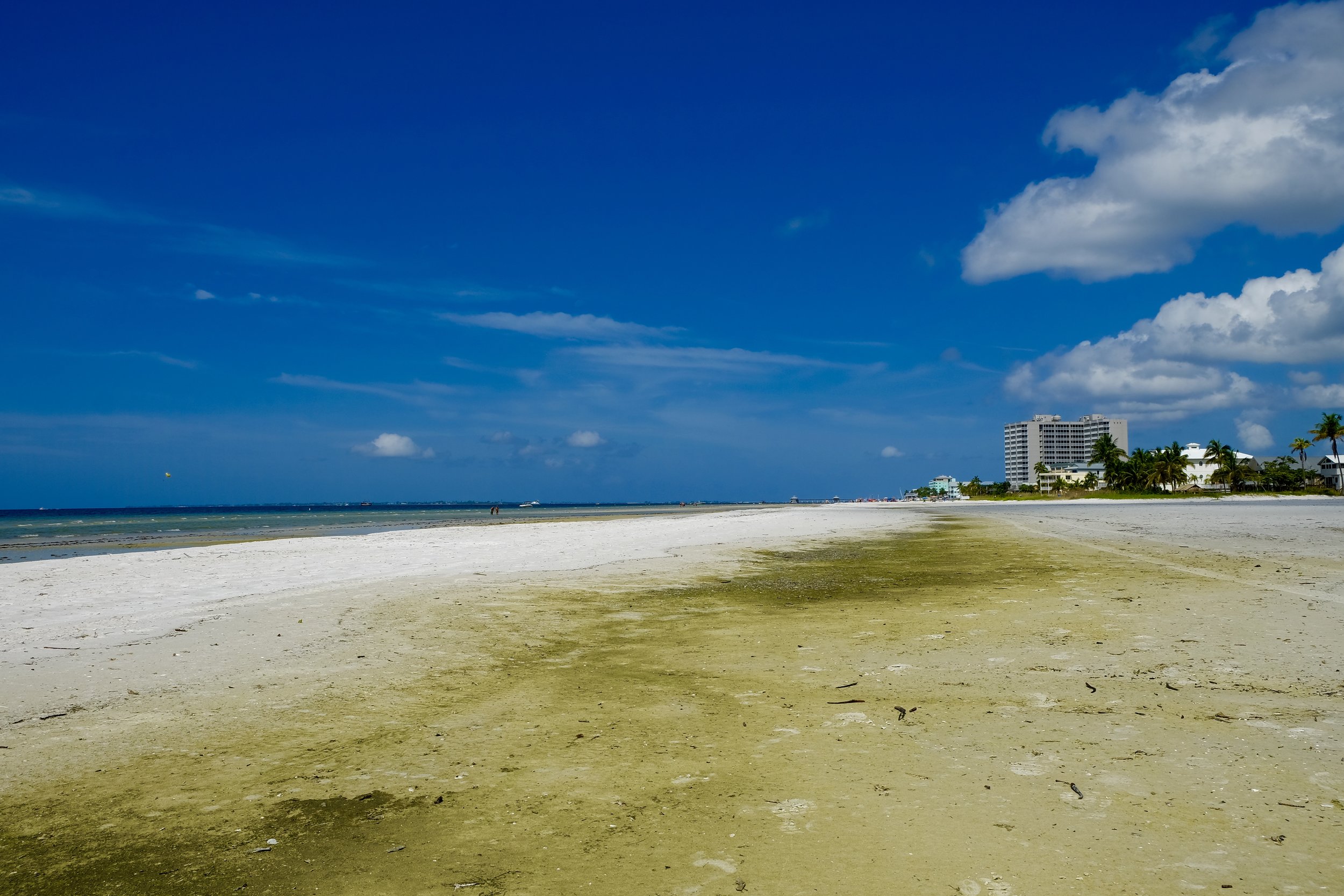
Donna: “Across the street, there was a supermarket and that's where they have been ... Well, of course not now, but that's where they've been kind of meeting all the trucks and all the beach cleanup people. I go over there to eat my lunch and I sit under that tree in my car, and that's my little lunch break spot. So, I've been able to witness them bringing the carts down and having just regular people that they hired for I think like eight dollars an hour to go and clean up the mess. You know, they have people in Cape Coral, scientists go in and test the water and they got hazmat suits on. But the reporter and the pregnant lady [are OK] ... Why do you need to be protected like that and the other people don't?"
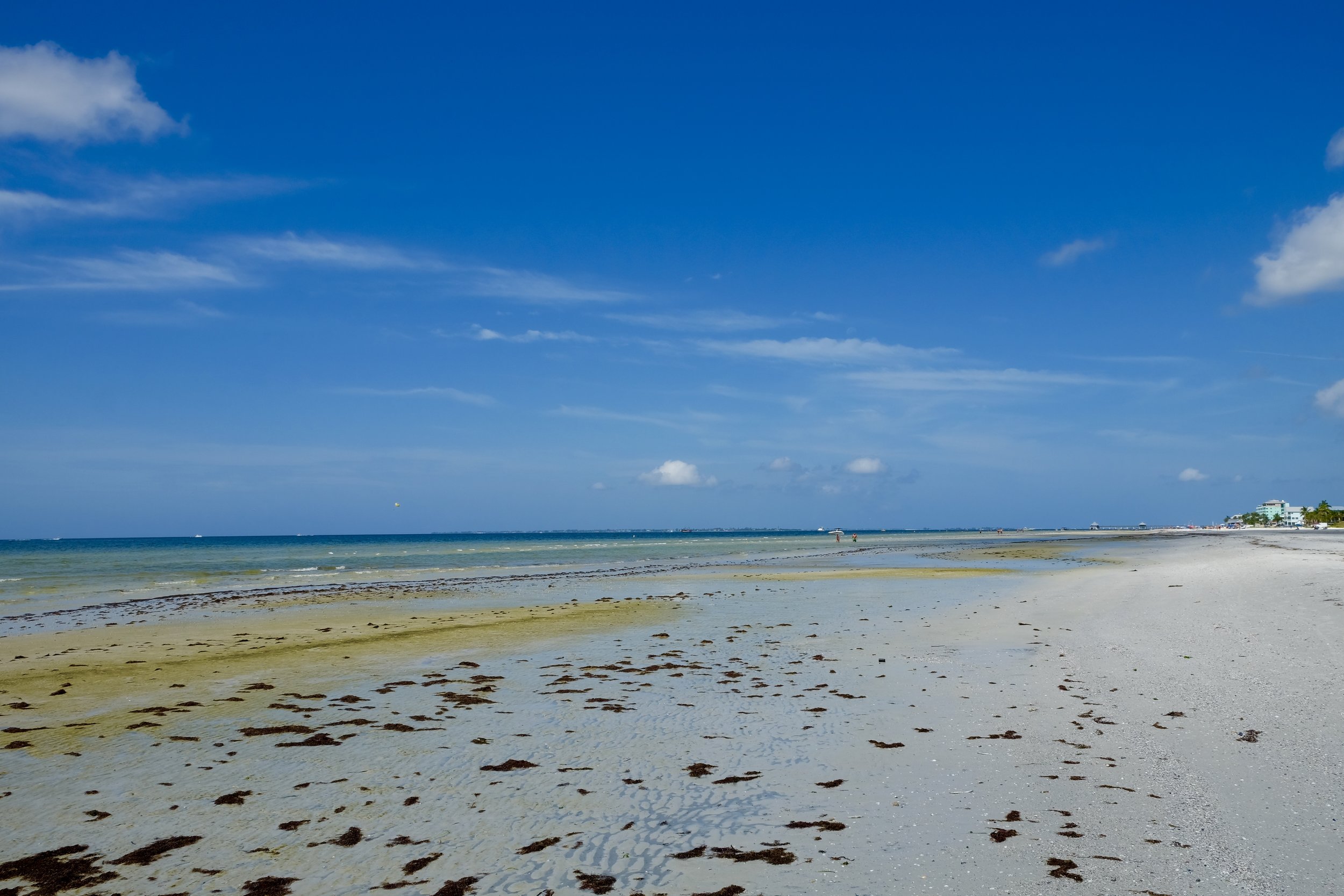
Donna: “It's a constant stomachache. Like it doesn't go away, the pain in your stomach. And that is just all over I'm seeing that... It's pretty drastic that I have to get in my car and drive to North Carolina right now."

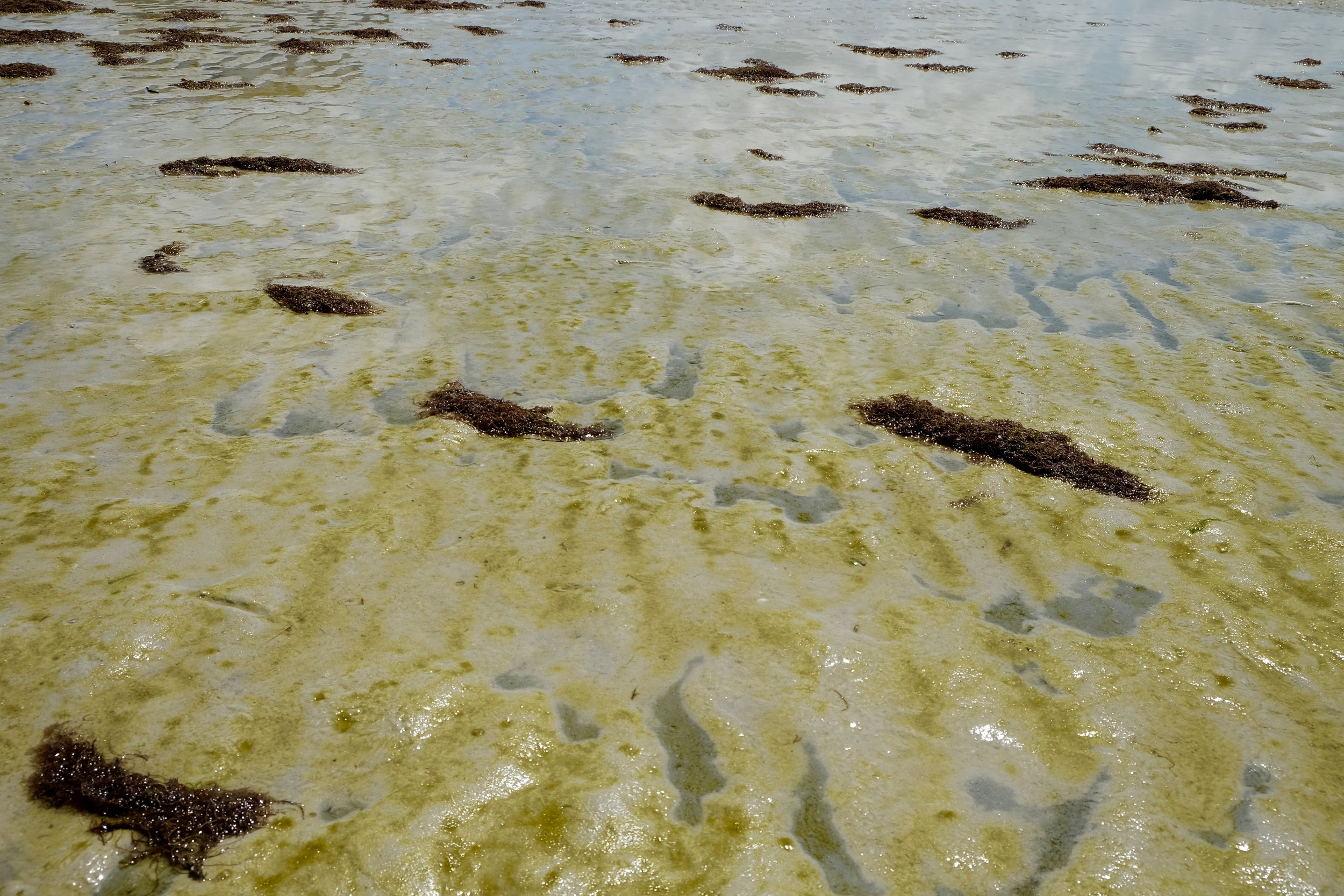
Donna: "I have a cleaning business here and a homemade jam business, and I'm definitely going to turn in my license for my jam business. I don't want to continue that, and I really believe that ... I thought I was gonna restart my life here after my, I'm going through a divorce. And I don't want to stay in a poisoned state. If this is the reality of what we're gonna have to live with, I'm out.
Michelle: "Are you talking to friends and neighbors here about this situation? What are other people kind of feeling?"
Donna: "A lot of people, some people are wanting to leave. Some people want to stay. They've lived here all their lives, but it's like I told my sister, I was like, "I love you, sis," and we're kind of together because she took me in after I went through this... But I'm like, "Sis, I love you, but I'm not staying here." I'm not. I'm gonna go and I'm gonna come back so my coworkers can go on their vacation, but I have to seriously make plans, because I'm not going to stay here."
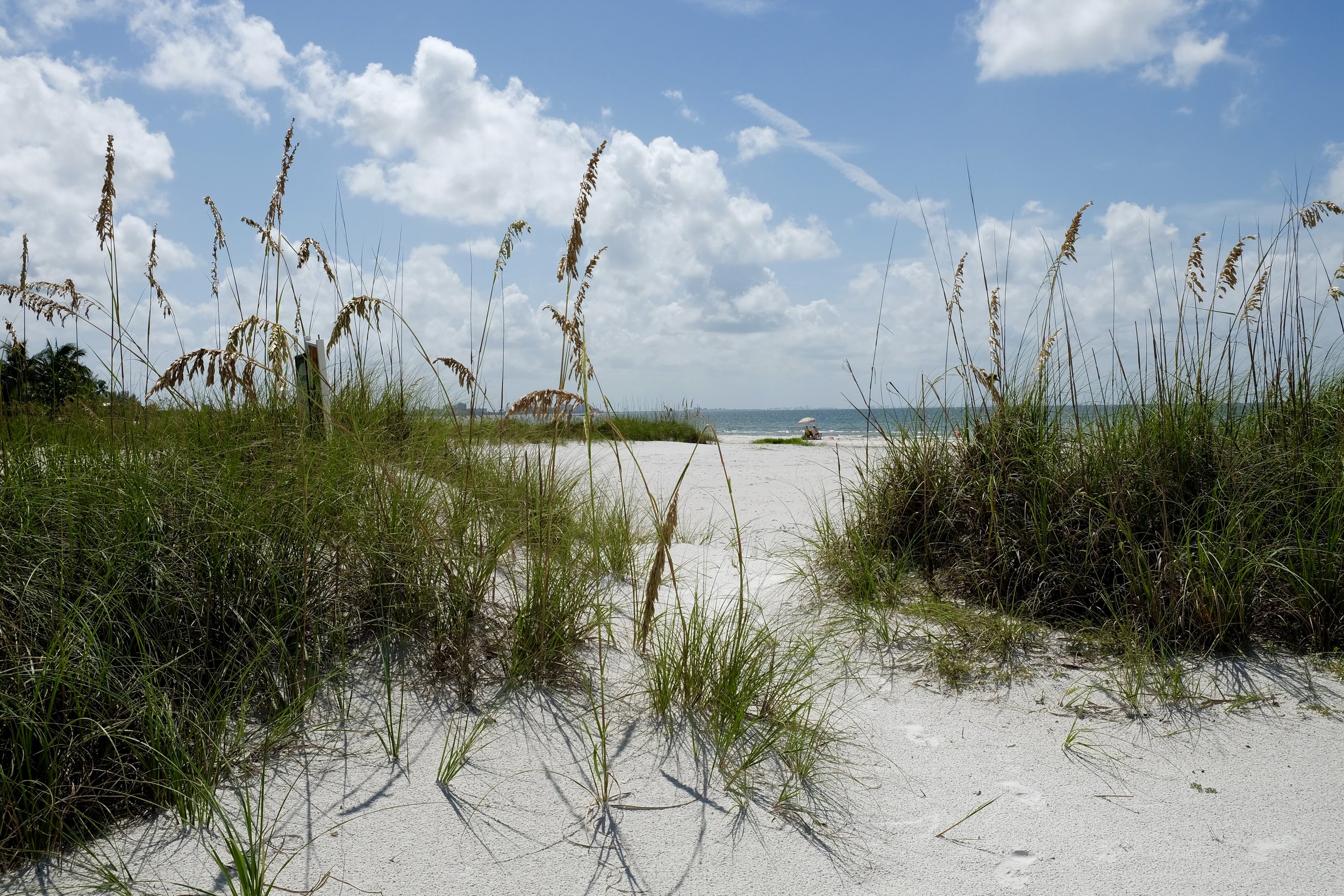
Donna: "It's not The Sunshine State to me right now... I had a lady from Canada contact me last night, and said that her and so many of her friends come down here in two months, and she asked me my opinion and I told her how I felt. I would much rather ruin your vacation than you get sick. The health of your family is more important to me than whether the hotel can make money... It's hard. Because Florida does live off of the tourism.”

Donna: "It's bad in Cape Coral, the canals where I live. I went to pick mangoes last week and it was just... I didn't even want to pick them when I saw that green algae. We got a tomato plant growing out there, and I won't even eat them because they were all coming up beautiful and now they're all... it's the air. 'Cause they were beautiful tomatoes. We had to throw two away yesterday, and I said, 'We don't even need to eat them.' I don't want to eat them."

Donna: “We wouldn't be able to stay on and make it. Just supporting each other, look. What if it was just us here? This is what it looks like…This hotel owner is refunding everyone's money, no questions asked. Nothing, just giving you your money back. He's honoring all of the guests and their cancellations and refunding all the money."















Hover your mouse over the image to see interview quotes and descriptions.
Roxanne Goettsch | Sanibel Causeway Islands Park + Fort Myers Downtown
Roxanne is a ride-share driver, picking up and dropping off people throughout the Fort Myers area. Before the red tide and algae bloom started, she could expect to respond to about 20 riders per night during weekends, earning close to $150 a night. Since the blooms started, she’s now lucky to make $40 with tips on a Friday night. We met with Roxanne on Sanibel Island, at the Causeway Island Park. As we drove from Fort Myers Beach and across the Causeway, there was zero traffic, you could easily count the cars on the road on one hand, on a day that should have been filled with beach goers. We were the only people at Causeway Island Park this Labor Day Saturday, on a day that would usually be booming with locals and tourists jockeying for parking spots.
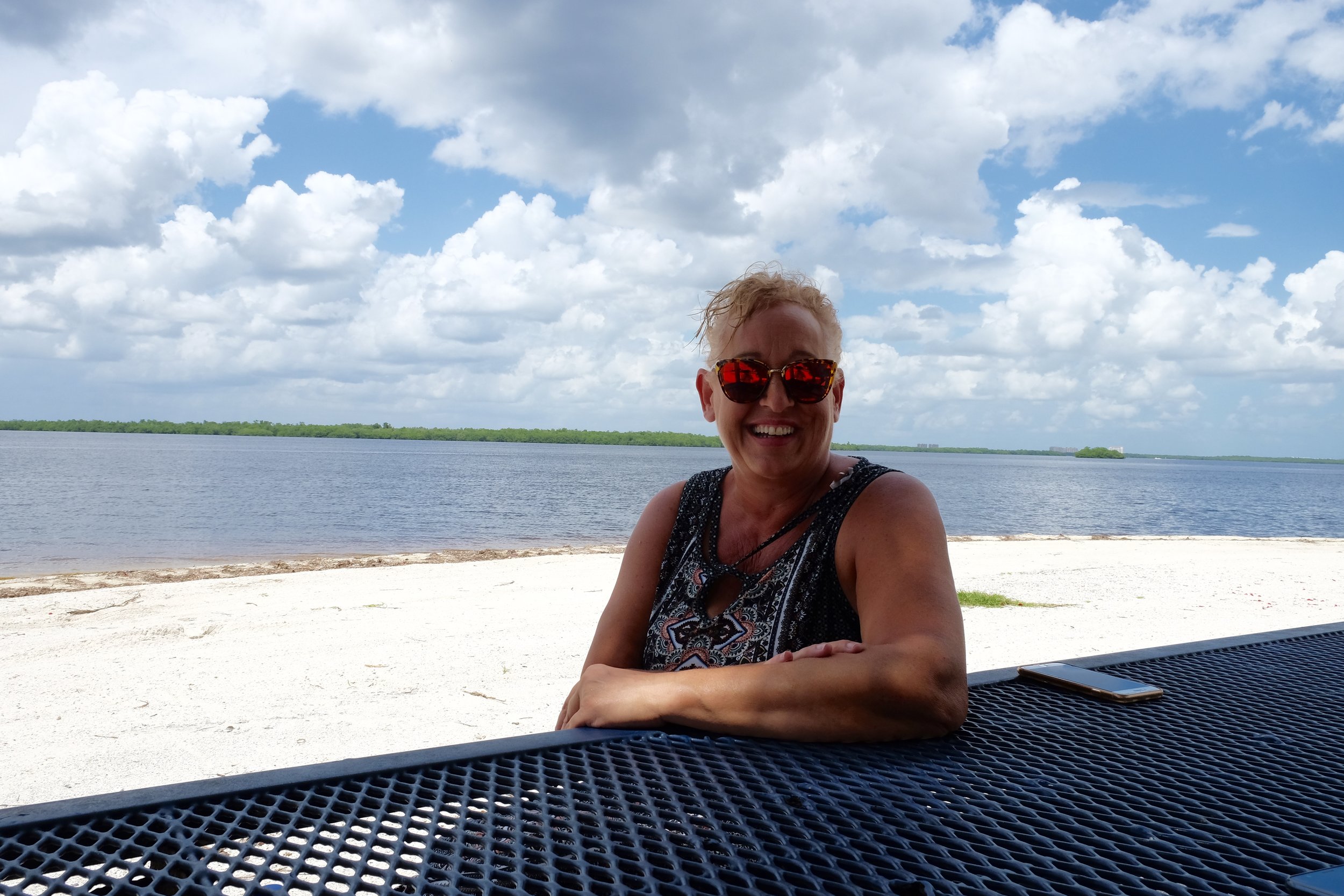
"To me, it started to change. There's a place over on Sanibel that I go, it's kind of like a private little beach. You can only have just a few cars parked there, so there's not a whole lot of people down there. And I had taken some pictures on my daughter's birthday, and it was clear blue. Well then about three weeks later I went down there, and totally not the same. It was cloudy and red, and you didn't see near as many people or fish. I got dolphins swimming, and this was just earlier... [by the] early part of June."

Martha: "Have you seen any posted warnings or notices?"
Roxanne: "Uh-huh, I just saw the one down there. It talks about red tide."
Martha: "When did you notice those going up?"
Roxanne: "I just noticed it today. I don't know when they started doing that, but I don't know. He was still here. I don't know if he just put that up, or if it's been here."
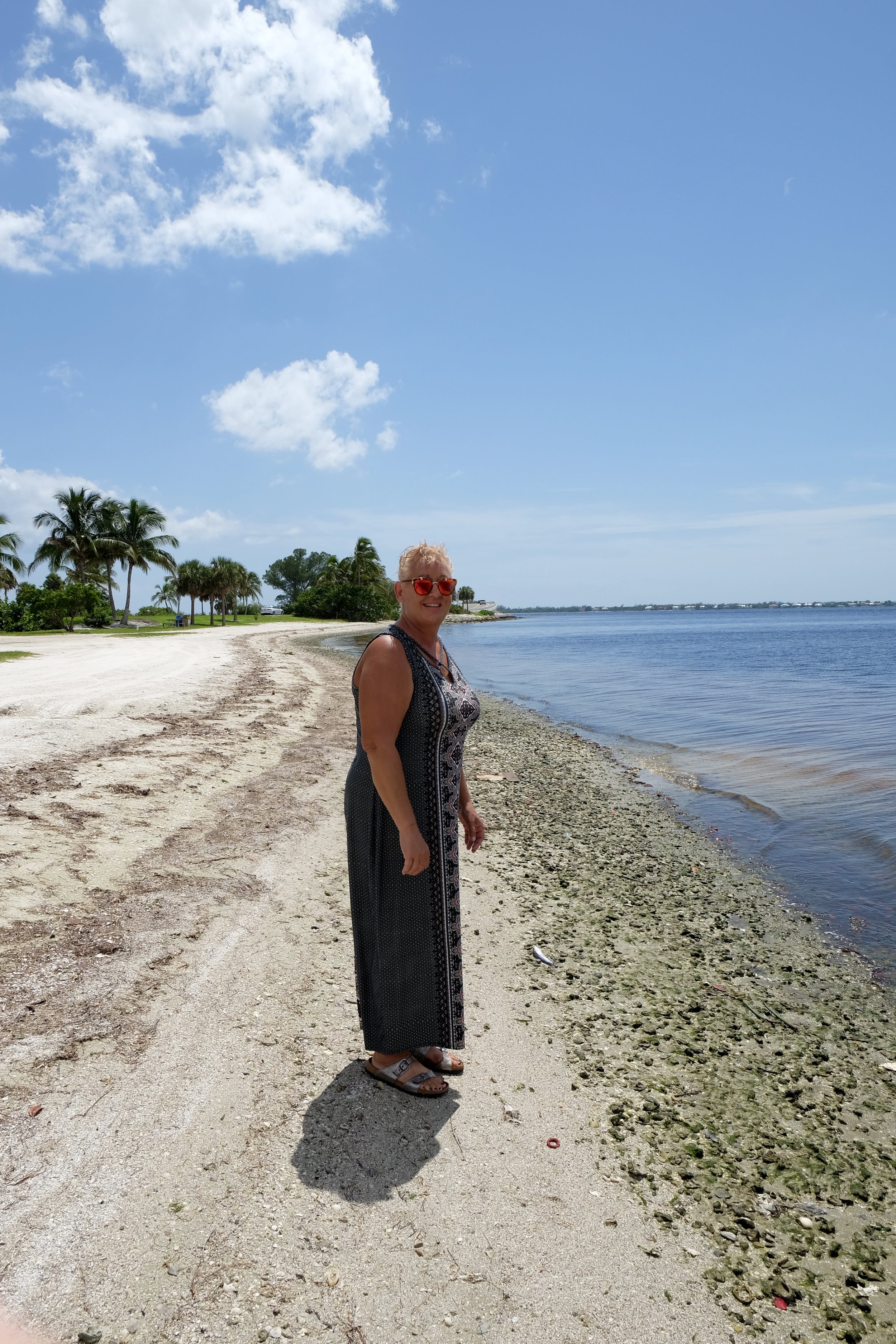
"Because they're not here, there's no one here to take. So that's a big, huge impact on my life and, you know, the way I'm able to do things. I can't fill up every day, cause normally I would fill up every day. Now, I don't need to fill up every day cause I don't drive anywhere. There's no riders; it's sad... Last night, just to stay helping out, I ate down there at the beach, at Fort Myers Beach, cause there's no one there. There's no one at Yo! Taco. It used to be packed, I mean 20 people standing there eating tacos. There was me, and another couple, and that was it."

"Right away. And it's just gotten worse. I went through my statements, and I was making, ya know, at least $600 a week, just on rides. And now, I'm lucky, I made $31 last night. And I did 9 hours, $31 on a Friday night... I was down on Fort Myers beach, I came back through Naples, and I got one ride, and it was $2.36. And you don't see anybody down there."

"I've picked up a couple Uber Eats, at a place called Sushi Sushi. There were two people in there when I went and picked up the food. And I said, you know, I parked where normally there's a zillion cars, well now they give parking away. You don't have to pay to park down there. And he told me, the bar manager said, at that time, in August, by August last year they had $90,000 in parking dollars. At that same day, they had $20,000. It's insane, it's impacting everything.... It's just, I think... There's a little valet guy that works at Shucker's, the cottage. He's not there on Friday night. He's normally there, and I mean he's like directing traffic. He's gone. You don't see the normal people that are at, like at Lani Kai, you know, parking cars. They're gone. There was nobody standing there. It's like, where are they all? Well, they're home."
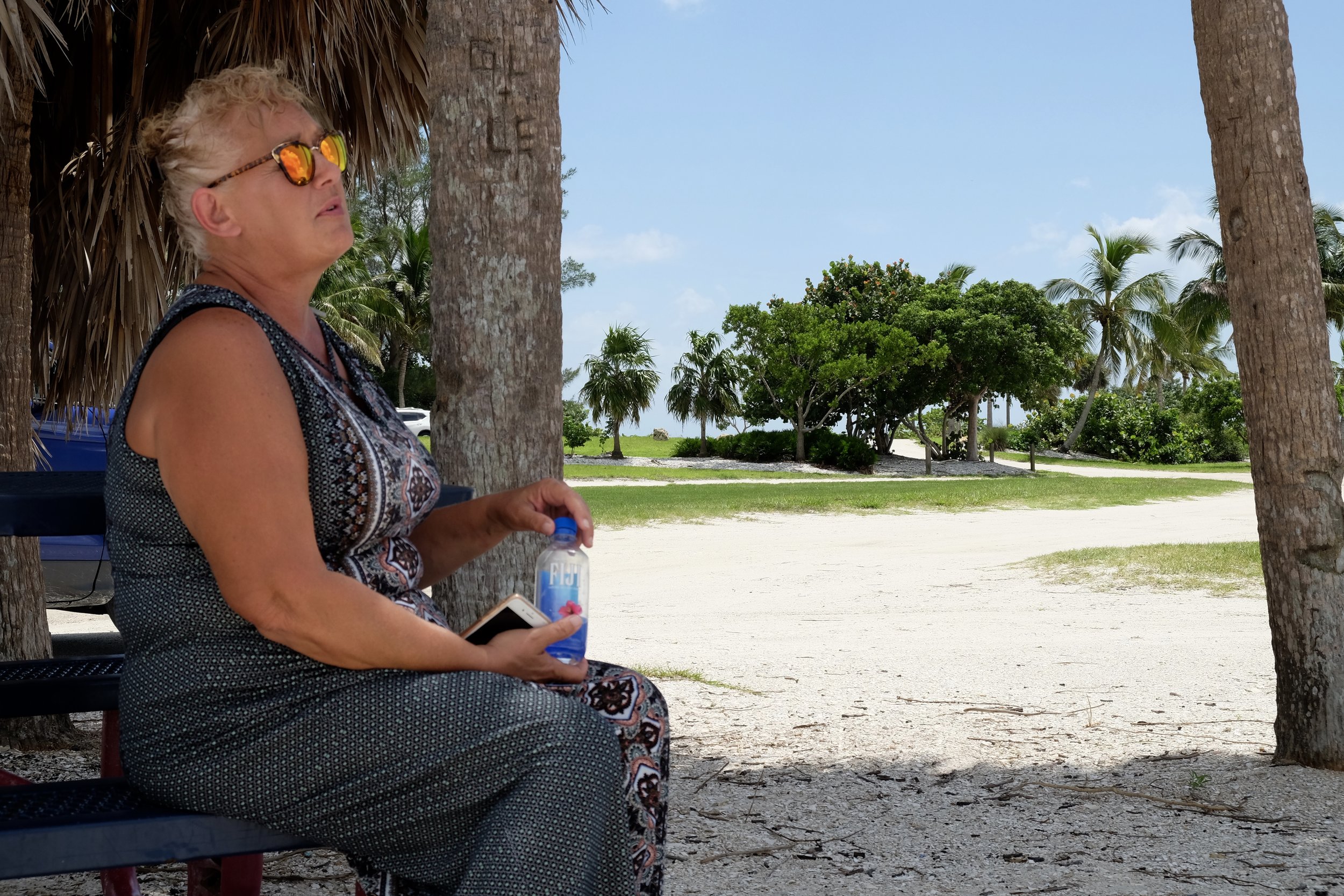
"On Wednesdays, the food bank, goes to Fort Myers Beach and gives out food. They go down there and they help people out, you know? That's how bad it's become. And I know, I know it's just gonna get worse, and that just scares me. Because I'm afraid they're gonna close businesses down, and they're supposed to open a great big Margaritaville Hotel. You know, like Jimmy Buffett. I don't see that happening when they say it's gonna happen. I think that's going to be on a standstill."
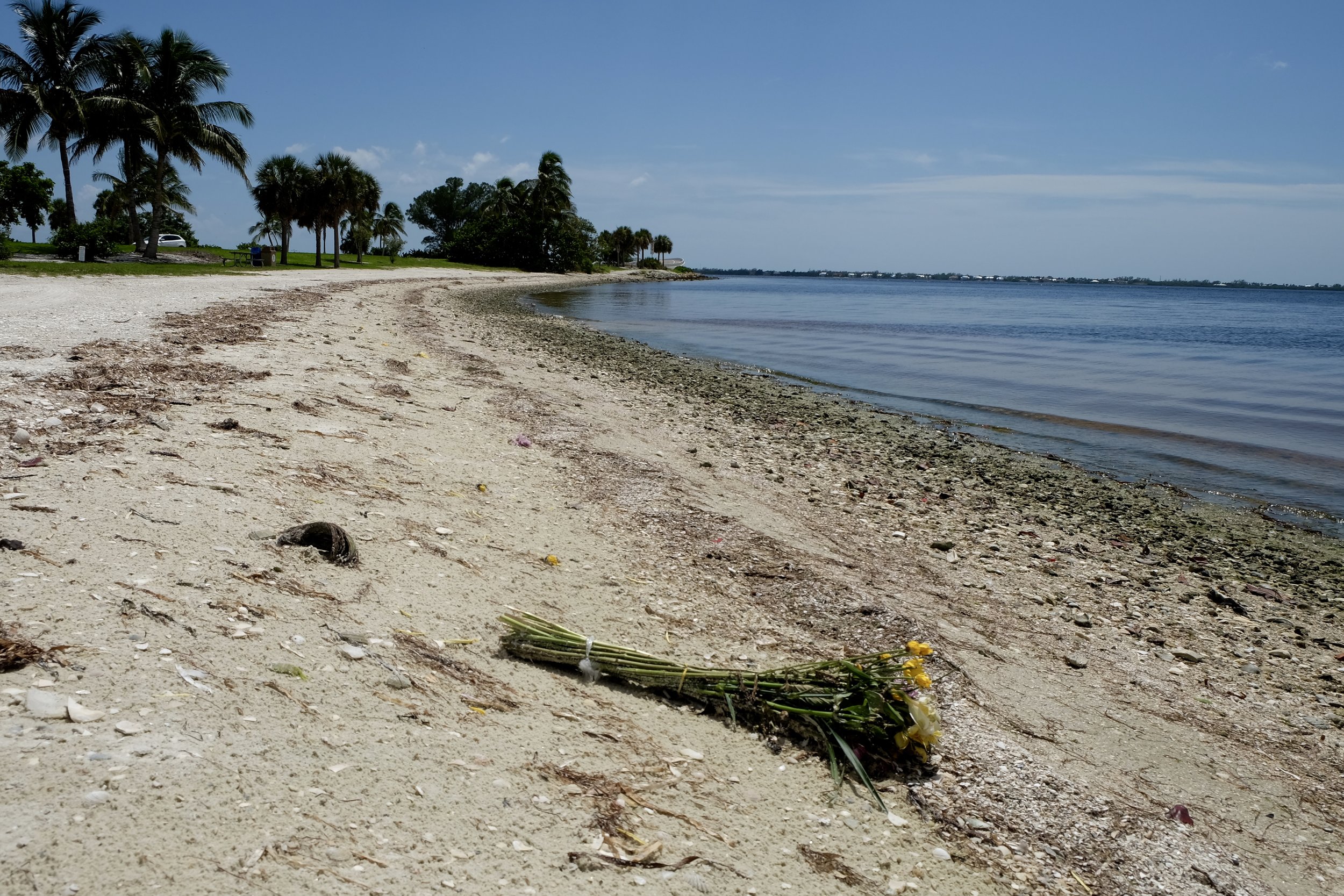
Some people have left flowers out of respect for the marine life being killed by all this.
Roxanne: "I moved here in February, because I wanted the ocean, I wanted the sun, I wanted palm trees and being able to go to the beach whenever I wanted to. And now, I don't go to the beach when I want to, because I'm scared I'm gonna get sick, I'm gonna see dead fish. You know, it's sad. It makes you want to cry. The other day I was crying just by watching the stuff that happens. I mean, I can't imagine living on a canal. You know, in Cape Coral. I just couldn't imagine that. I would leave, I would leave. If it doesn't change by February, I probably will. I'm gonna give it a year. And I said I'd give it a year just to see if I could make it through the hurricanes. This is a huge hurricane, this is worse than a hurricane."

Roxanne: "I'll tell you that I'm not real big politically, and I won't tell you who I voted for. But I will tell you, and I hope you do quote this if you do, I voted for clean water. That's what I voted for. And I want that, and I think the government, as you know Rick Scott had gotten... And I don't know if anyone else talks about him, gotten a lot of money to fix ten years ago... I don't think they're doing what they need to do. Absolutely not. I don't know how the Corps of Engineers can go home at night, after they released, and still keep releasing, knowing what's happening."
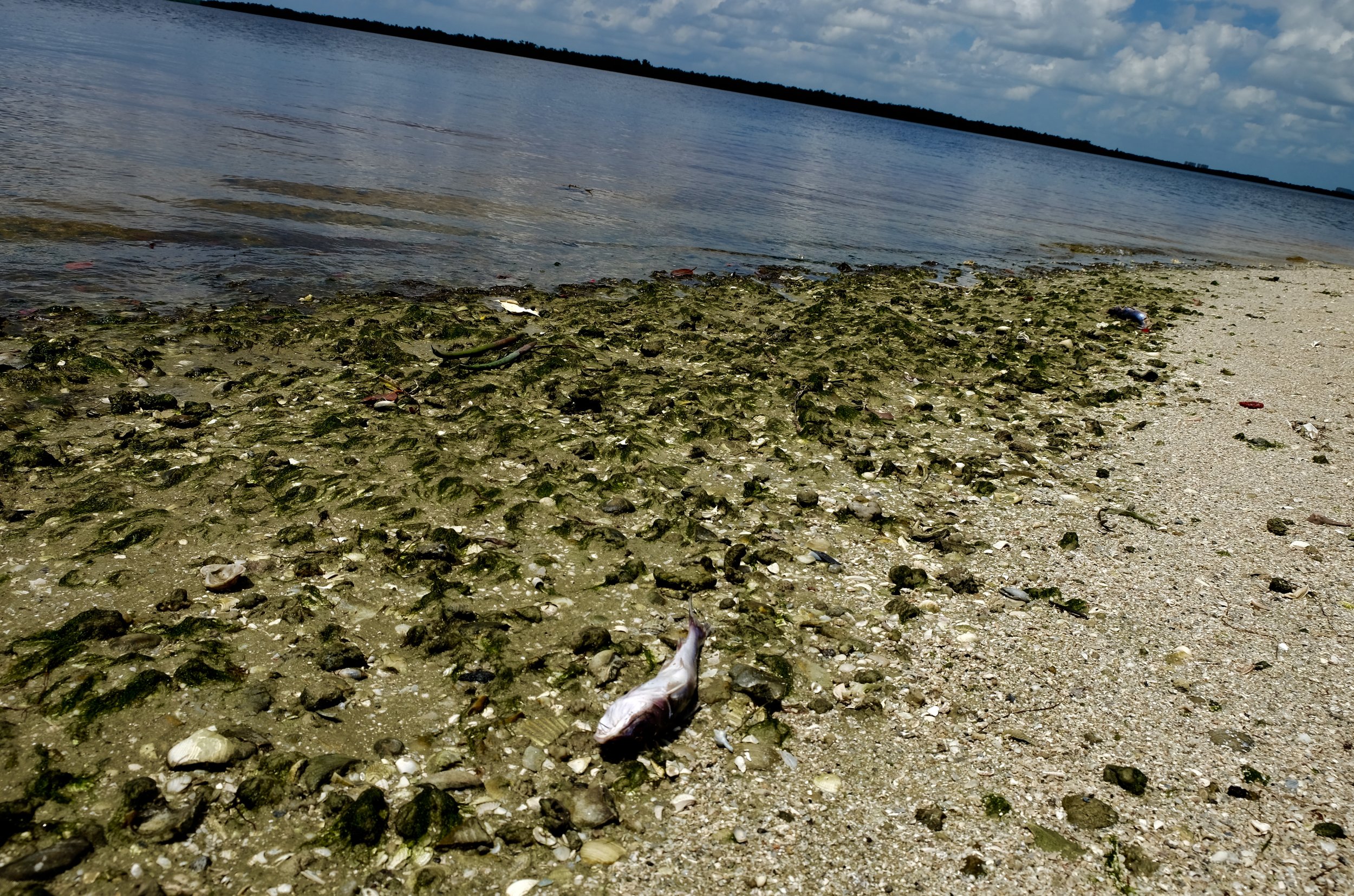
Roxanne: "How do you sleep, knowing that you're killing animals, businesses, people? You know, you're losing the economy. People are selling their homes, for less than what they're worth."
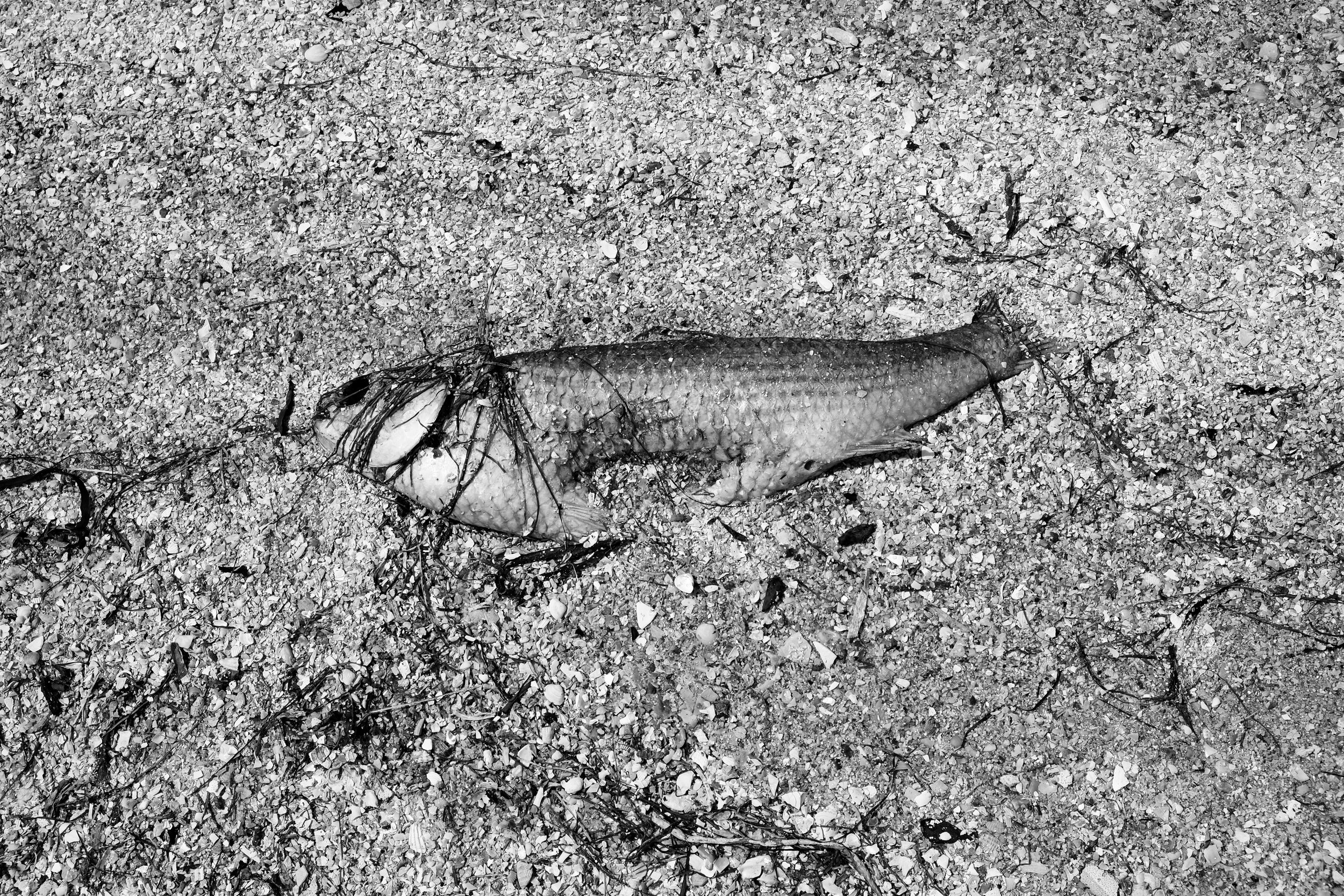
Dead fish were still a common site, though after many months now of red tide’s and algae blooms; fewer fish make it to shore. There just isn’t as much life in the water anymore.

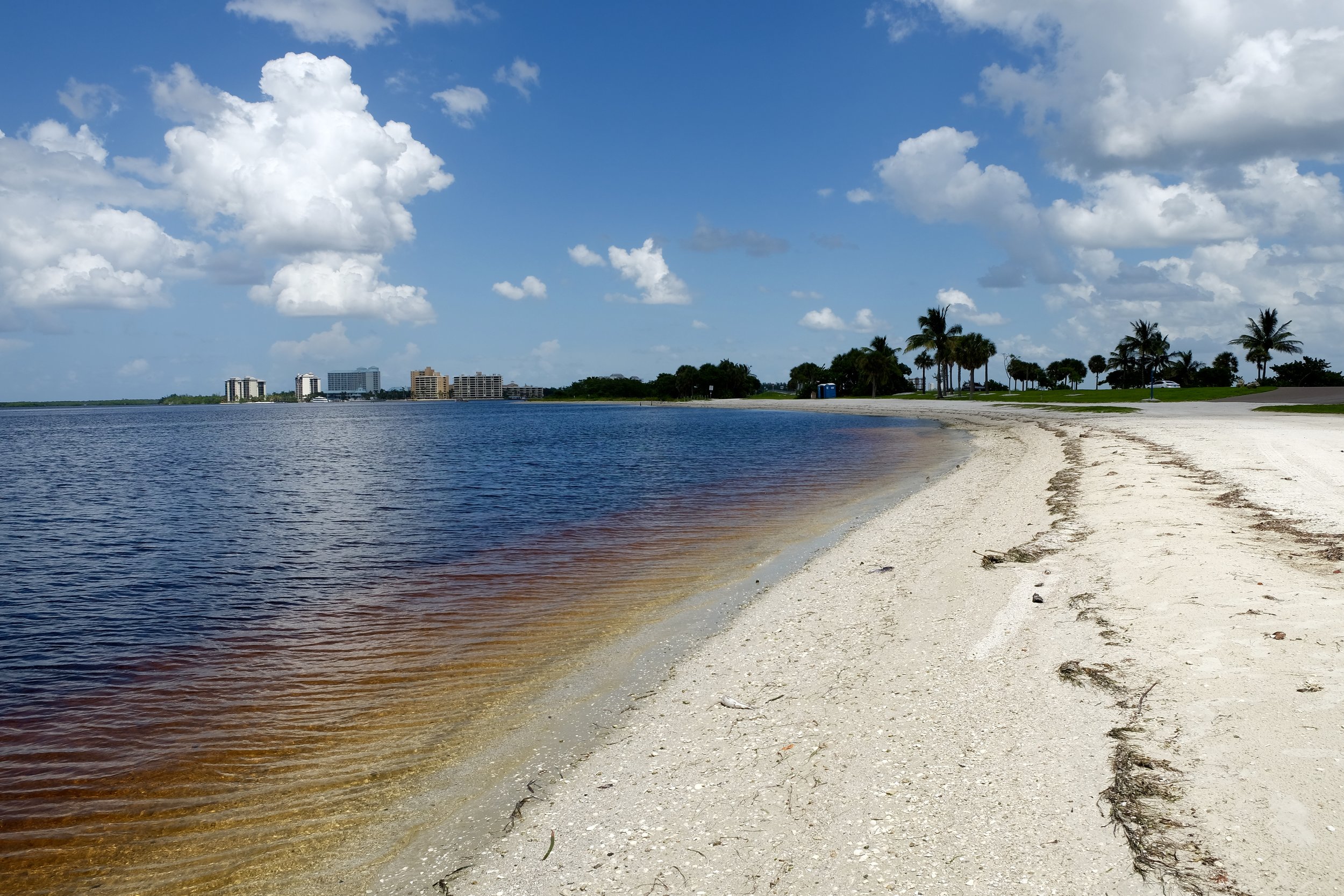
Roxanne: "When I drive across here, you see people everywhere. You see people out there swimming. I'm shocked there's this many boats. But you see people swimming, you know, walking their dogs, and fishing down there on the causeway. Well you know where they fish. They haven't been there in three months."

You can see how reddish brown the water is here from the red tide.

Underneath this sign post, is a small paper sign, letting people know about the red tide. You can almost miss it if you’re not looking for it.
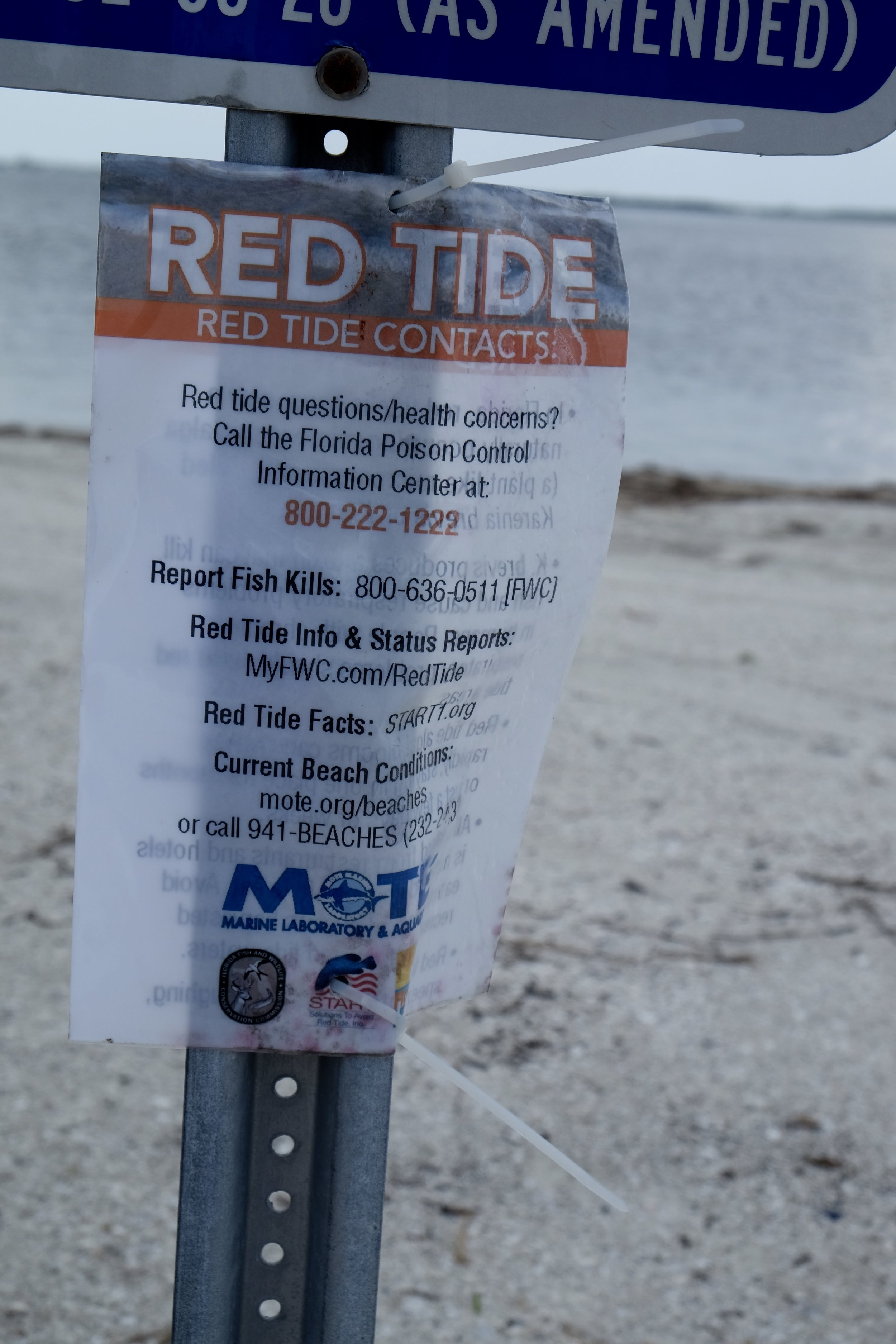

Labor Day Weekend, we’re the only ones here.
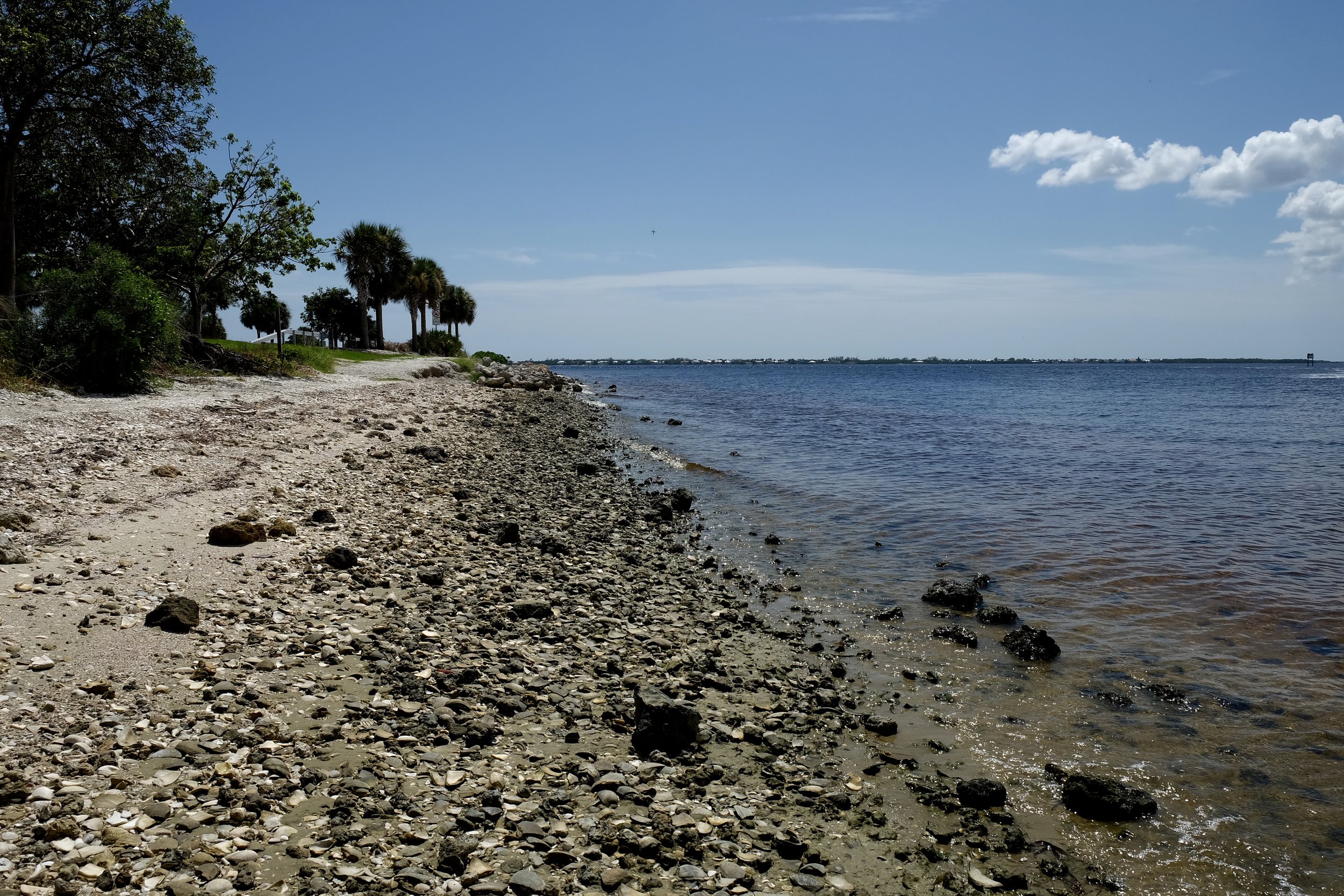
Roxanne: "Fix the dam, come up with another solution besides dumping that out. I know everyone says Big Sugar is to blame; we're all to blame. I don't have a yard where I fertilize, but that's still my responsibility to be clean to everything out here. And it is a lot of everybody's fault, not just Big Sugar, it's everybody. We need to learn how to fertilize our yards and do it the right way.... The thing that I've always said when I first learned about this is, "Why?" I've worked with engineers in the past, and they're very smart people... I know the Corps of Engineers is different than what I work with, but still they're engineers. Why can't they come up with something? They're very smart, why can't they come up with some kind of filtering system, or something to fix that water before it gets released?"
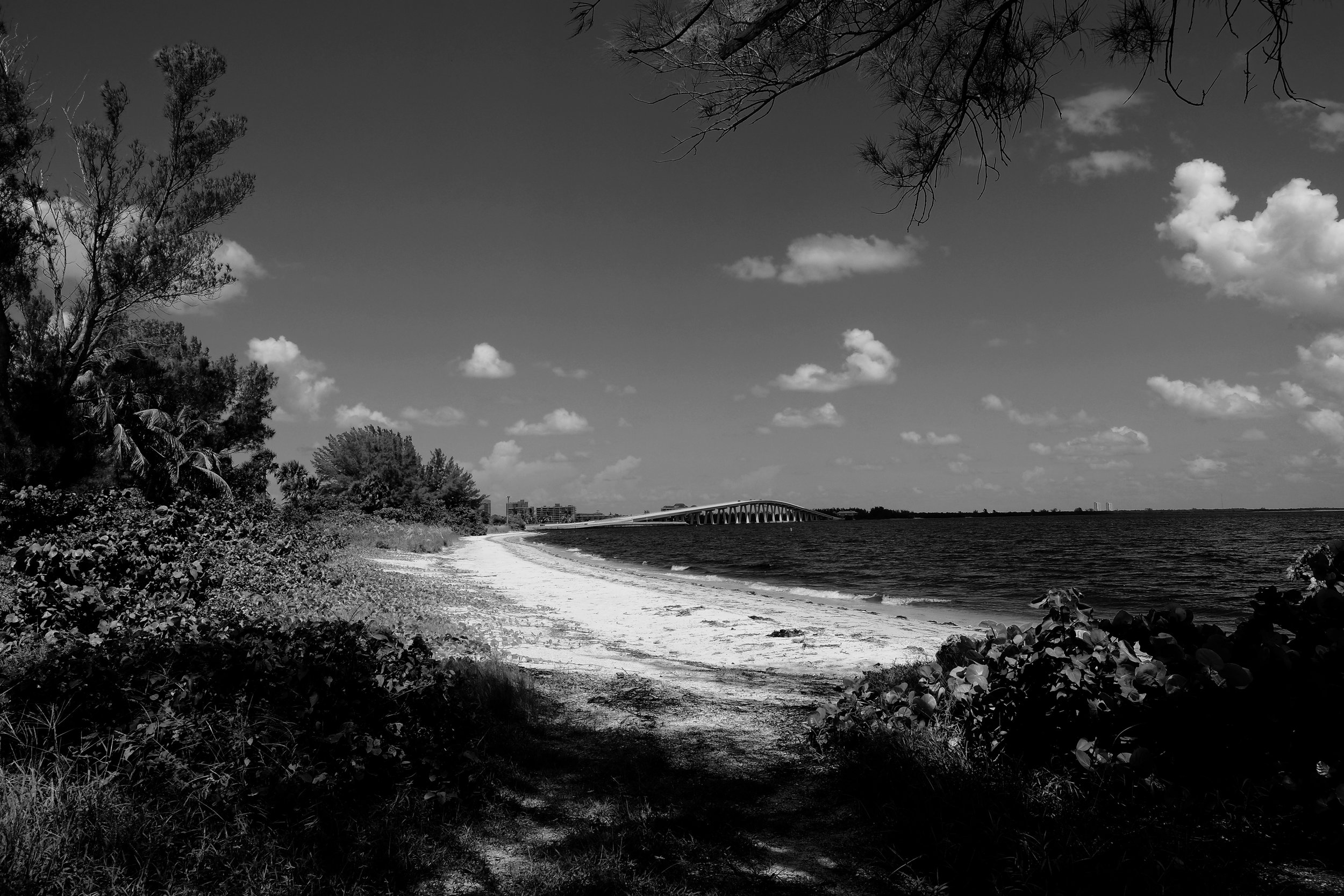
Roxanne: "I want to bring my family, my daughter and her kids and her husband here. I want to bring them here in December. For Christmas, to enjoy the water and that's not happening. I'm not having my grand babies swim in this, no way. Absolutely not. Like In February it was crystal clear water. Yeah, then I'd have them here [then], but not now. No way. No. It scares me. I would hate to think the stuff that would happen."

From the road, you can smell the toxicity in the air. Once you get to the beach, it’s just a sea of red, lined with dead fish.

Roxanne: "Somebody left this shelling group I'm on because it's too political. Well we gotta have a little bit, or we're not gonna get anywhere. We can all talk as much as we want but we do need to have somebody backing up our clean water. And I hope that happens in November, I really, really do... We need something done; we need some change in a very bad way."

Staff Attorney for Save the Manatee, Anne Harvey Holbrook: "Both red tide and other harmful algal blooms kill wide swaths of seagrass, reducing available manatee habitat in the future, and these blooms may have extremely far-reaching effects."
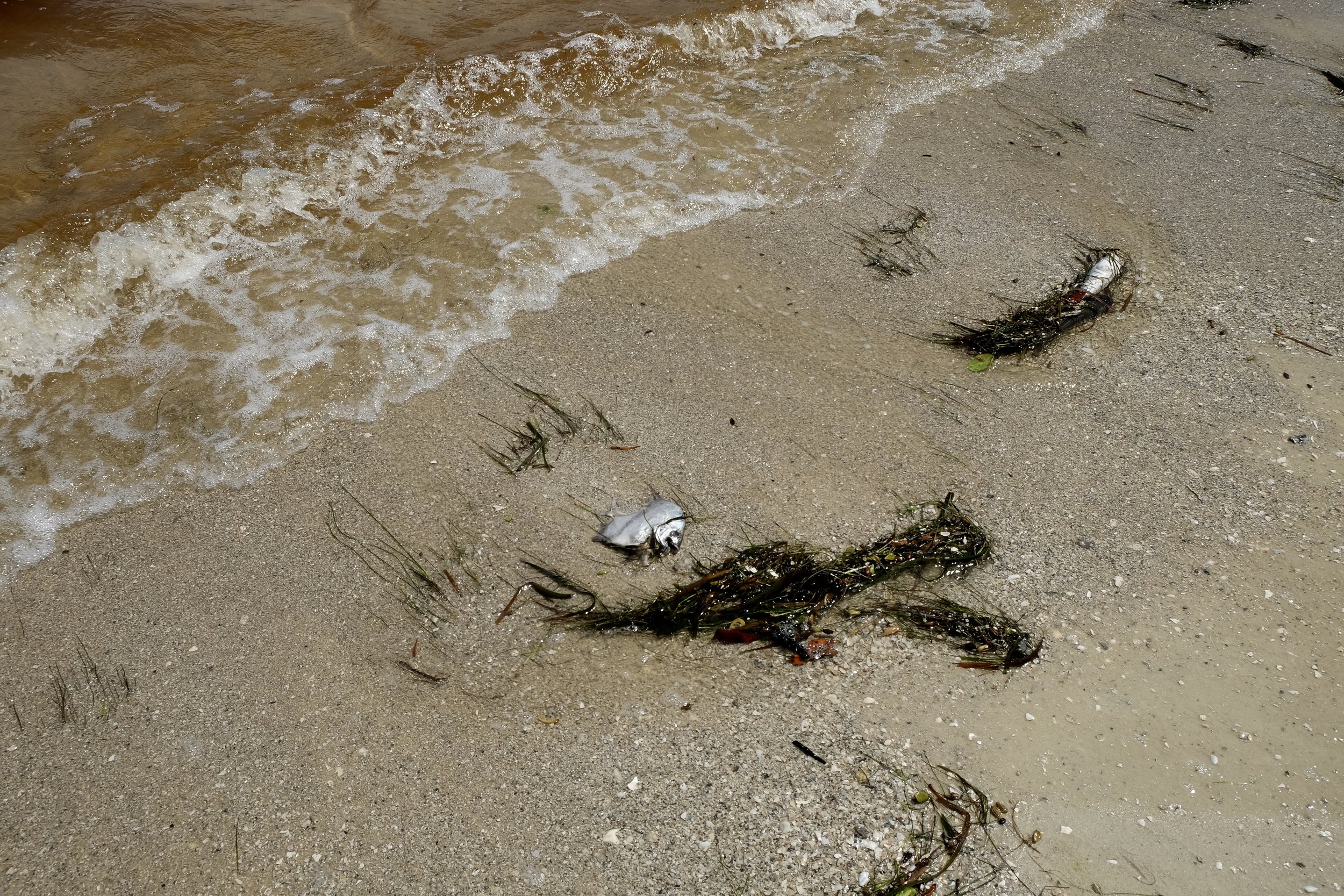
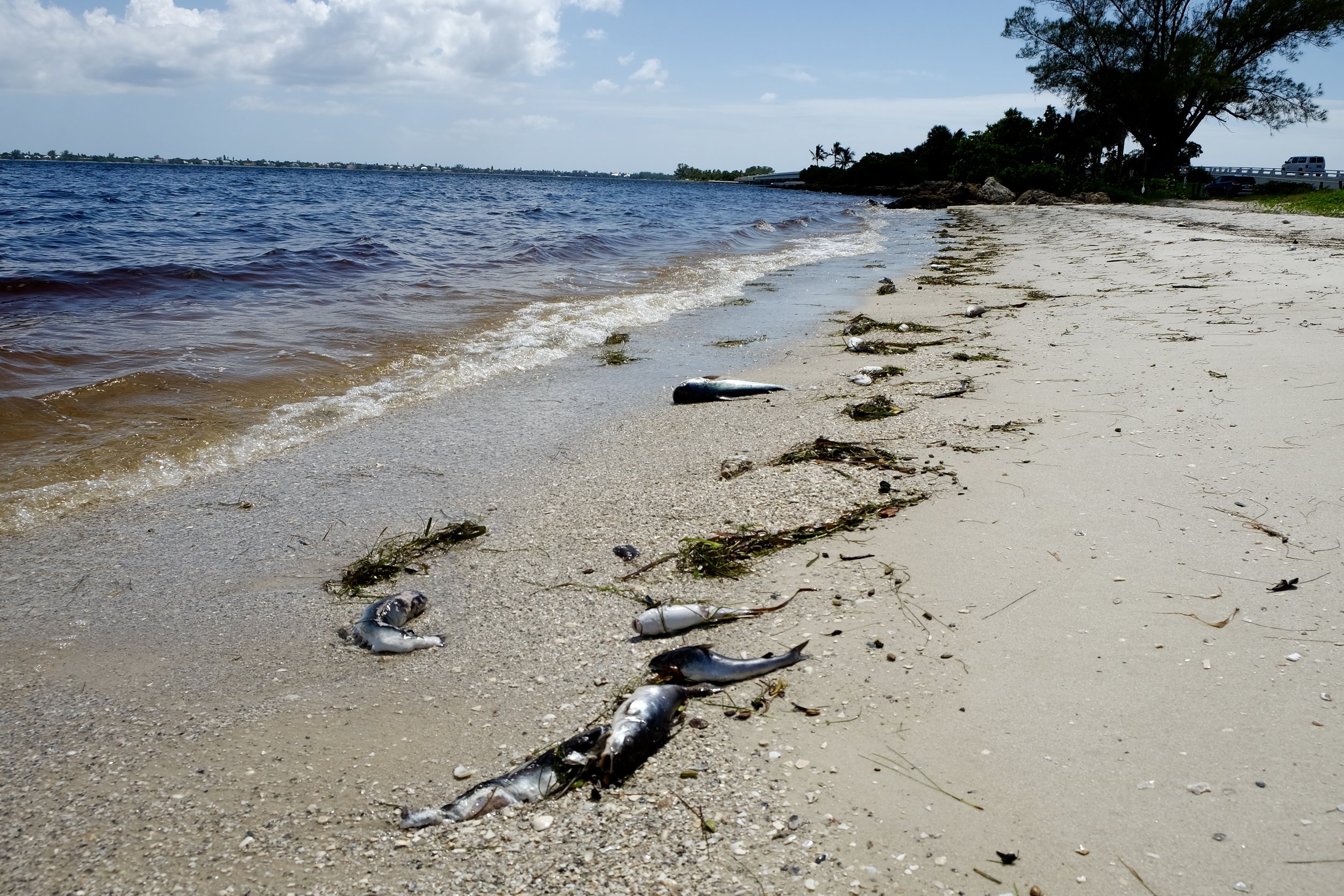
Fish 6-12 inches long dot the shoreline.
Staff Attorney for Save the Manatee, Anne Harvey Holbrook: "Florida has naturally oligotrophic (low-nutrient) waters. In terms of biogeochemistry, most of Florida’s waters should retain their natural clarity. It is the water clarity and lack of algae that has allowed Florida’s seagrass and coral reef ecosystems to thrive in the past. The vast majority of nutrients in Florida’s waters have an anthropogenic source." [meaning - we are the cause of this]


Recently washed up, dead fish, at Sanibel Island.
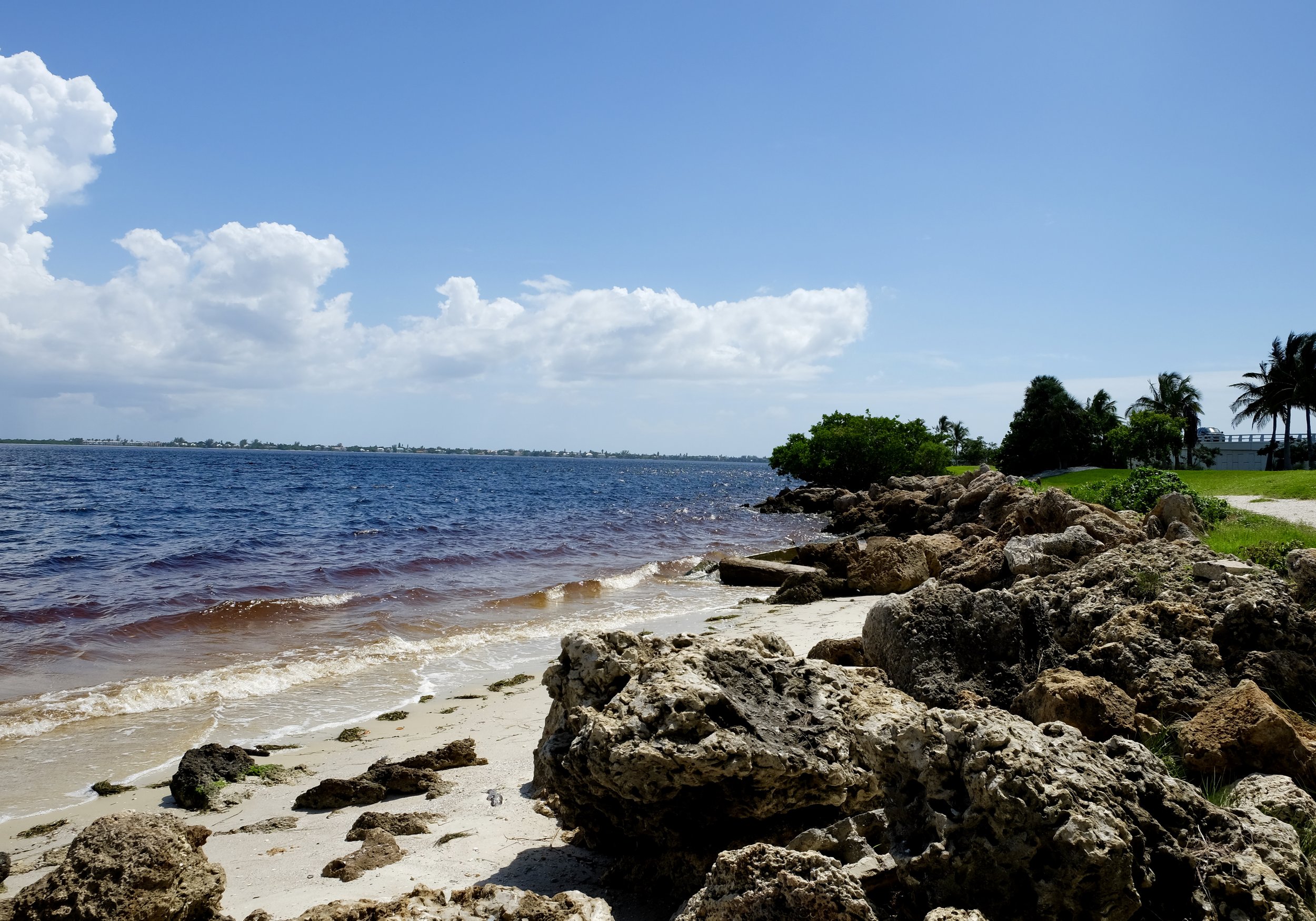
Beyond the rocks, you can see just how red the water is on this side of the island.
Staff Attorney for Save the Manatee, Anne Harvey Holbrook: "The primary drivers behind the especially catastrophic impacts of this red tide are land-based nutrients that create a vicious cycle: red tide enters nearshore environments where nutrients from Florida’s rivers fuel the bloom, which kills sea life, which decomposes and releases more nutrients into the water to feed more red tide. With continued poor management of Florida’s land and water resources, we are likely to see more lost summers like this one where cyanobacteria and red tide kill sea life, drive away tourism, and pose risk to human health."
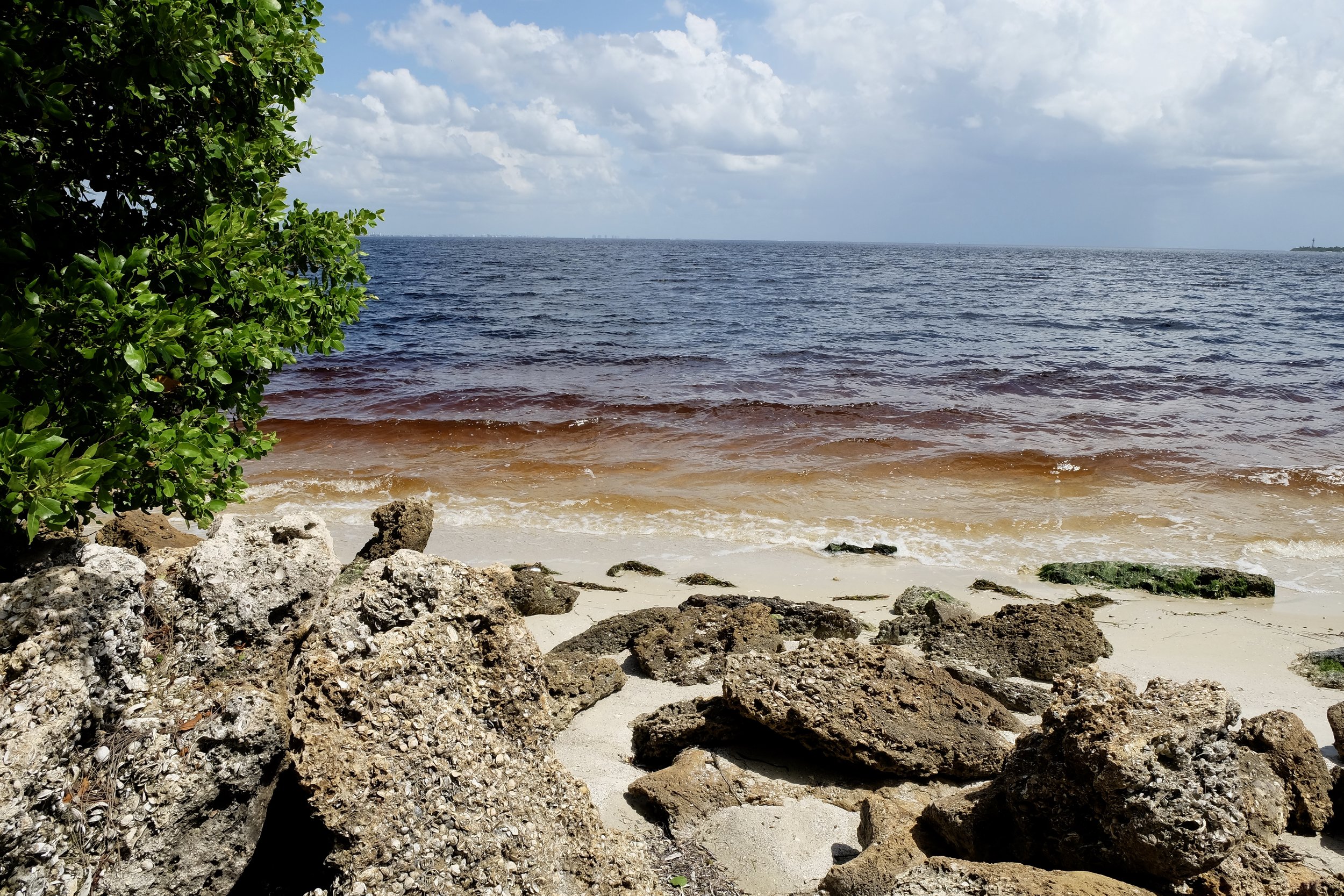
Beyond the rocks, you can see just how red the water is on this side of the island.

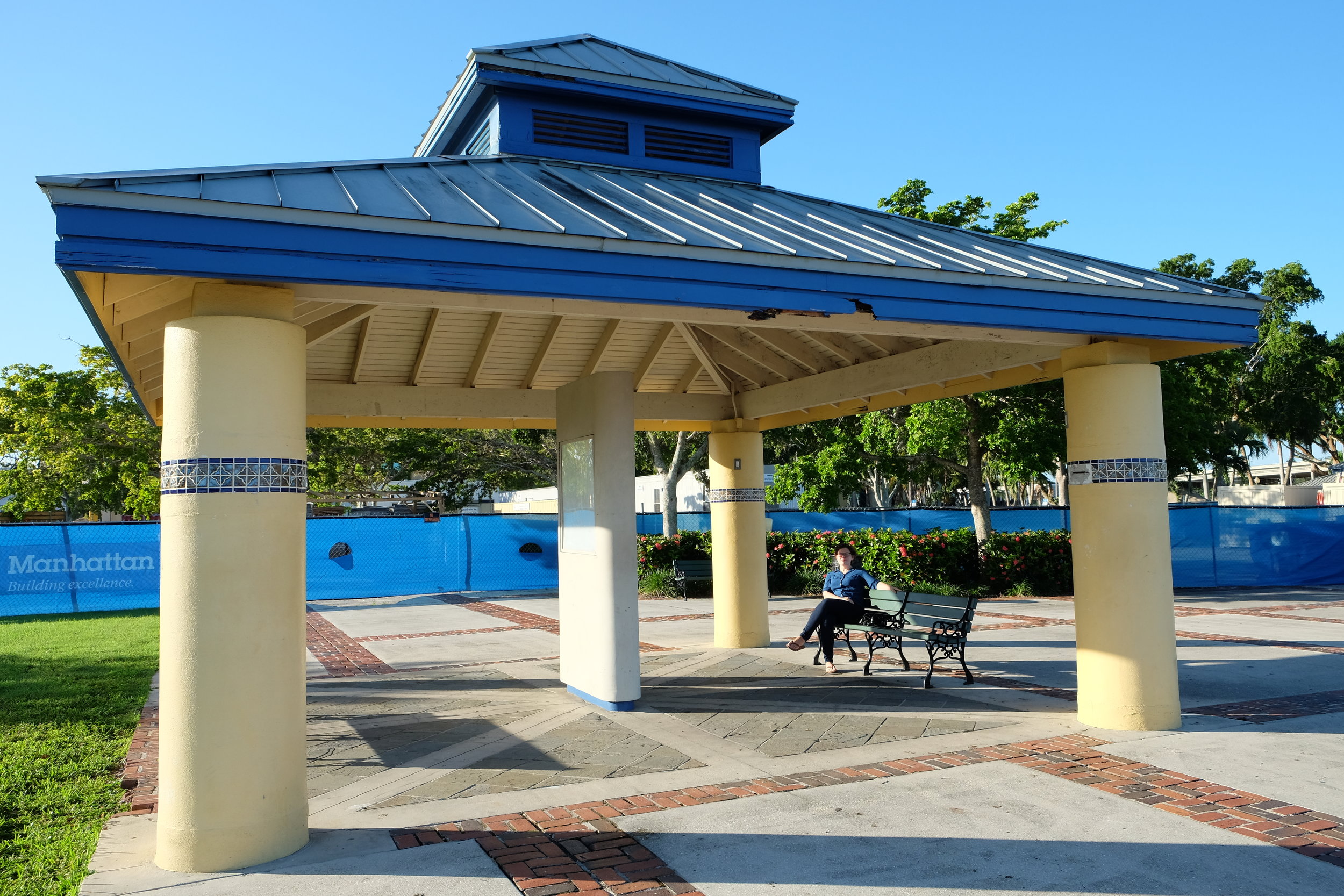
The whole park was nearly empty on Labor Day Sunday.
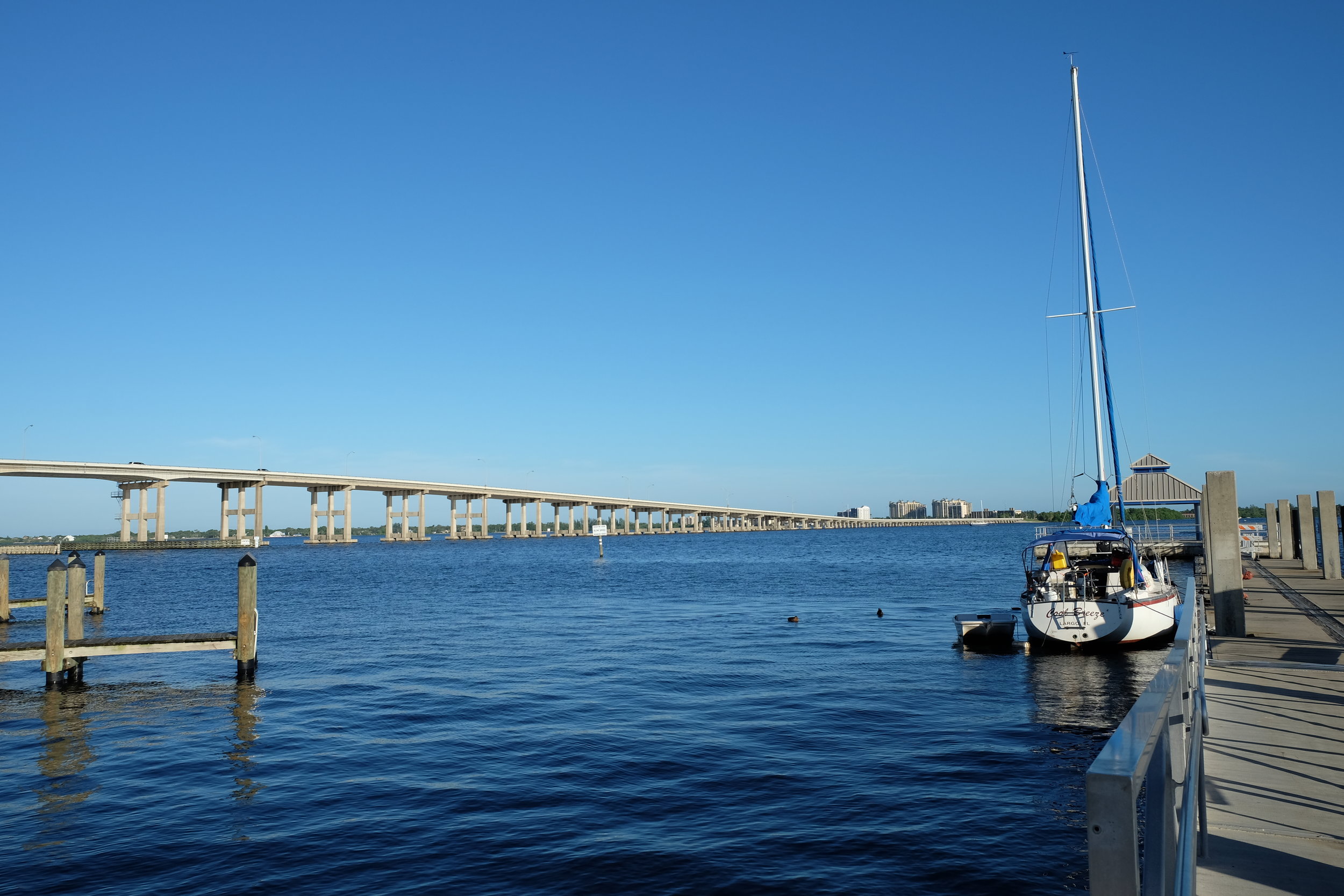
You can see the bridge that takes you to Sanibel from here, overlooking the Caloosahatchee River.

Ducks are hanging out by this pier. Beyond it, is a very reddish brown Caloosahatchee River. This is the tributary the Army Corps of Engineers has been using to discharge polluted freshwater from Lake Okeechobee.




Many businesses were open, though from looking down these blocks, it looks like everything is closed. Some locals made it a point to go to these businesses, but overall, businesses are hurting here.
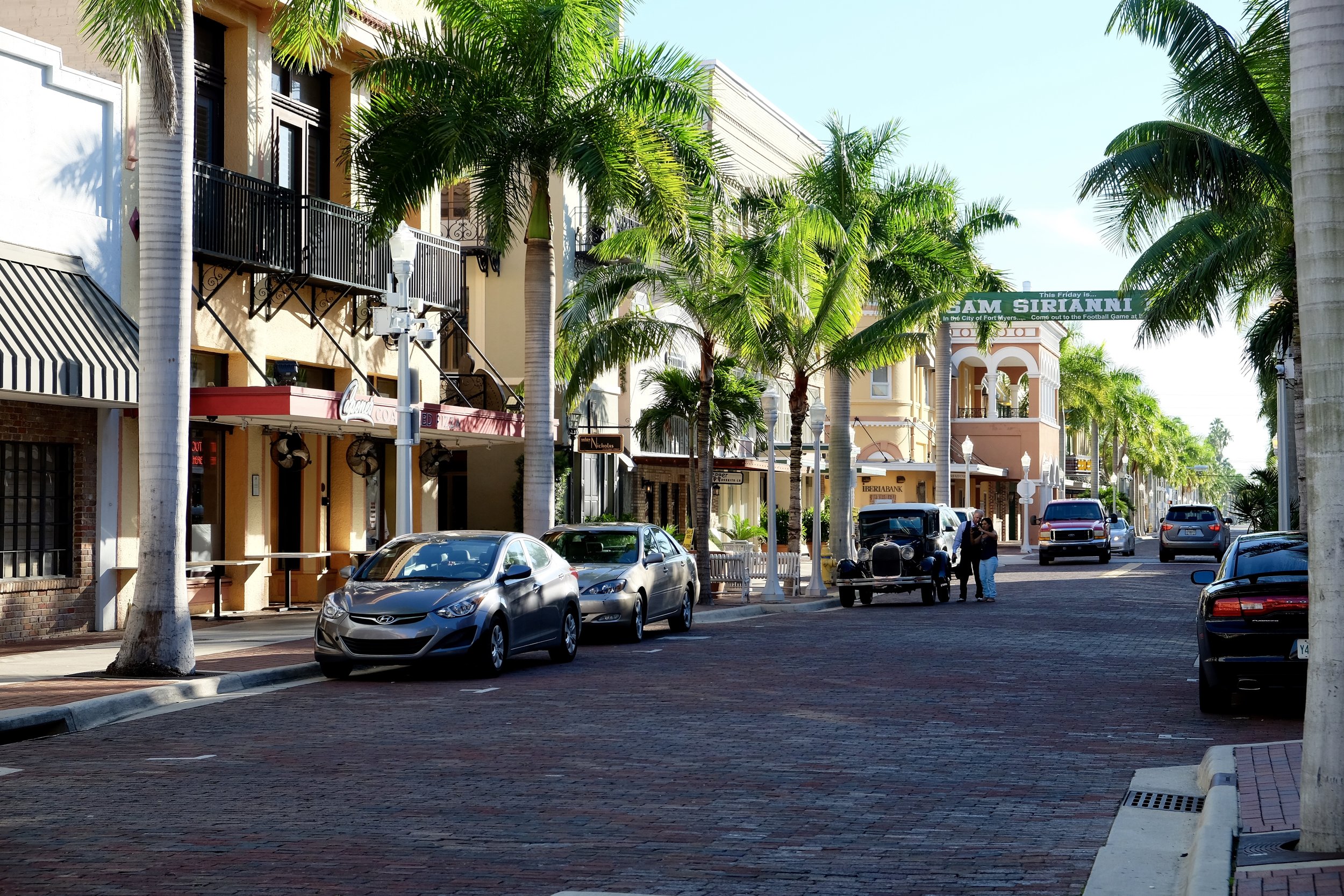
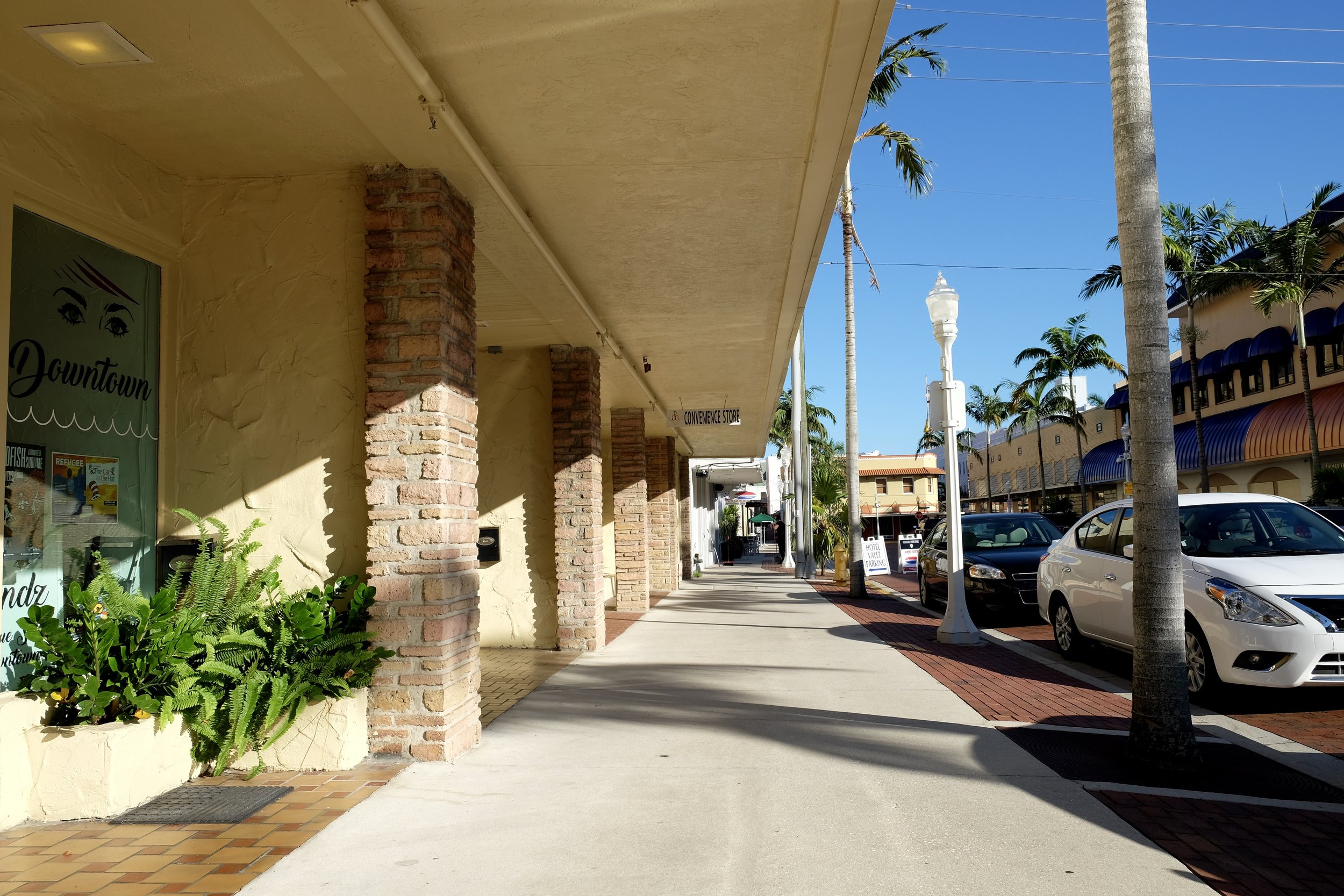

While traversing through various areas, we would occasionally come across these protest signs - calling on local government to do something different about those Lake Okeechobee discharges.
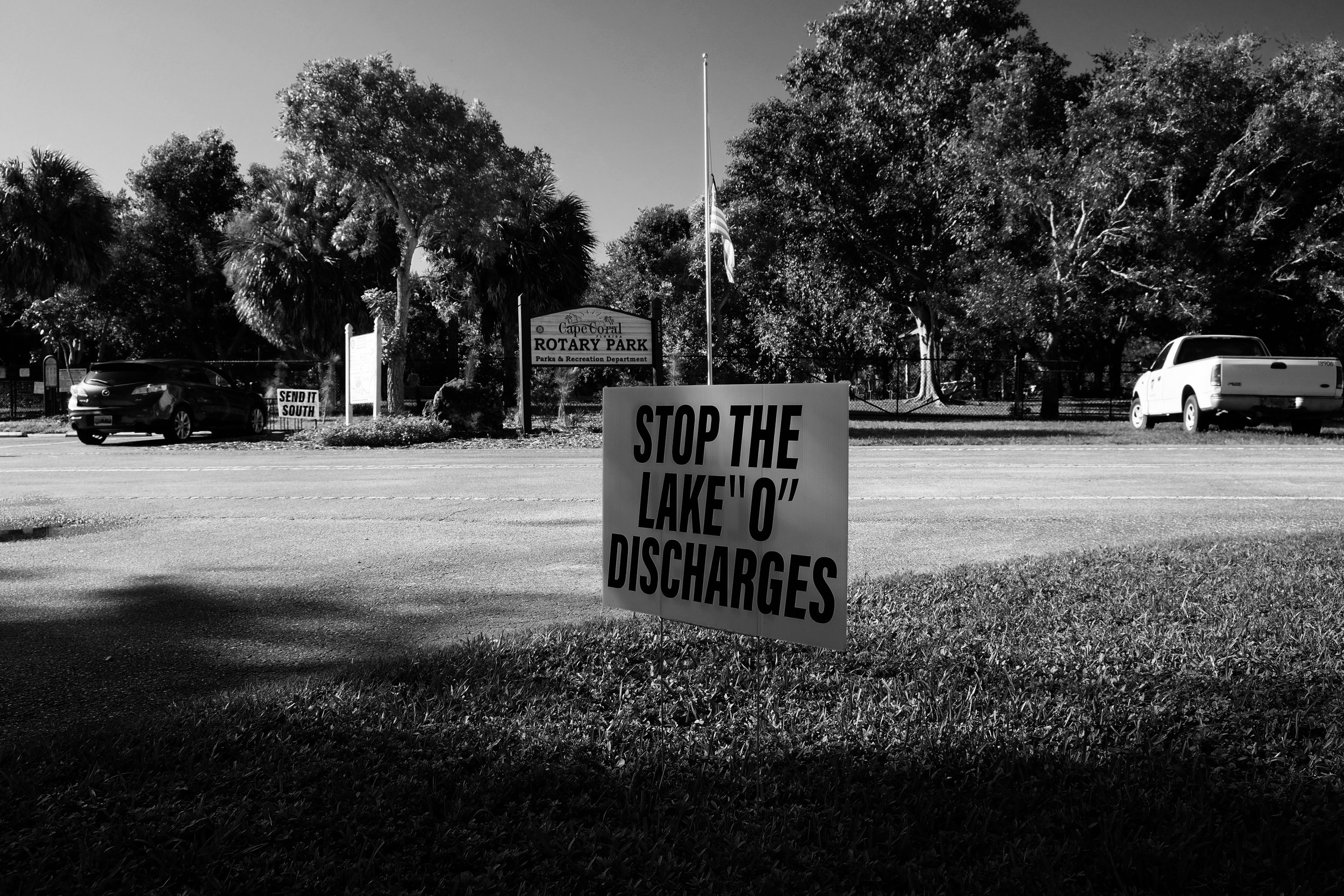







































Hover your mouse over the image to see interview quotes and descriptions.
Brian David | Estero Bay + Matlacha
Brian has been living in the Fort Myers area for 20 years, spending the last 14 years as a fishing guide captain throughout South West Florida. With each algae and red tide bloom over these last few years, Brian has seen his business suffer and the ecosystem become unrecognizable. This year has been particularly devastating, where in the past you could go sight fishing in that Caribbean clear blue water, now it’s a dark hue of brown, red, or green; dead fish float in the canals and wash up on shore, while other dead marine life drops to the bottom and feed brown algae - perpetuating the cycle of death and devastation. When he does go guiding, the fish he and his groups do catch are released, for fear of what bacteria they may possess from the blooms.

Brian being interviewed by Michelle Chasteen, our Director of Communications.
Brian: "Basically June 3rd when they opened the gates. May 31st our water was actually starting to look pretty decent, clean, could see the bottom in three, four feet. Make out your edges of your grass flats and your sand holes. They opened it on June 1st and by June 3rd it was over. It was back to what you see black water. Then the red tide blooms came, and it's been going on ever since."
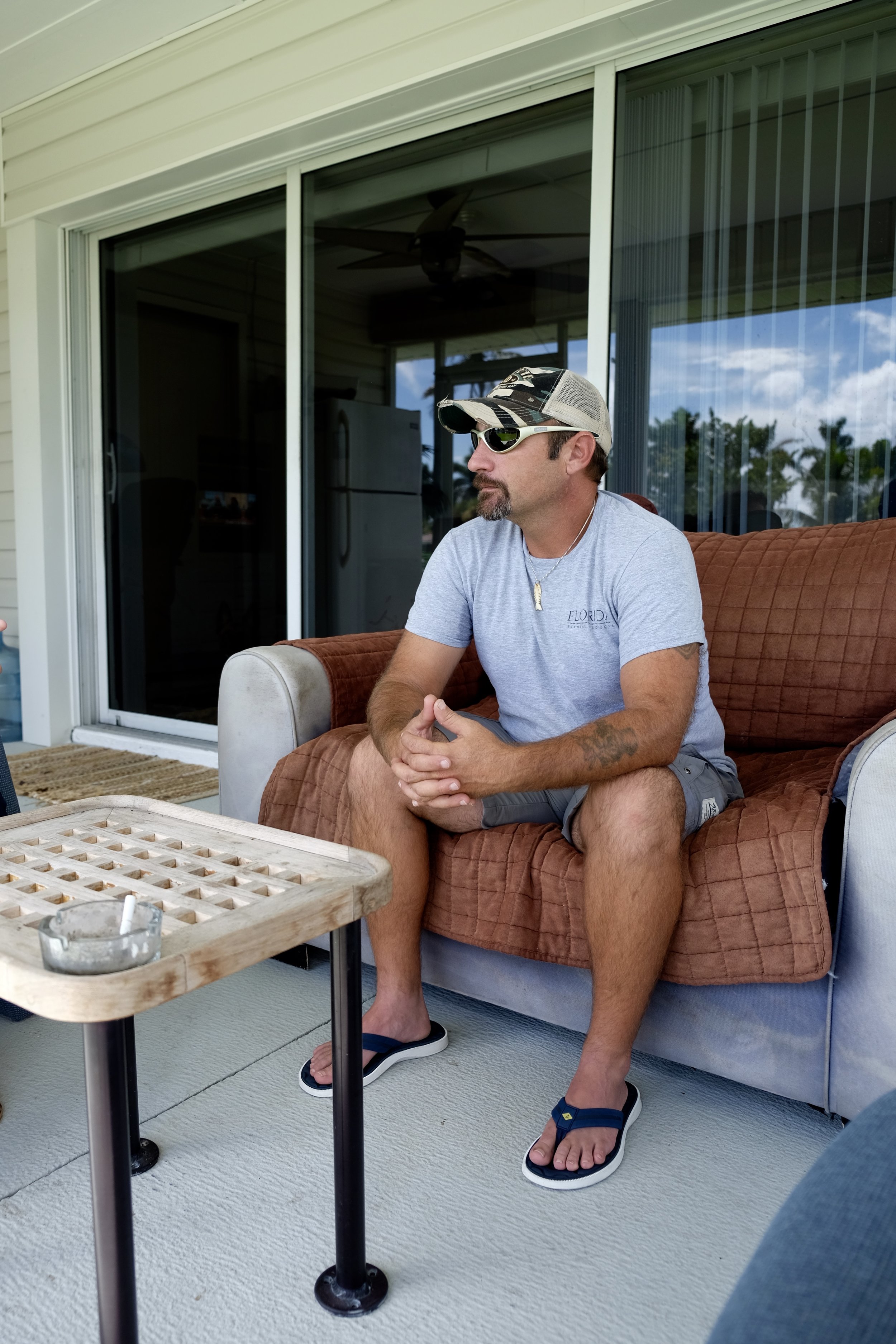
"It's gotten worse. They started dumping more water last Friday. They actually opened it up more and dumped it more. These fish out here, these are not from the original red tide. These all died within the last couple of days or they wouldn't be floating. All the ones from the original already done sunk and they're on the bottom rotting, which that's what fuels the brown tide or the brown algae."

Brian throwing a frisbie to his dog, he won’t let her go in the water anymore.
Brian: "I wouldn't let my dog. She grew up on this water. All the time we go out to the sandbars on low tide and I let her run, and swim, and throw a ball. We haven't been able to do that since June, since they started this, because I won't let her get in this water. I don't want to get in this water. Nobody should be in this water right now, because they don't even know what's in it. That's the scary part. They won't tell you what it causes. They've kind of hinted around, but they won't come out and tell you. They won't close the beaches. FWC, just a couple days ago, closed snook and red fish to catch and release only. I did that starting the 4th of July myself. Told all my customers we're catch and release. That's it. We can't keep fish. They should have done it almost two months ago. They just now closed it. The whole federal government, state government has completely, completely dropped the ball on this whole situation. They want to stick their heads in the sand and well, if we actually address it, then we have to do something about it."

Martha: "You've already kind of alluded to this a bit, you've spent so much of your life on the water. What makes these recent algae blooms and red tides so different in your opinion?"
Brian: "The extent, the severity. I've seen red tide numerous times. That's not anything new to me, but to have it span 150 miles of coastline just on one coast, not counting what it's done on the east coast. You're talking area from basically Naples to Tampa Bay. You're talking out 10 to 20 miles, which accumulates to an area about 3,000 square miles of toxic dead water. That's not normal. That's not natural. That is pure environmental pollution at its finest. This isn't grass clippings, and leaky septic tanks, I'm sorry, it's not. This is straight out industrial pollution. In order to cause this type and severity of damage, this is straight out industrial... You've got to remember almost 10 years ago, we voted to buy that land back. It sat on the governor's desk and he didn't sign it, and it expired. If we would have bought that land, and would have started these projects then, we wouldn't have this problem now. The natural watershed is north to south. The Everglades are drying up, the river grass is dying and drying up, but they won't send it south because there's sugar fields in the way. What's more important? Sugarcane or millions of people's human health and safety?"
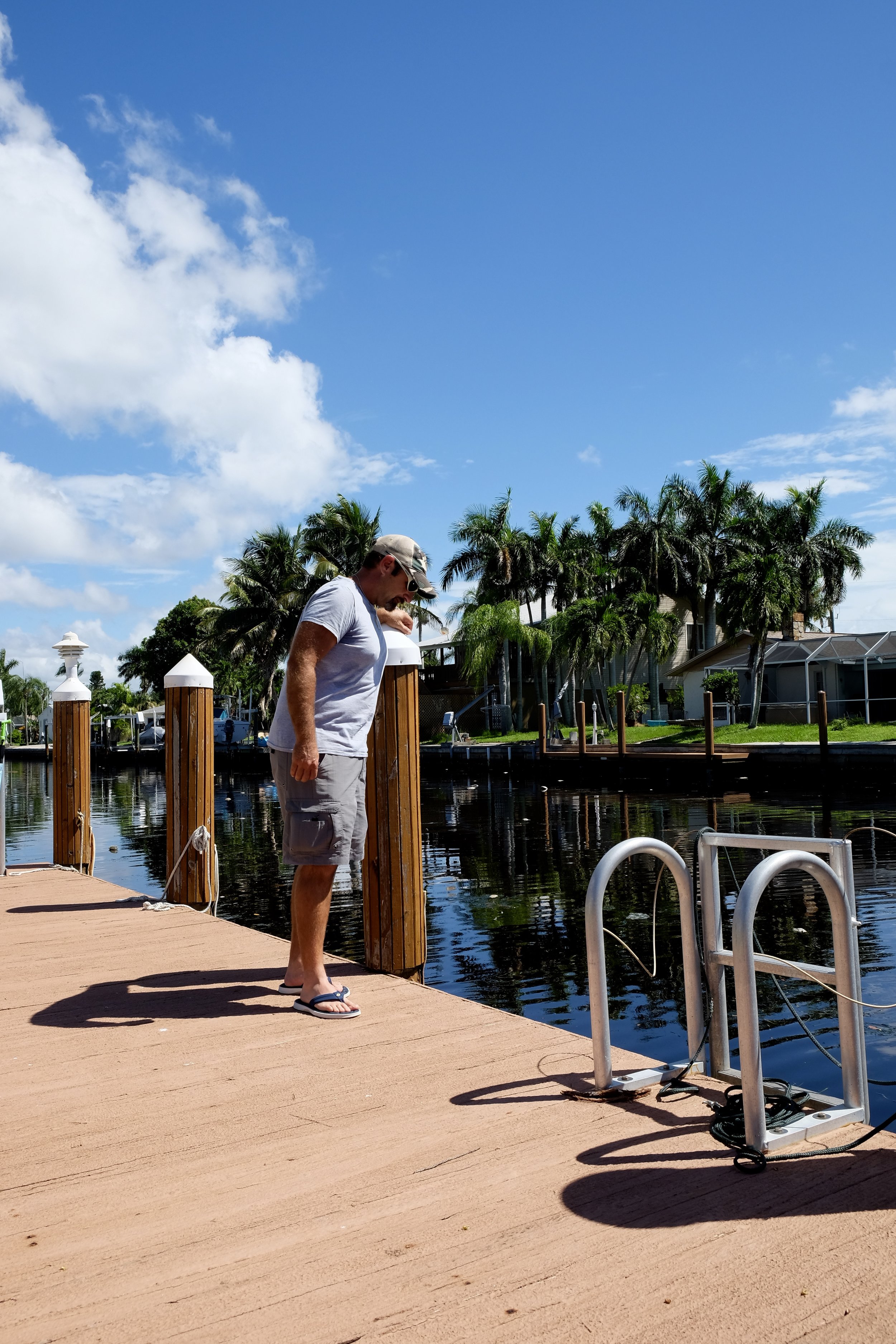
Brian on his dock, you can see how brown the water is behind him.
Brian: "The east coast, they shut down Bathtub Beach and a few other beaches there around Stuart. Over here, business as usual. I still see blue crabbers out there pulling their blue crab traps. To me that's a concern. I wouldn't want to eat anything. I mean, there's a dead horseshoe crab right down there right now. Horseshoe crabs have been around since the dinosaurs. When they start dying, they live on the bottom. They're not in the water, they're on the bottom…. Labor Day weekend you go to the beaches on Monday, you won't see nobody. I mean Labor Day weekend, there should be not a spot at that boat ramp. Any boat ramp around should just be packed, always is. I honestly try to stay off the water because it's a mad house out there. You drive around and look at the boat ramps, there's nobody out there. The beaches, there ain't nobody either."
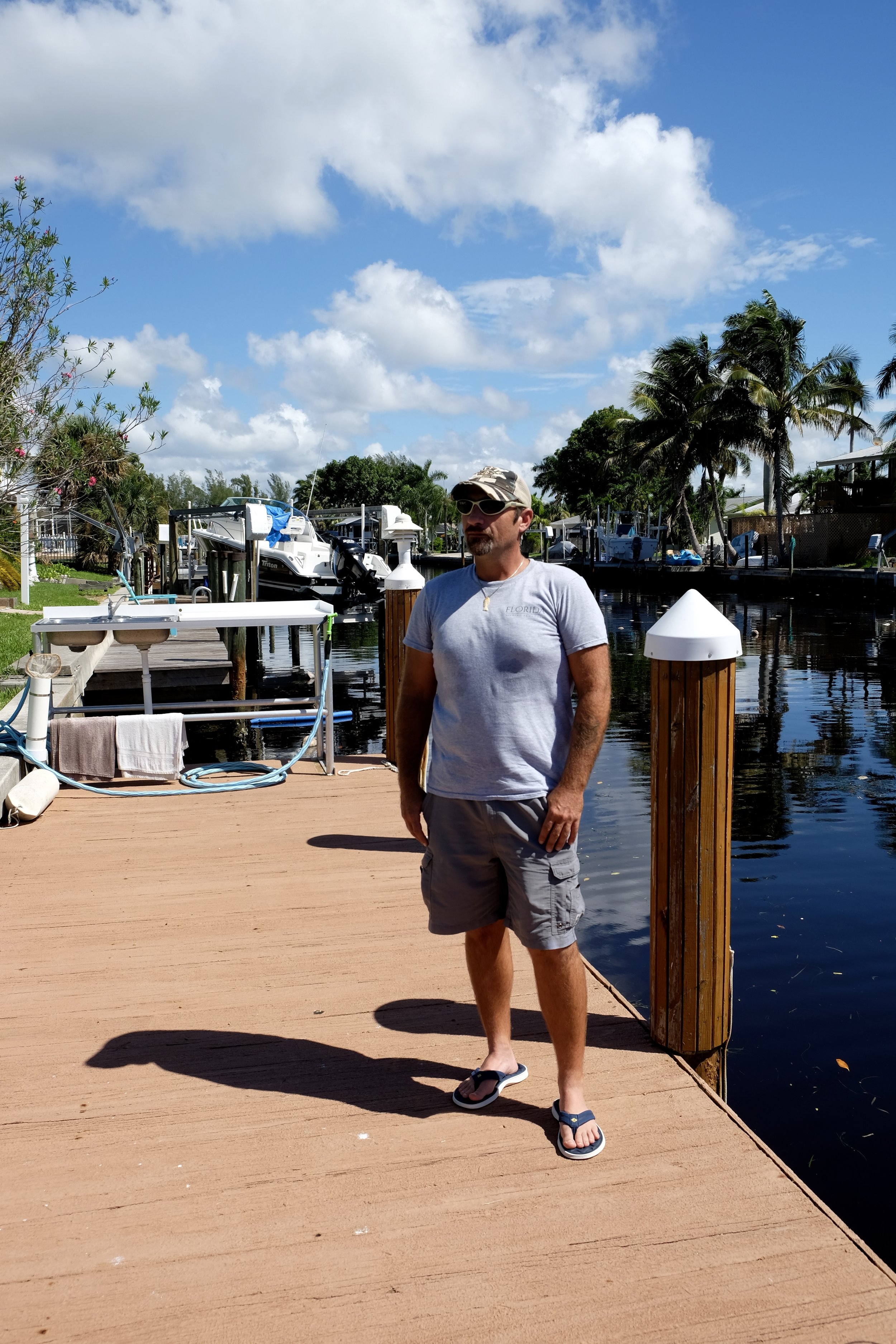
"You're talking over 400 sea turtles. That's just what they've counted. How many more are dead out there? Some of these turtles that washed up on the beaches dead were over 100 years old. I'm kind of soft on the turtle, but I like the turtles. I think they're phenomenal. An animal that's over 100 years old and you just killed it for what? For another dollar in your pocket? Come on. I thought, and this is the part where I'm just beside myself. I thought as a species, and a country, we had evolved past destroying our own environment for the sake of money. It's ridiculous. You can't eat money. You can't drink money. You can't breathe money. Those are the three things that I've had taken away in the last two months. My air quality, my water quality, and my livelihood, which is my fish. There is none out there. If they are out there, they're floating on top just like those."

Here you can see just how brown the water has become in Brian’s backyard, you can even see some of the freshwater green algae that has drifted into the area, thanks to the Lake Okeechobee discharges.
Staff Attorney for Save the Manatee, Anne Holbrook: “In addition to the “green slime” outbreaks from the Lake Okeechobee discharges, separate harmful algal blooms are recurring in the Indian River Lagoon and in springs systems statewide."
***
Brian: "About five, six years ago when the water started consistently staying brown and black and getting very, very nasty and smelly. This isn't rocket science. Our governor deregulated all the water quality, cut their budget by $700,000,000 a year. Gutted the EPA Clean Water Act. A few years later, look what we have. It's not rocket science what happened here. Everybody wants to point fingers, to be honest with you at this point, I don't care. It needs to be fixed. I'm not worried about who to put the blame on. Let's fix it first. The way to fix it is to dig a ditch straight through the sugar fields, right to the river, or grass right where the water belongs."
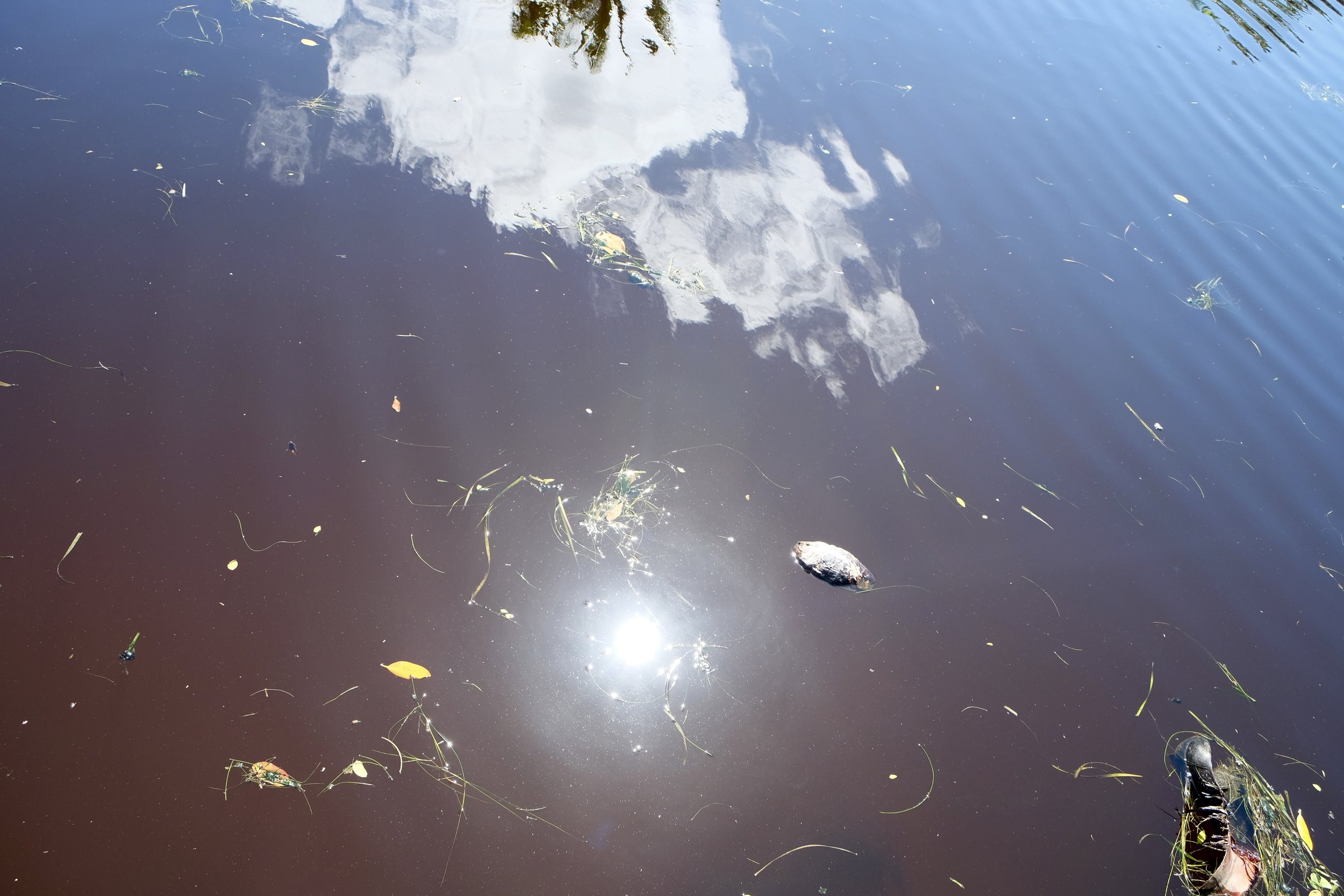
This is Brian's backyard. The canal he relies on for his business went from clear blue in June - to this.
Brian: "Are you kidding me? We're greatest country in the world, and we can't dig a ditch. I mean seriously. I mean we dug the Panama Canal in what the '30s? Dug a ditch across a whole country. How long did that? Just under three years to dig a ditch across the whole country, but yet we can’t dig a ditch from Lake Okeechobee through the sugar fields. There’s nothing down there, it’s just sugar fields. Dig a big ditch. They sure found a way to dig a ditch from there to the Caloosahatchee, and straighten the Caloosahatchee and dump it down here. But they can’t dig a ditch south."

Looking down the canal from Brian’s dock, it’s all brown water, with dead floating marine life.
Brian: "There's numerous pump stations along the south end they use to pump the water in their fields and then back into the Lake. And see, in there lies another issue where the Army Corps of Engineers has been catering to big-sugar water needs, leaving the lake high in the dry season when they should be lowering it down, so it can accommodate the summer rains and not have to dump like this. So they leave it higher in the winter to make sure big-sugar has enough water to grow their sugar. And then now come rainy season, 'oh, well we got to dump it'.“
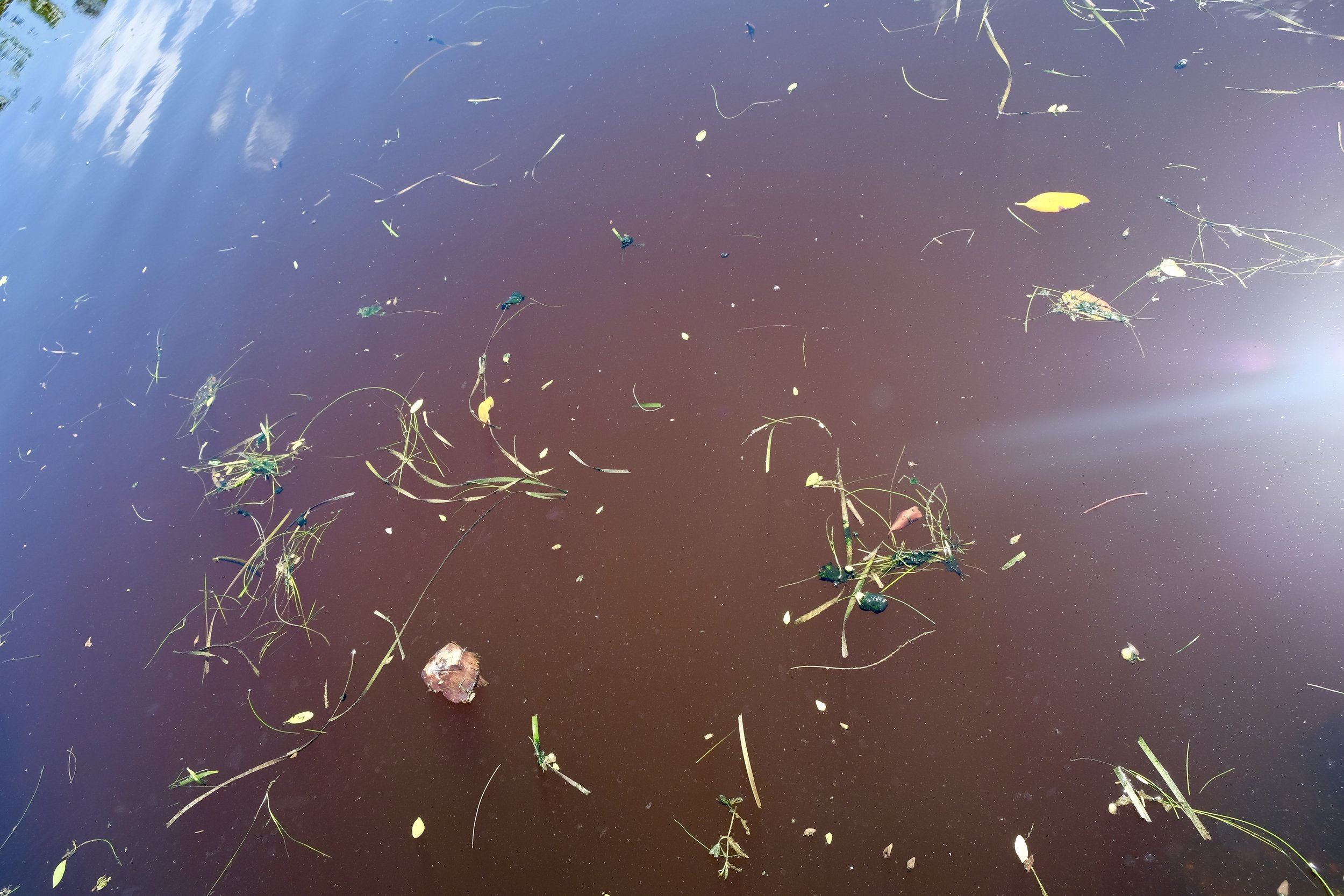
"You dig a ditch, and you feed the river grass that's starving for water right now. Number two, build a water treatment on the Caloosahatchee, on both sides. The water goes through the water-treatment plant before it goes down the river. That would work too. We have that technology. We are in 2018. We can build a water-treatment facility to treat water and clean it... for five or six years [it's been happening], it's just this year has just been extremely ... I've never seen anything like it, never thought I'd see anything like this in my lifetime. Never thought I'd see this or even have to deal with this. I might be out of business next year."

Martha: "As somebody who's on the water as a fisher-person, what are some of the areas that you used to go to all the time that now you just wouldn't even think of going to?"
Brian: "Everything, basically from Naples to Tampa is dead. There's patches where the water's a little cleaner, and that's where a few fish are. But everyday it moves because tide and wind and now ... So, you have no idea where any fish are, if you're going to find any fish, if you're going to find any clean water. Just from my local knowledge, I have a little area where there's a little bit of clean water that's been staying somewhat consistent that I was running my trips around the first of July in, and was catching a few fish here and there. But it wasn't nothing to brag about, just catching a few fish and showing them a good time."
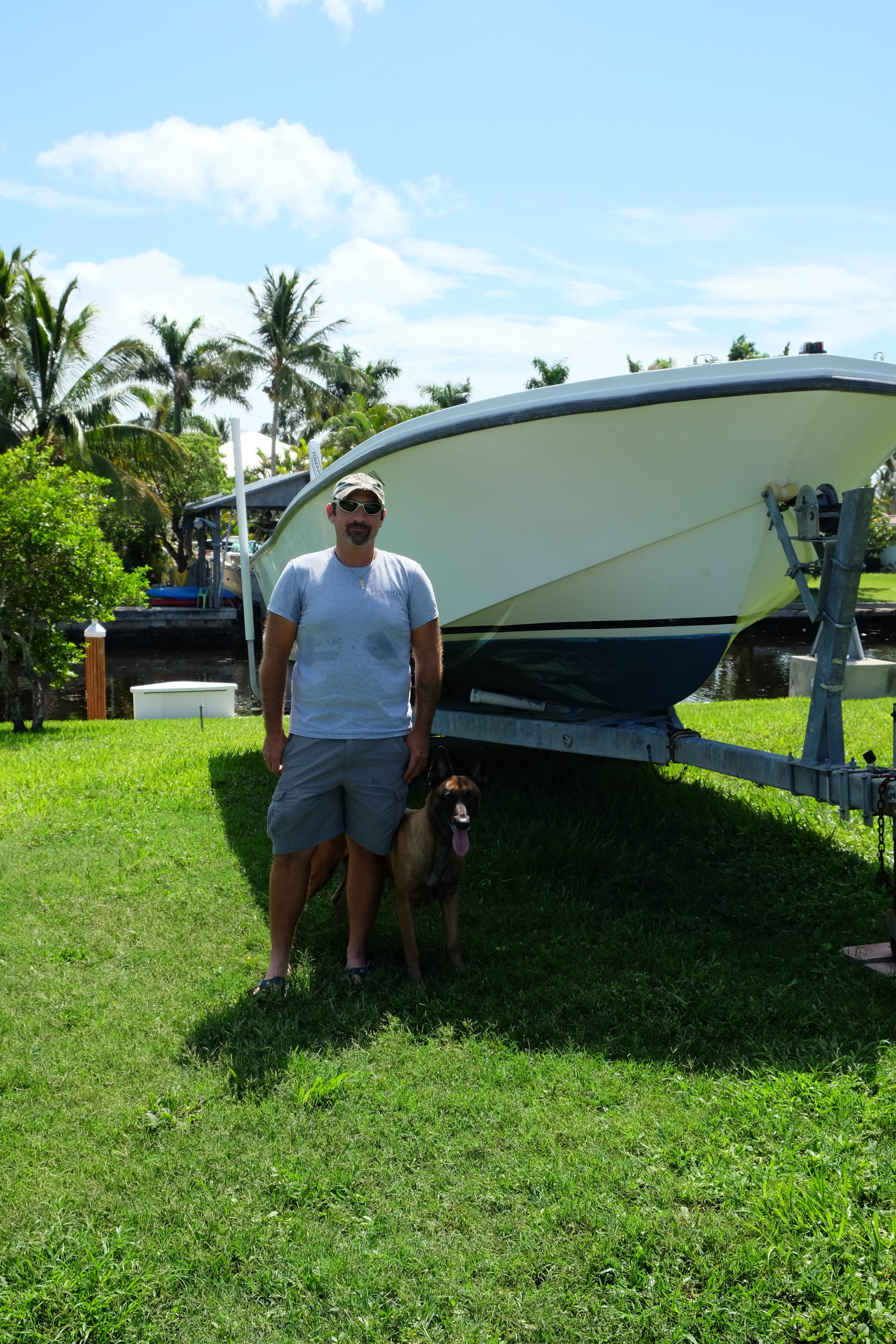
"I'll be honest with you. I have a little bit of faith, but next season will tell the tale. If I don't get any business next season, then yeah, I'm going to have to go somewhere else. It's just the bottom line. Like I said, if they're not going to fix this, the fishing's already been wiped out. Even if they stop dumping tomorrow, which they're not, they say they're going to dump for another two or three more months; it's going to be years before things come back. And that's only if we actually do something, which I really don't think they're going to. Because I've seen this before. It gets bad just to the point where ... and then they stop dumping, and it cleans up a little bit, and then they dump some more."
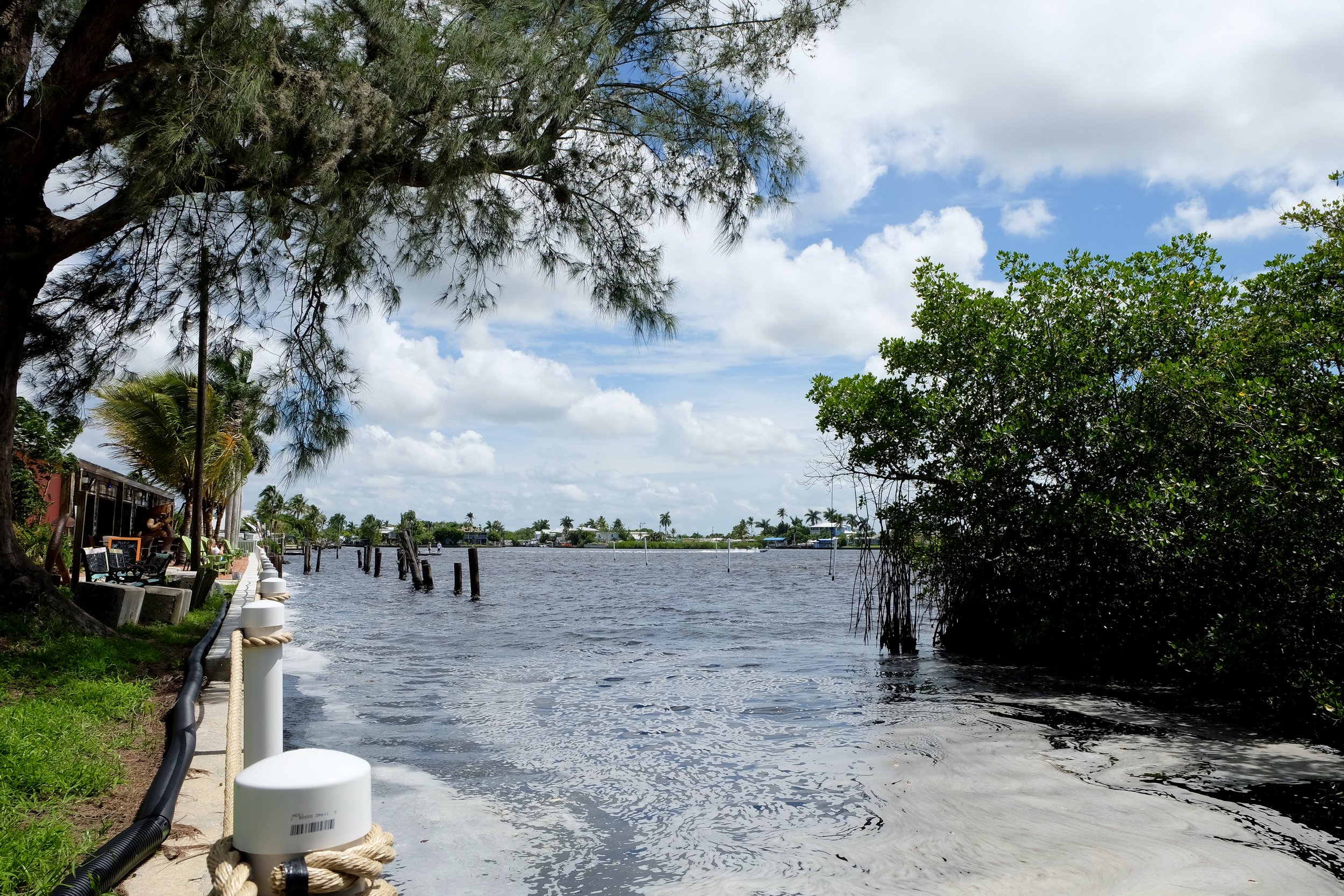
Brian: "Now this year, they haven't cared. They've just opened the toxic locks, and just let it flow. This is what has caused the nightmare that I call my life now. There was about four days I couldn't come out of my house. You would immediately feel like you're going to throw up within minutes, within minutes. I live on the water to enjoy the water, not to be poisoned by it. And unfortunately, I can't do nothing at this point. I just have to sit and wait and see what happens. Is my phone going to ring in November when it normally starts? Is it not? I don't know. What do I do if it doesn't. I don't know. This is all I've done for 14 years. It's all gone."

Brian: “Social media's the main way, it's the only thing that's been pushing this issue. There's been very little national media coverage, and even that has been scripted. Yeah, I've listened to one, ‘oh, it's naturally-occurring red tide.’ This is nothing natural. Are you kidding me? Naturally occurring to try to downplay it."

Martha: "All the discharges are basically like throwing gasoline on the fire."
Brian: "Well, just what you said, perfect example. They're basically throwing gas on the fire. That's why it's grown so big. You keep dumping billions of gallons an hour of nutrient-rich, fertilized water, what do you think's going to happen when it hits a plant. What is algae? It's a plant. You throw fertilizer on it, it's going to grow. And they continue to dump and continue to dump and continue to dump, and it has just grown bigger and bigger and bigger and bigger. And it's just a coincidence that right in the middle is the Caloosahatchee River. Both ways, we are right in the middle. Well gee, wouldn't that be the source? Yeah, makes sense. Common sense is not very common any more."
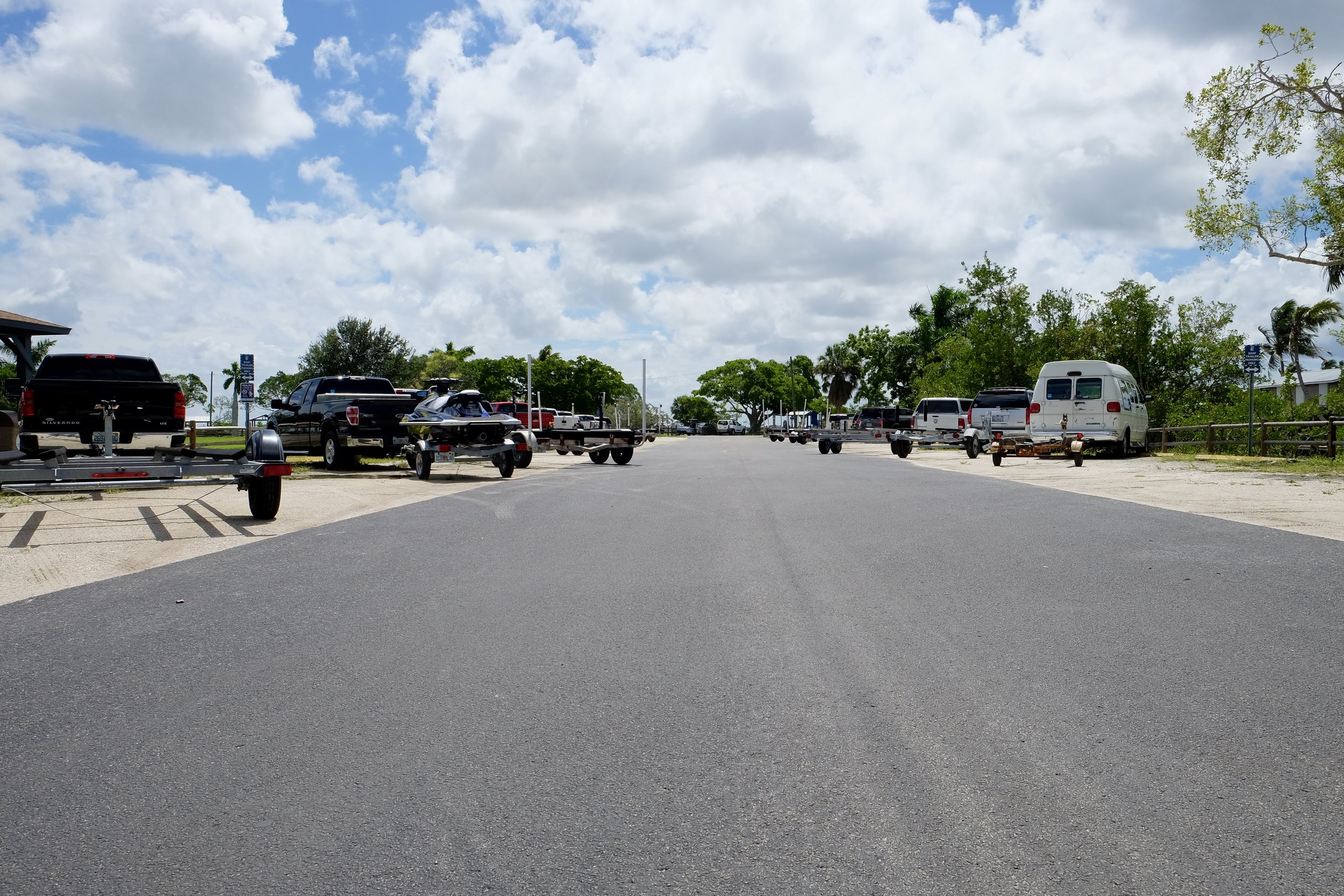
Despite the red tide, some people were taking their boats out on Labor Day Weekend in Matlatcha. The parking area was about half full, on a day where it should have been bursting with boat owners jockeying to get on the water.
Brian: “It's a double-edged sword. You have to talk about it to get it out there and get this fixed. But in the same turn, by talking about it and getting it out there, I'm cutting off my nose to spite my face because I'm probably not going to get any business next year. So the people that are downplaying it, they're no better than the people that are accepting the bribe money. Because you're basically destroying the environment for money. Yes, I need business. I need money. I have to pay my bills. But I'm not going to do it at the cost of my passion, my livelihood, my lifestyle. Being a fishing guide is not a career. It's a lifestyle. We do it because we love it. I've had that completely taken away from me."
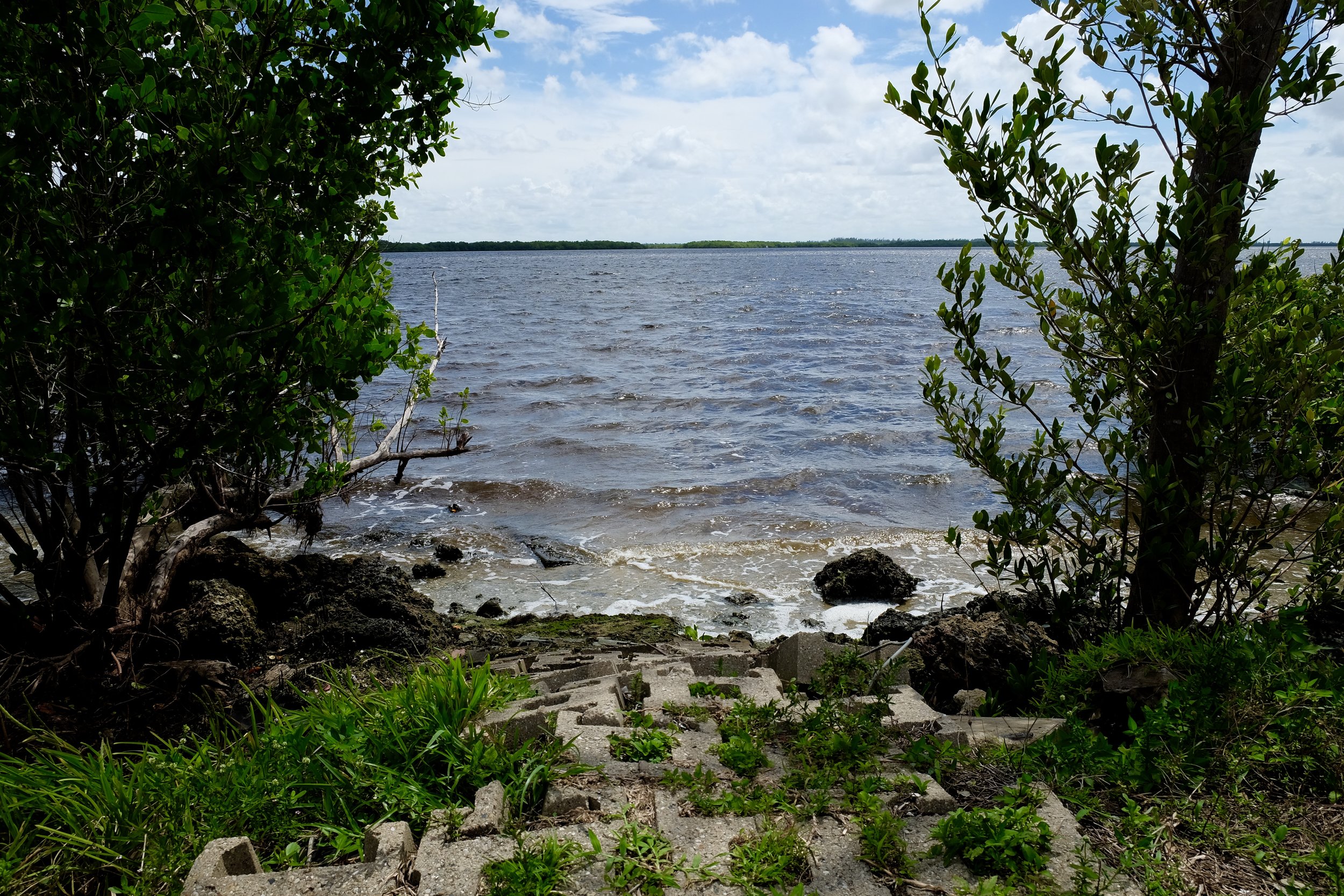
Michelle: "Do you feel like there's any political recourse for the public officials that have abandoned the community?"
Brian: "Yeah, I think they should get thrown in jail."
Martha: "Just like what happened in Flint."
Brian: "Yeah, this is worse than Flint. This makes Flint look like minute. Yeah, I understand it's their drinking water, but just as far as the amount, the volume, the size of it; you're talking three to four thousand square miles of red tide and toxic water. That's immense area, immense area."
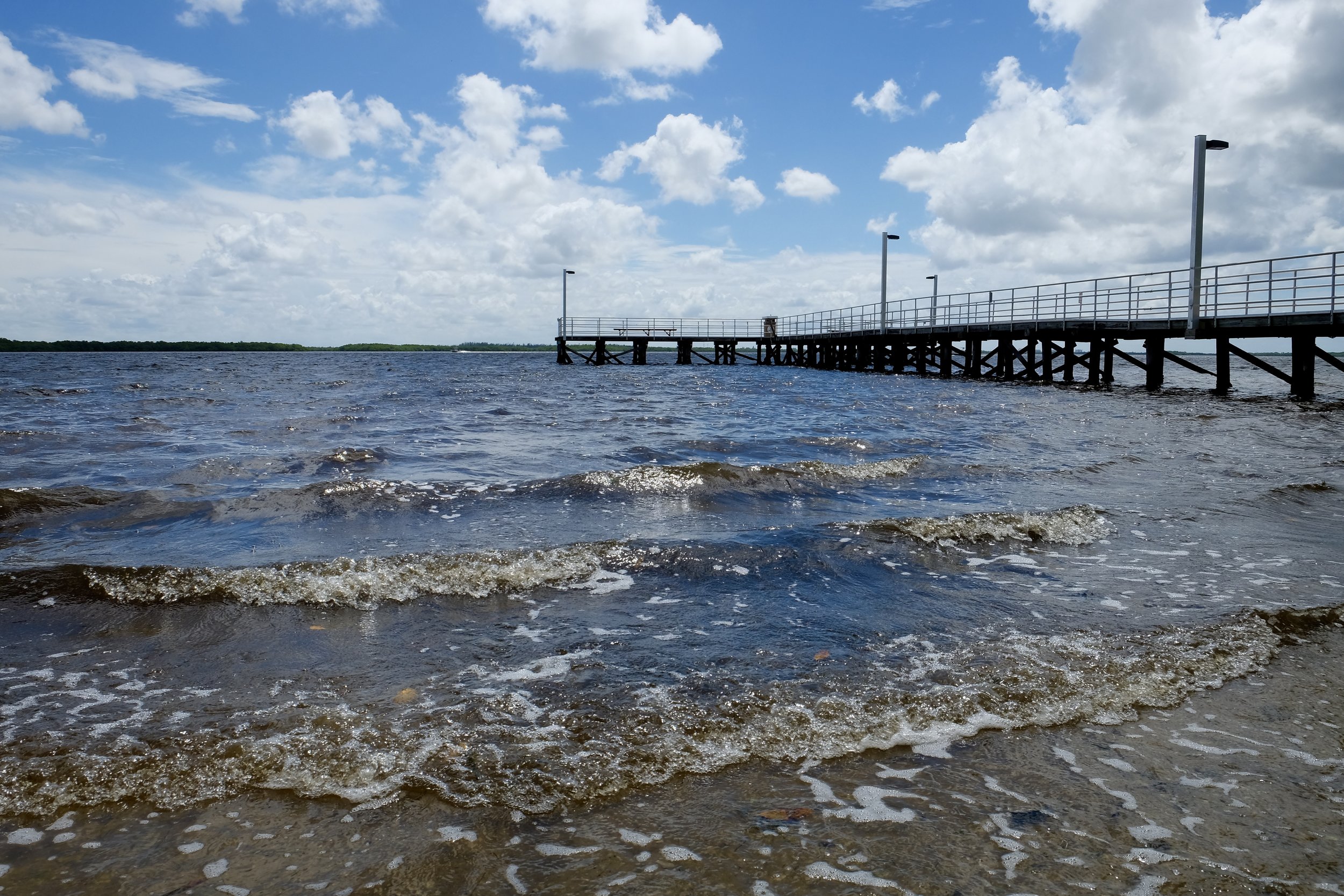
Brian: "The amount of death that has gone on this year, there's blood in that water. That water might as well be red right there because the amount of death this year has been unprecedented, never seen before. Never in the history, as far as I'm aware of, anywhere in the world has a whale shark washed up on a beach dead. Number one, that's an endangered species -- federally endangered, not Florida endangered. Federally-endangered species washed up dead. You know what they did with it? They dug a hole in the beach and buried it. Are you kidding me? And FWC, our own state, Fish and Wildlife Conservation, what conservation are they practicing? They're sending officers to the beaches at 3:30 in the morning to pick up the dead fish before the people get there so they don't see it. Really? That's how you handle this instead of stepping... it's sad."
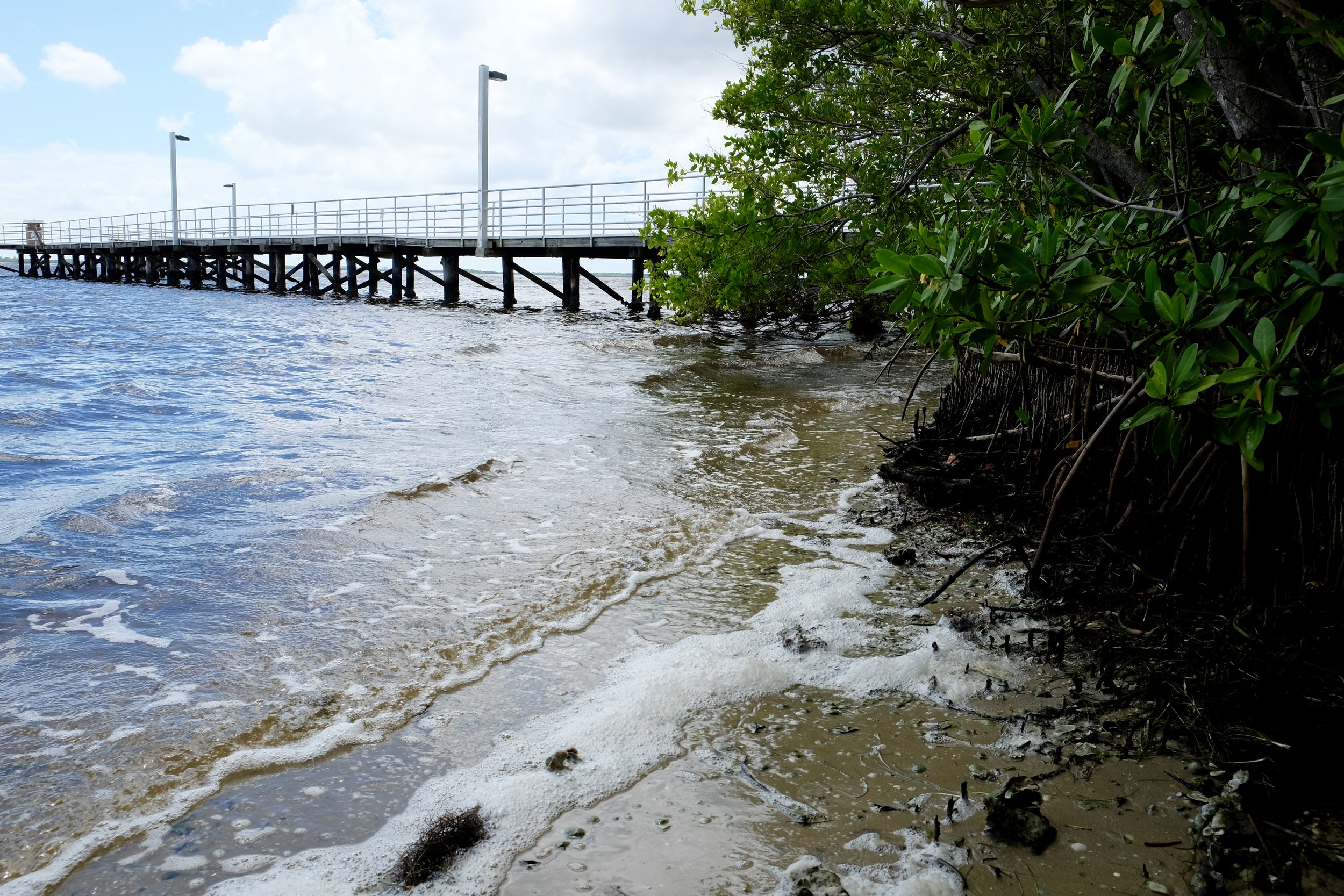
Brian: "Dig a ditch south. Fix the problem. 'Oh, well you have to go across 41 and 75.' Okay. You build a bridge. How many bridges are in the state of Florida? You can't build a bridge over the river, 75 and 41? How many road projects are going on right now out here. They don't want to."
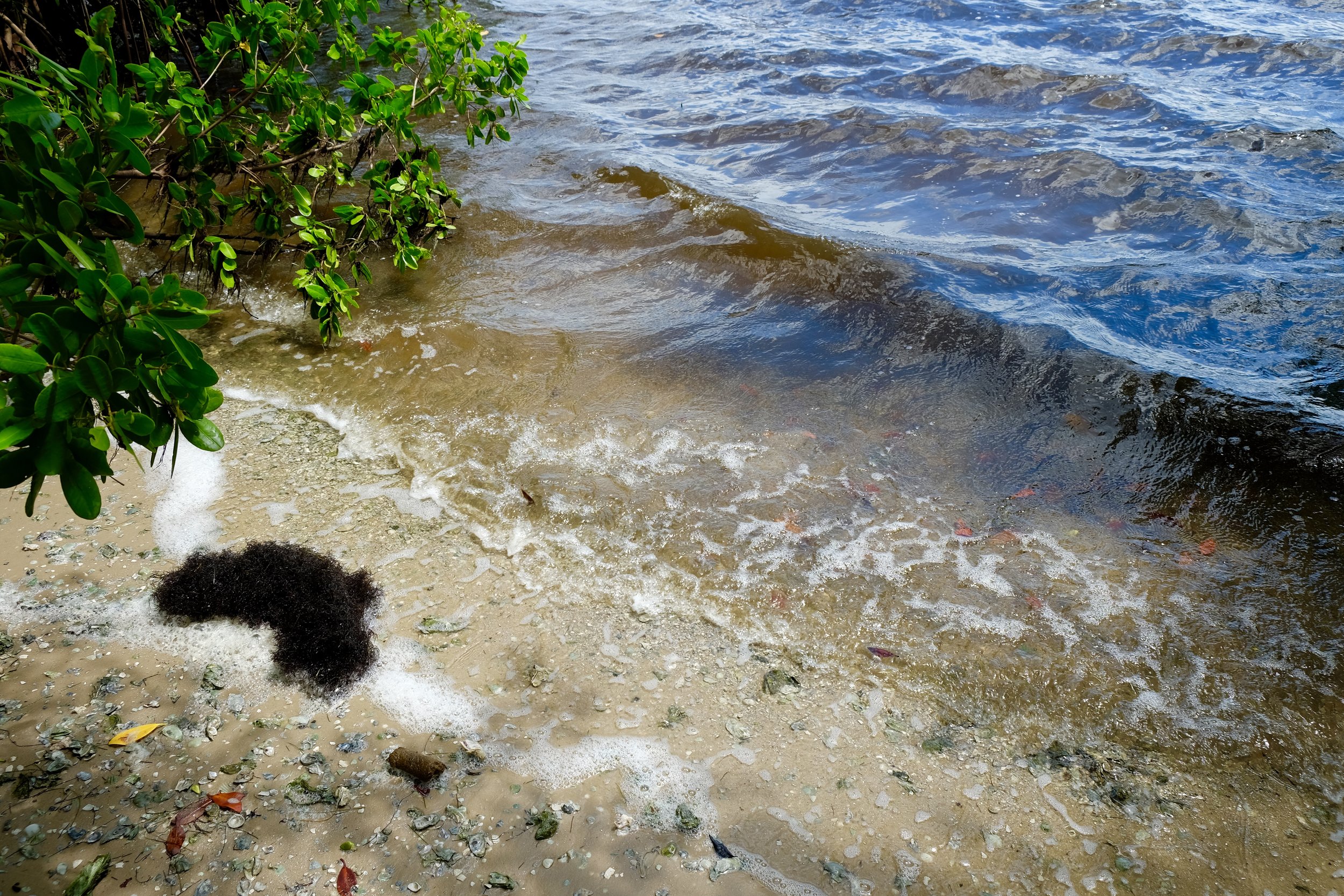
Everywhere here, the water is reddish brown, you don’t see any fish anywhere, unless they are washed ashore.
Brian: "That's the only thing getting any truth out there is people posting and sharing it, getting it more out there. The national news isn't doing anything. State government isn't doing anything. Federal government isn't doing anything. Bottom line, who does this fall down to? Who's in charge of the Army Corps of Engineers?"
Martha: "The Army."
Brian: "Who's in charge of the Army?"
Martha: "The President."
Brian: "There you go. This is what really boggles my mind is that he obviously must not be thinking about running again because you don't win the presidential election without the state of Florida. It doesn't happen. If you don't get Florida, you're not winning. I know a lot of people that voted for him that are just disgusted with him right now. His complete lack of leadership over this issue is very disturbing, very disturbing. This isn't like, 'meh', one-third of our coast is dead."
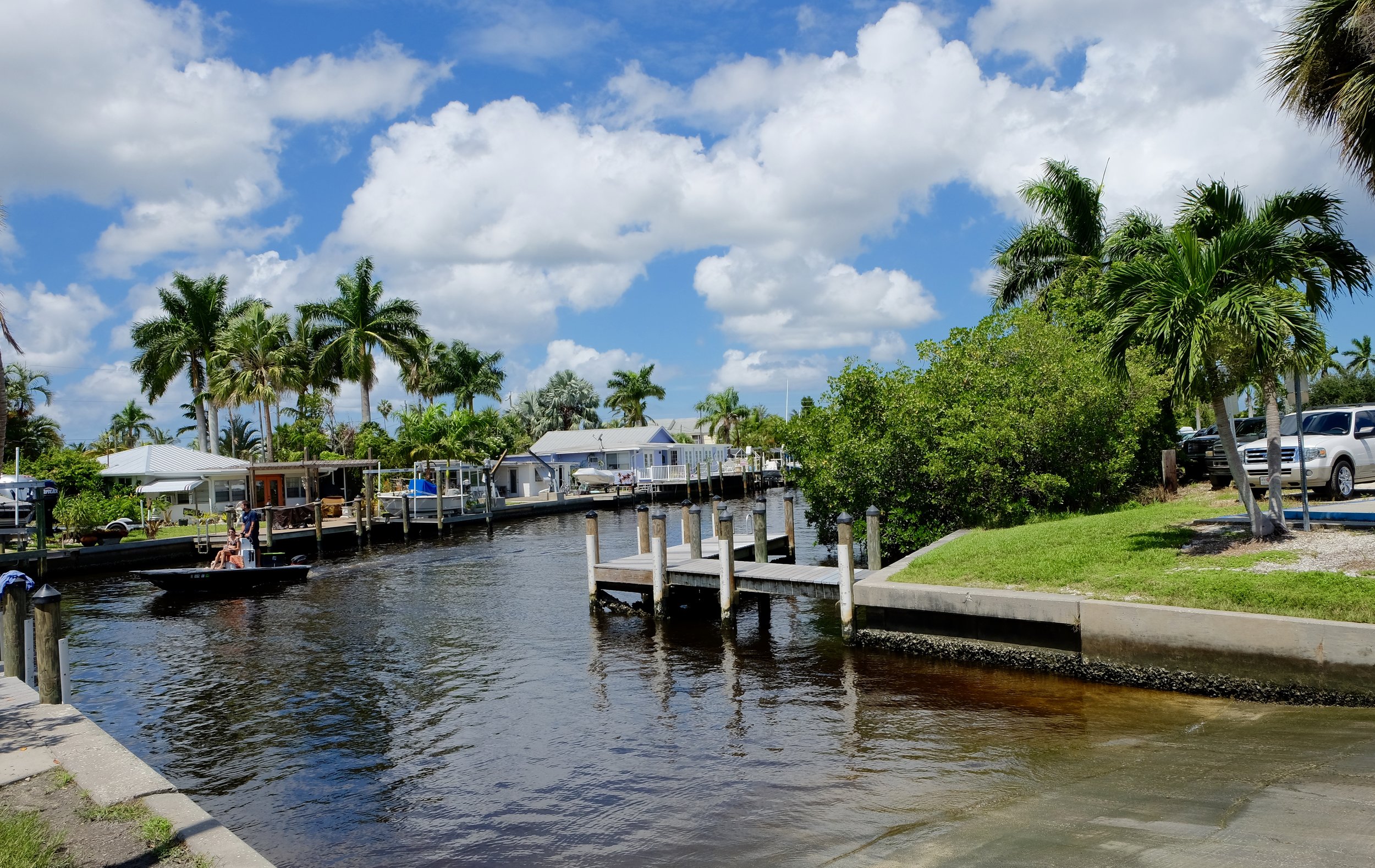
Normally this would be clear blue Caribbean-esqu water, now it’s tinged a deep red.
Brian: "It's time to address it. Yeah, it's bad. You know, people, ‘well, you live on the water’. You know what? I don't put a drop of fertilizer on this yard, not one drop. You don't really need to. If you live on the water, you shouldn't fertilize. It should be illegal. I agree with that. We do have to step it up. Everybody that lives on the water has to step it up. Stop fertilizing. But here's the thing: the blue-green algae grows in freshwater. You can go down there and look at it. It's all over my canal. That's straight out of Lake Okeechobee. It didn't grow here. We are, just like the Army Corps said, collateral damage. A good buddy of mine was at that meeting and asked them, 'knowing what is in the water, how can you continue to send it?' And her answer, 'I have nowhere else to put it.' That's your answer, ‘I have nowhere else to send it’? So you're going to put millions of people's health in jeopardy. See, but they do have somewhere to send it. They just won't."
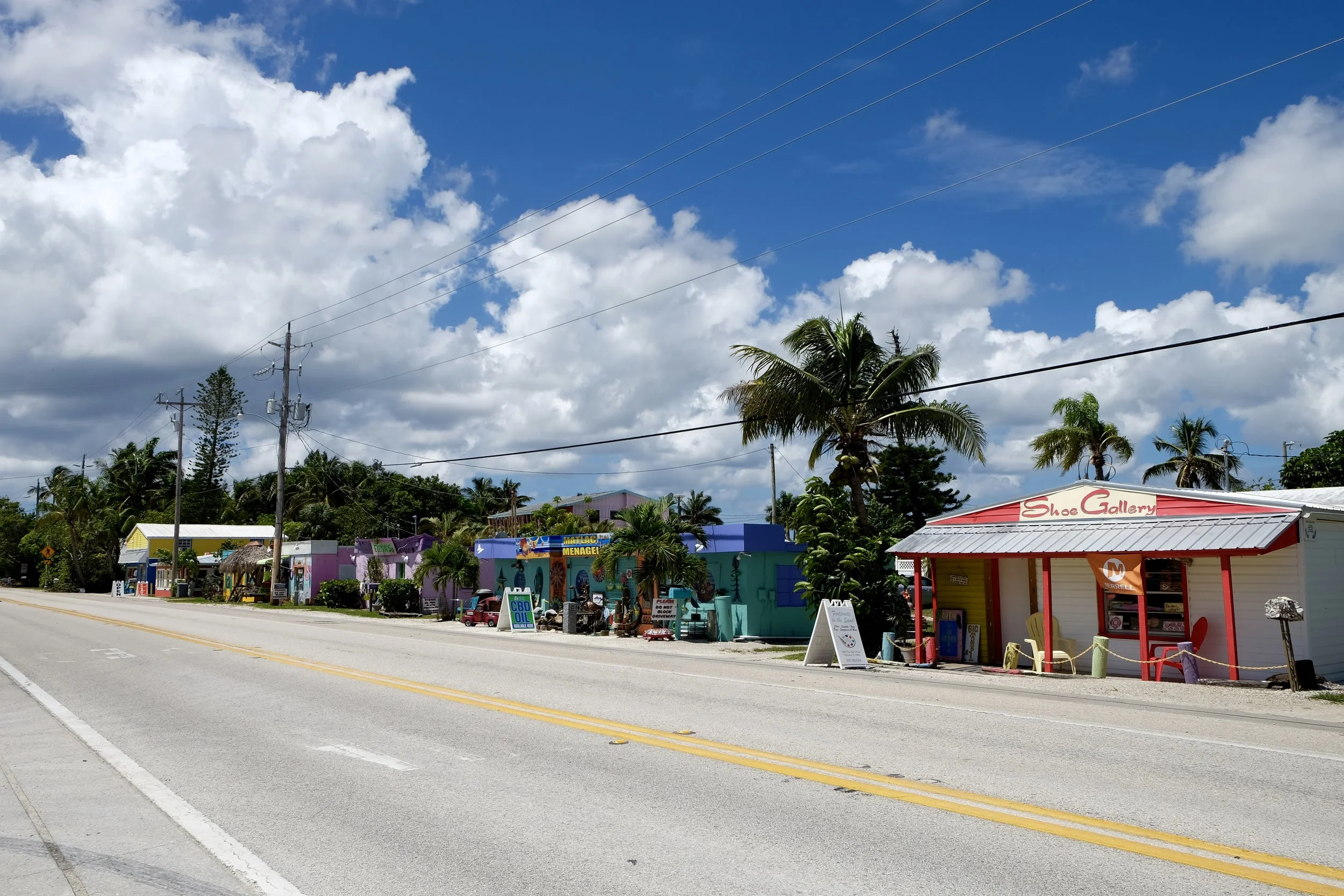

Across the street from Fort Myers Beach, you can see a vast system of mangroves that go out onto Estero Bay. It’s one of the many areas impacted by this crisis.

In the mangroves, you can see yellow highlighted water, tainted from the onslaught of algae and red tide that has flushed into the area.
Brian: "There's four locks right now on the south side that are closed that could be opened flushing water south. But they won't do it because of some endangered sparrow bird. Are you kidding me? Once again, a little bird versus millions of peoples' health. Well, it's not about the bird. That's their loophole."

Brian: "It's just eerie. You go out here, there's no birds, there's no bait, there's no fishing. You just go off Dynamite Dock, and you just look over the side, and there'd be sheepshead and mangrove snapper. You might see a snook swim by. There's mullet jumping, swimming in. Manatees and dolphins, every few days, would be in here. Now, they're gone. They're gone."
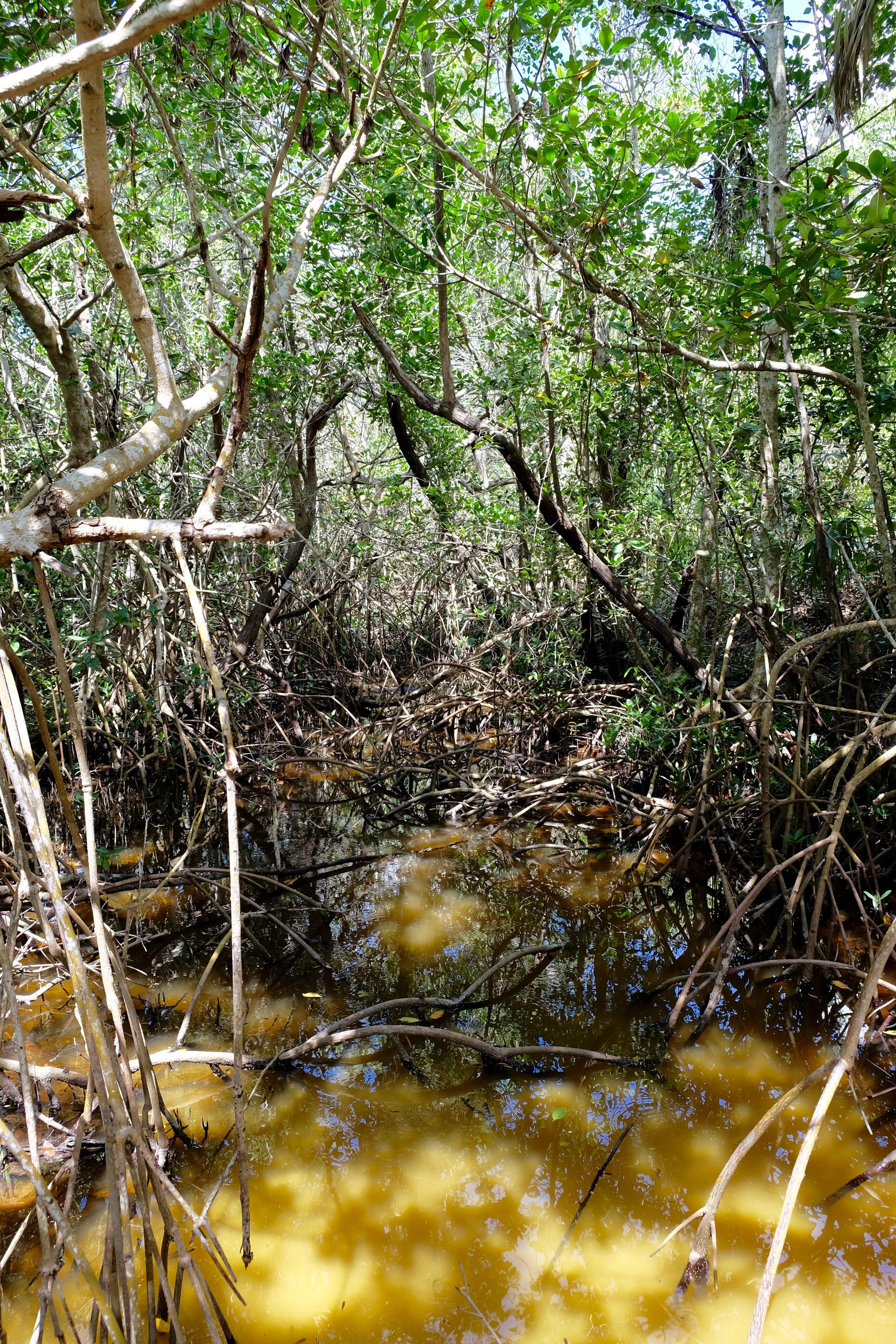
Brian: "You've got to remember, it's not just this year. I've seen it decline over the last three years."
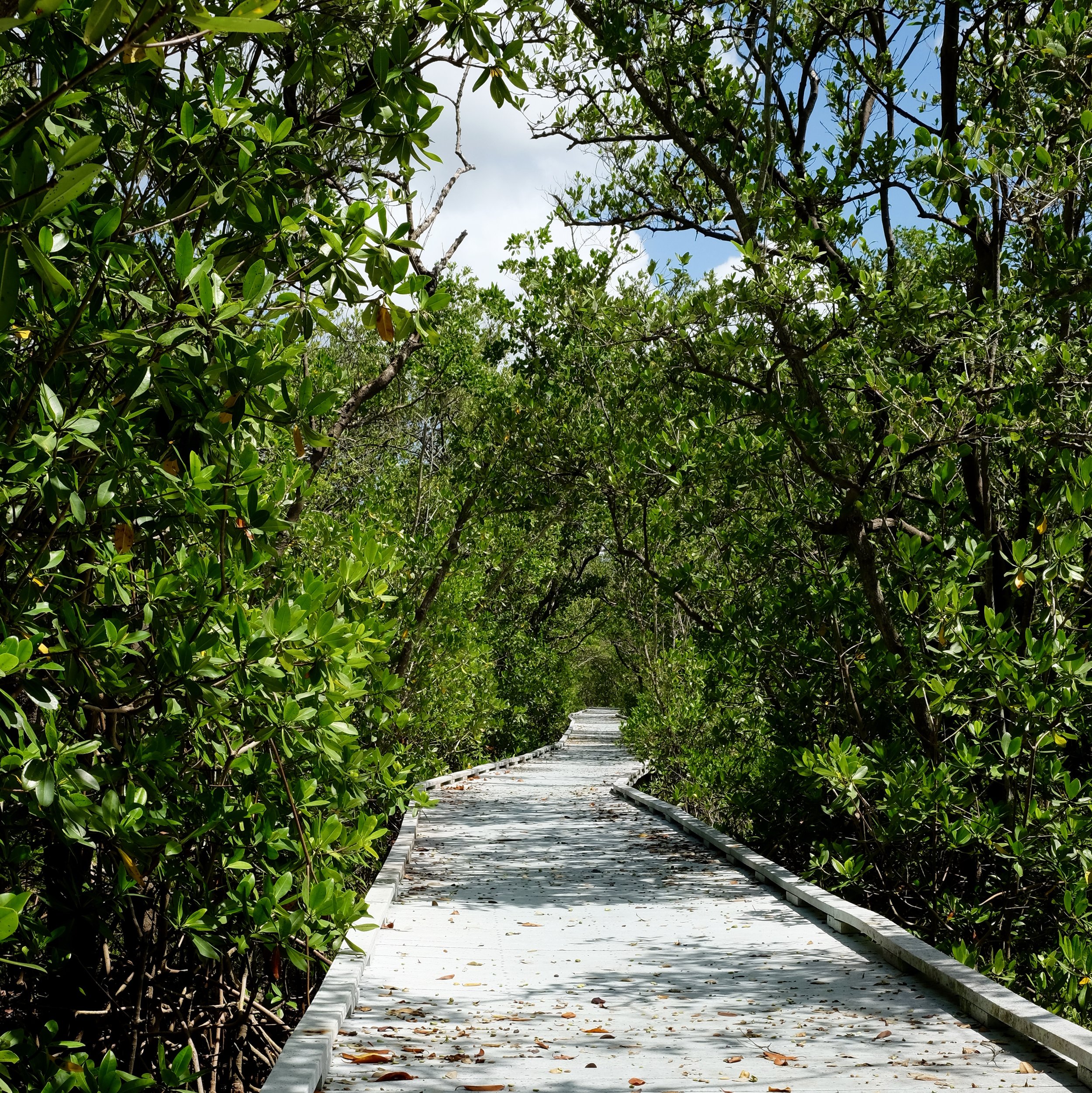
One of the many boardwalks through the mangroves.
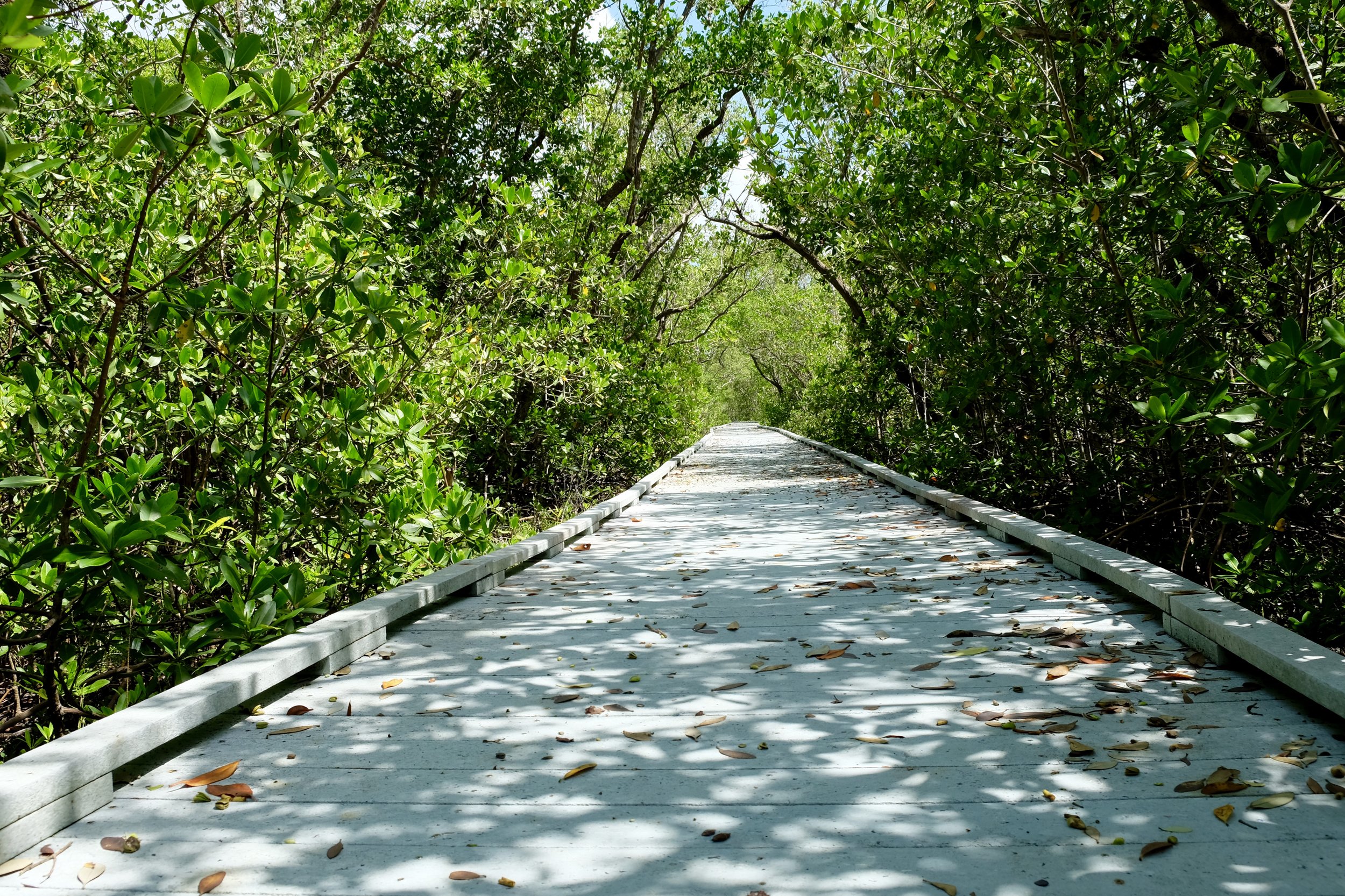
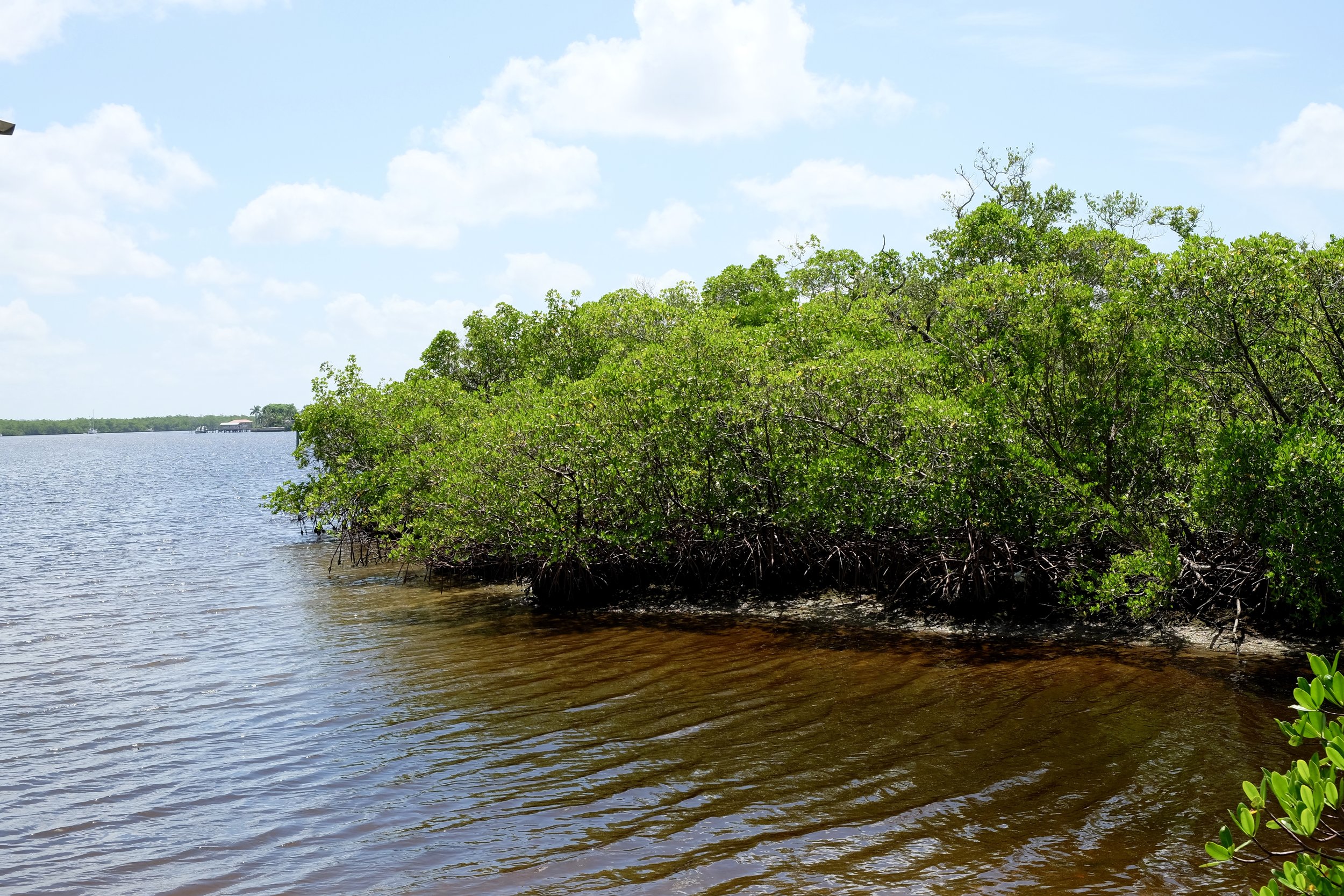
Brian: "I fish people from all over the world, New Zealand, Austria, Switzerland, Sweden, England. All over the country, people come to Florida. We're the fishing capital of the world. But one third of our coast is dead with no fish. But we're the fishing capital of the world. Oh, so one company can make some money? Or maybe a few? No. That's not how it goes. You got to look no further than our governor. He did this."
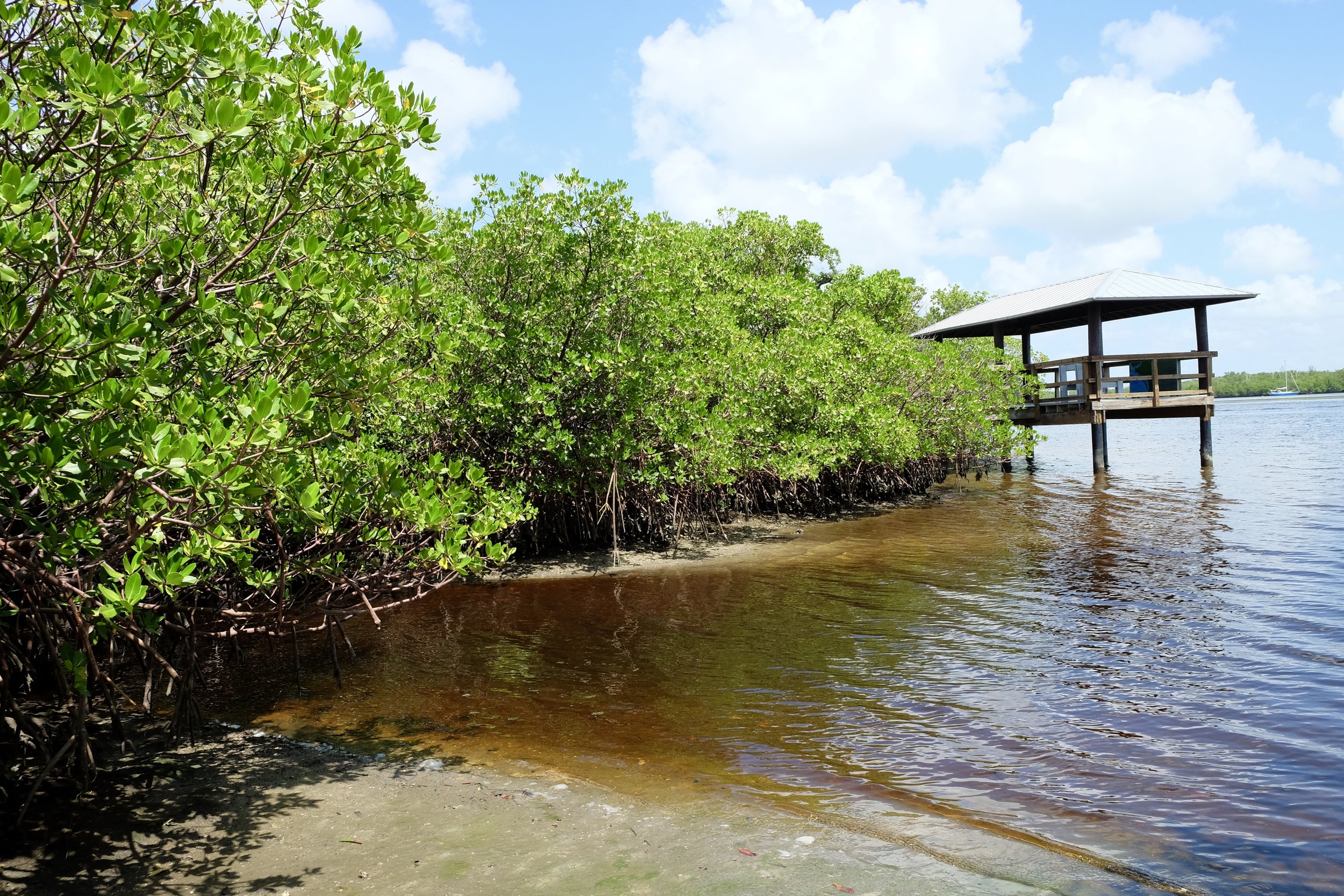
Brian: "How many people retired, took their life savings to move down here, buy a house and this and that, and now this is what their retirement is? Death and toxic water and getting sick and... There's people that are having babies that can't take their baby home because they live too close to the water, and it's toxic for the baby to go back to the house."
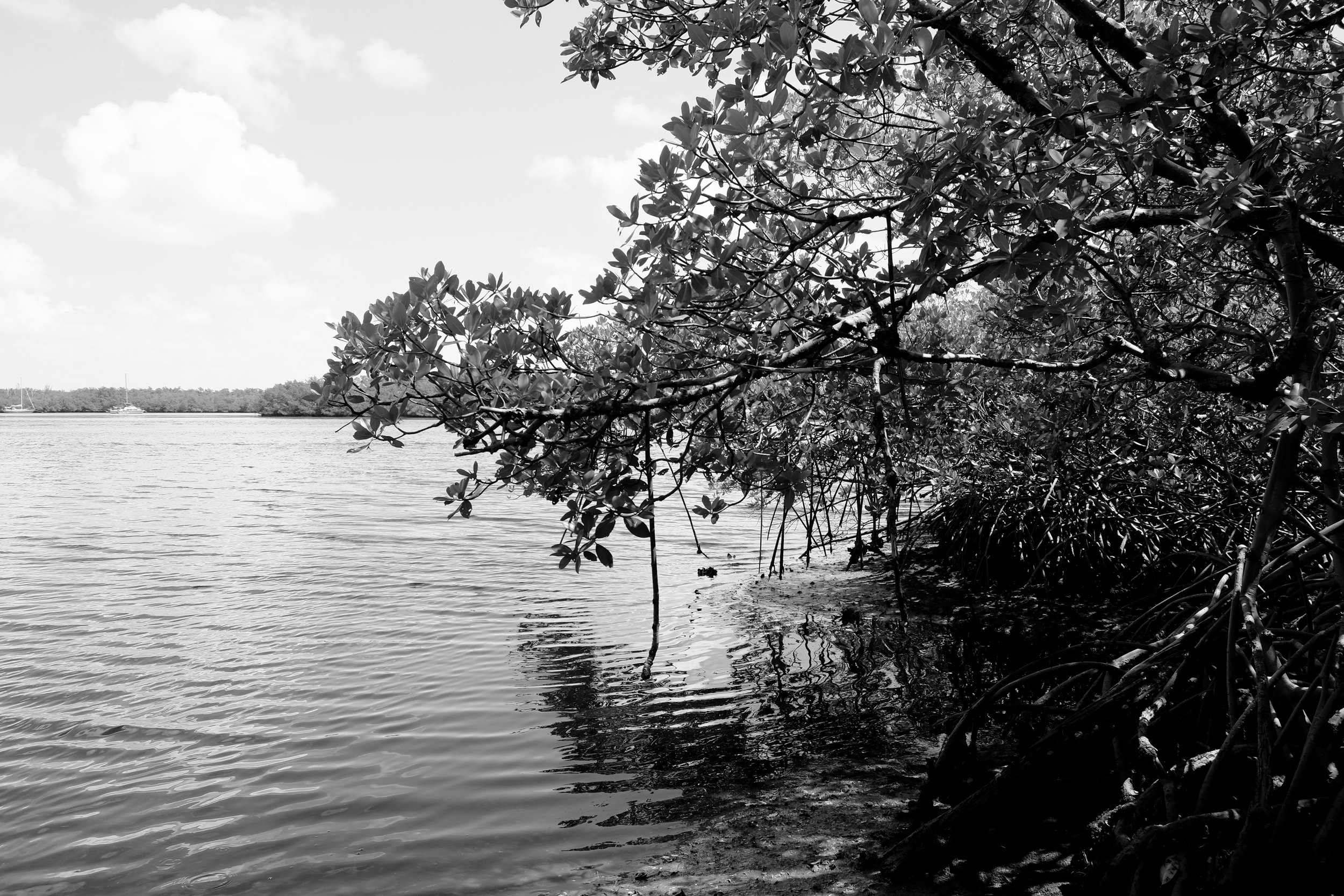
Brian: "They're being run out of their own homes in America. People are being run out of their homes by toxic pollution, and it's like nobody... 'it's not in my backyard, so I don't care'."































Hover your mouse over the image to see interview quotes and descriptions.
Ken Cranor | Sanibel
Ken is a local glass artist from Collier County, whose studio is at the Fort Myers tobacco shop, The Treasure Chest. He has spent his whole life in Southwest Florida, over the last few years - he’s noticed the increasingly grave impact these blooms have had on local marine life, as well as surrounding communities. With that in mind, and with a particular affinity for the gentle sea turtle, he and his son created Welcome to Turtle Island. Through this initiative, he and his son sculpt glass into turtle figurines that can be worn as a necklace or bracelet to both raise awareness and raise money to protect sea turtle habitats - currently they give the proceeds to the Collier County Conservancy.

"I was just talking with another glass blower fellow, turtle activist if you will, and she works with the Turtle Time people. On the beach and monitoring daily the turtles and what not. She said that the signs in Lee County, just the other day when she went, they were all turned sideways. So that you don't see it from the street level. You have to walk up and be on the beach level to see it. She thought that was quite odd that they were turned that way instead of like in Naples they are all posted really well. Where people can see them. I think that it’s being downplayed. In my opinion. There's not much that's actually being done. Until just recently. We just recently started getting the news really heavy about the no fishing... it feels like the more they got the word out there the faster we could make changes and the less impact we're going to have both on our environment and ultimately our economy. I guess there's more money in the cause than there is the solution. It would appear."

"I started thinking about what I could do as an artist to bring something to bring awareness to it. I have thought of what's the most common, probably the most ideal thing that people would recognize. Most people dig turtles. We'll make some turtles, and turtles are greatly affected by it. That was the big thing. I'm a big beach goer, all my life I'd go to the beach and I’d watch the turtle do their whole thing, their nesting and everything. Seeing that affect it so greatly here in numbers, about four hundred dead turtles, you know that we have counted here locally. I've been searching for an item, a totem, for people to come together and focus on, and that was the turtle. It’s something that would be attainable for people, for everybody, and unisex and all that, everybody could see it. It's not about the turtles exactly, it’s about everything. It’s about the entire environment. To me that's what what I do it for."
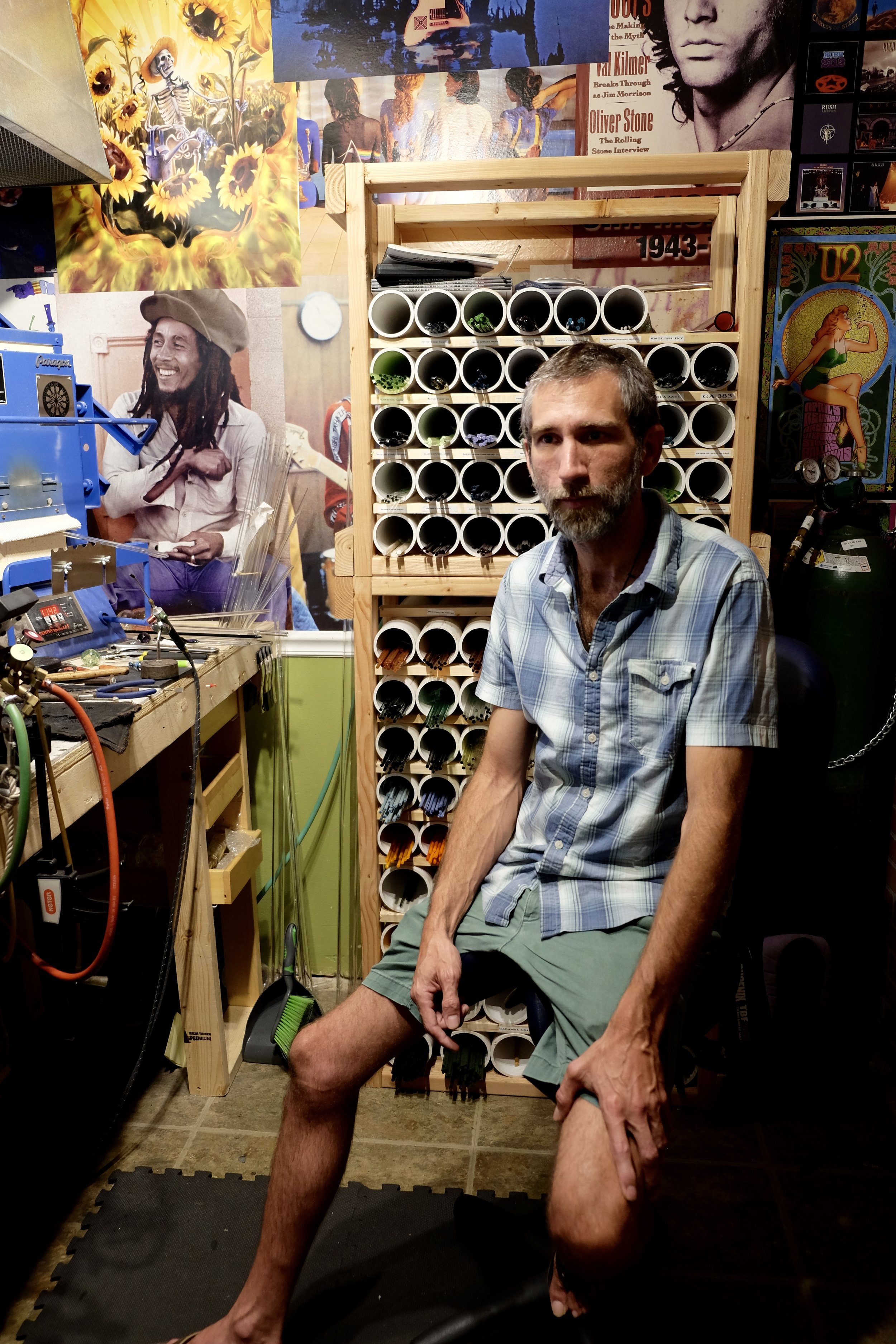
"We started doing the turtles here about 3 months ago actually. With the onset of kind of a panic feeling from what's going on. I thought hey, this is a good time to get it going and talk with Conservancy, and Collier County, we got it going with them to where we can have them in their gift shop, that's where the money’s going right now. Is to the Conservancy."

"Going to the beach and talking to the shop owners and encouraging them to participate and they are like, 'hey I don't have the money to put out right now, I'll be lucky if people come through the door today'. So businesses are really suffering, on a large level. One of the marinas that we stopped at they said they just sold the business as a result of the impact. He said he couldn't keep it going."

Ken made some glass turtles while we were there.
Ken: "[In the] three years that I've observed. Like exponentially seems like each year it’s just like wow. A whole tenfold of last years hit. I think there's a certain amount of residents are like, 'oh this is what happens'. 'Oh red tide'. They use that name, red tide, like it’s the old red tide. We always grew up with the red tide, you know it was there for a couple days and then it was gone. Hell you could go swimming in it. To be honest, and I never was affected. I never got sick, it burned my eyes a little bit more than the normal salt water, that's when I was growing up here, Collier County. Here recently it’s a lot worse than that. Your eyes burn you get sick, I guess there's flesh eating bacteria, possible along with it."
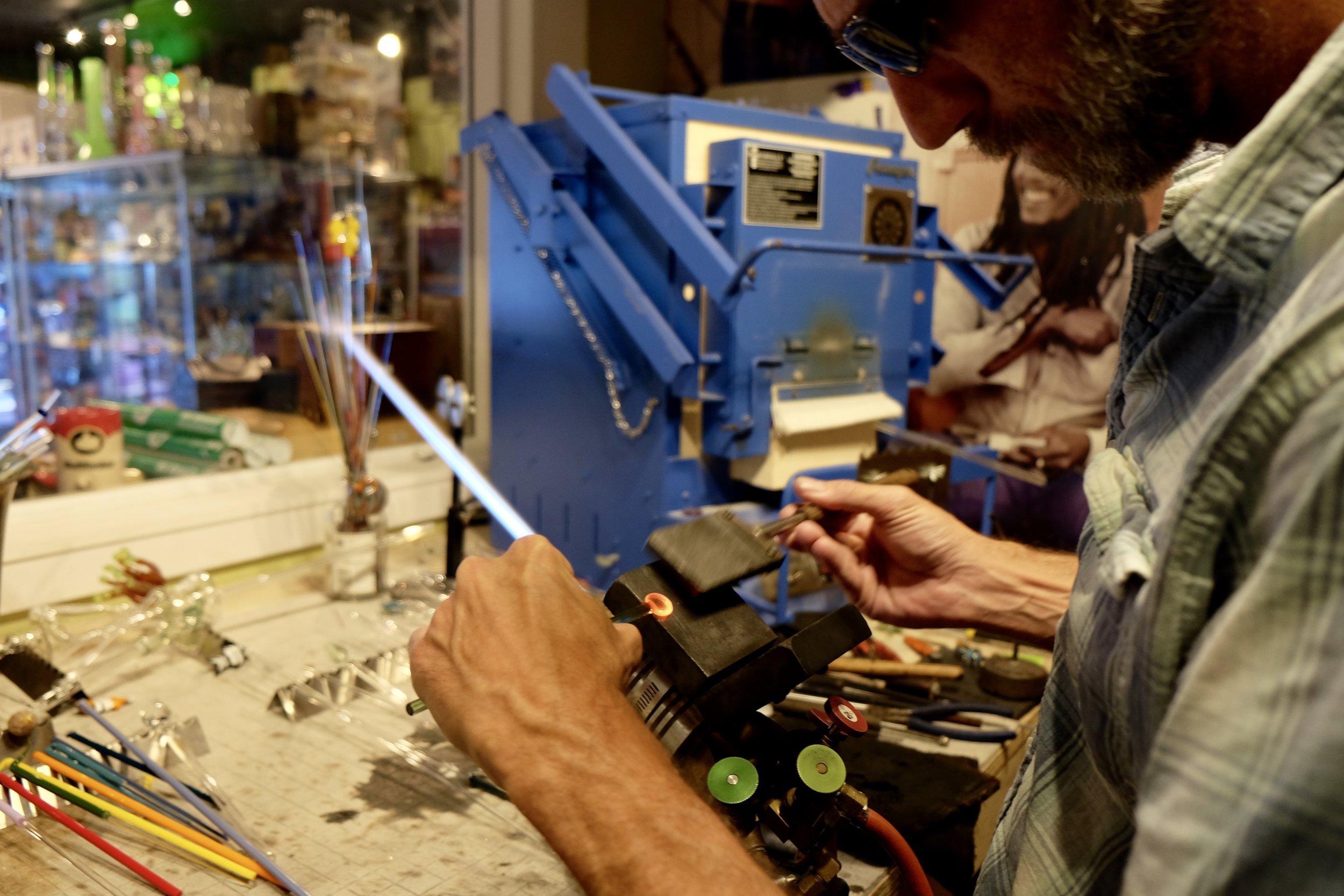
"It just doesn't appear like there is enough happening. You would think with the pictures you see on Facebook and the pictures you see on the news, and the report they did on the local news here just last week, they went several miles offshore, and it was just dead zone. Complete dead zone, no fish, big turtles, big big 100 year-old sea turtles floating. So it’s almost an apocalyptic feeling. Like it's the end of days kind of feeling when you see your environment, your local environment, just as far as the eye can see dead fish. Then you hear that's it’s all the way to Sarasota, and all the way down to Marco and Points South. You start to wonder, what's literally going on here, and what does need to happen, and why isn't the local government doing more?"

"As far as mitigation it’s just stopping it at the source. I think that's really what it is. It's biting the bullet, and changing. For years, nobody wants to talk about, as far as, its like big oil - biting the bullet and accepting that we need to use clean energy. For everybody's benefit. I think it’s the same thing with [this]. Politically I don't want to hurt people. Financially, or whatever so I don't want to say names, but the big corporations that are dumping stuff into the Lake, that are creating these algae problems. The science is pretty simple I think, as far as [fertilizer] goes in, you get a massive algae bloom, the algae bloom happens, and then suffocates the life. Other bacteria start to mutate and change from there."

Martha: "Moving forward, do you feel like this has changed whether you see yourself here long term?"
Ken: "To be honest, I'm a native. I have thought about whether, what will I do if it gets worse."

"I think that most people realize that it’s an issue and it needs to be dealt with. It's just organizing that and seeing how that's going into action and playing out. If something gets done then things just should hopefully start getting better, but if they don't then it’s just going to get worse. Then you're going to have a lot of migration away from the area. People that just don't want to deal with it."
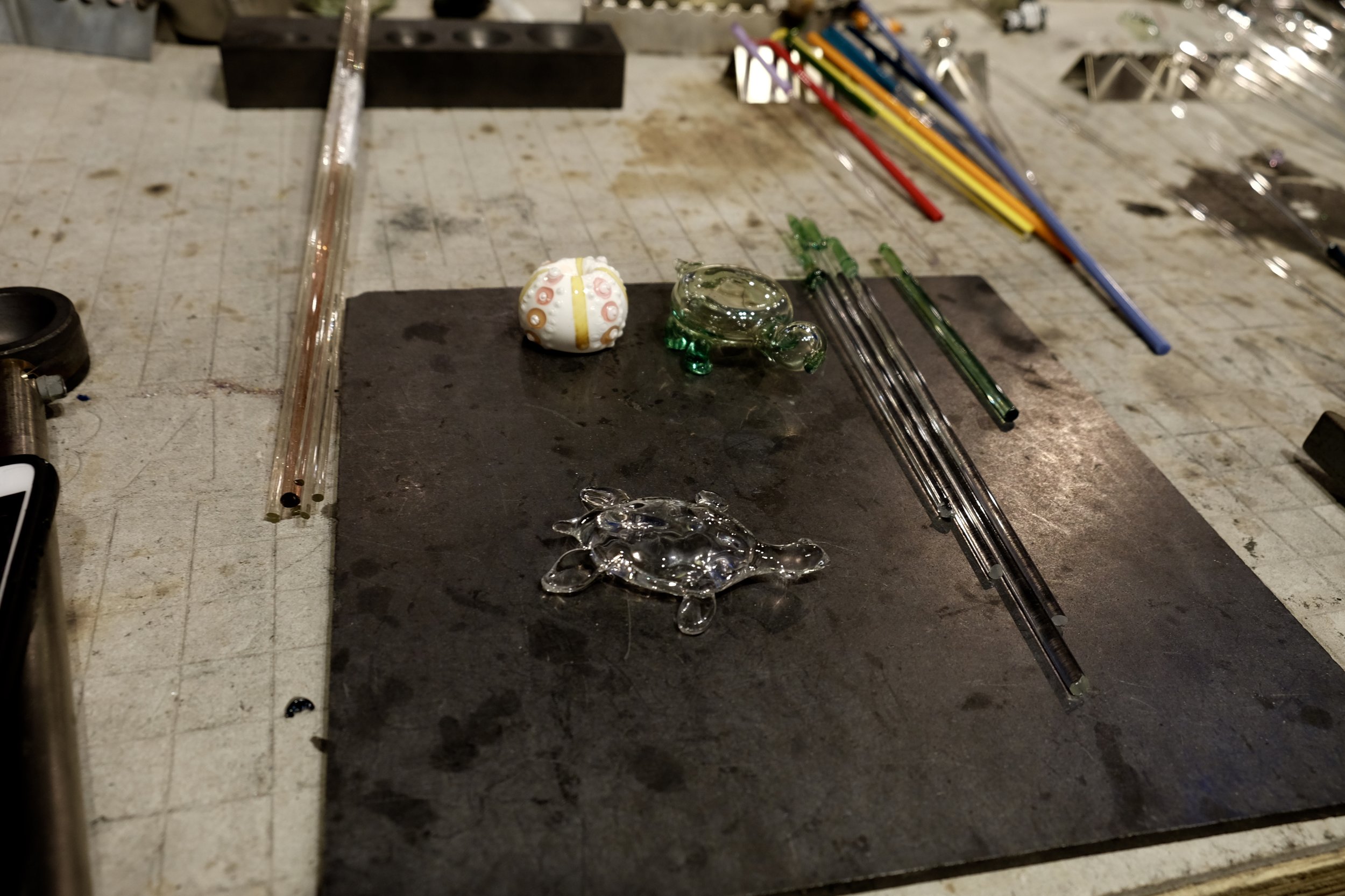
Here are some of Ken’s creations in his studio, some different turtle ideas he may add to ‘Welcome to Turtle Island’.
Ken: "Its’ diffidently brought more concerns for me personally. You know, what can I do to help a political movement or to bring that to some type of awareness in that realm as well as the people. It seems like these days it’s two different things rather than what we all agreed on that it would be, the people. If we don't have clean water, if we don't have a livable environment, we're done for. It’s not just about turtles or the fish. Those are just another reflection of us. It’s all us."
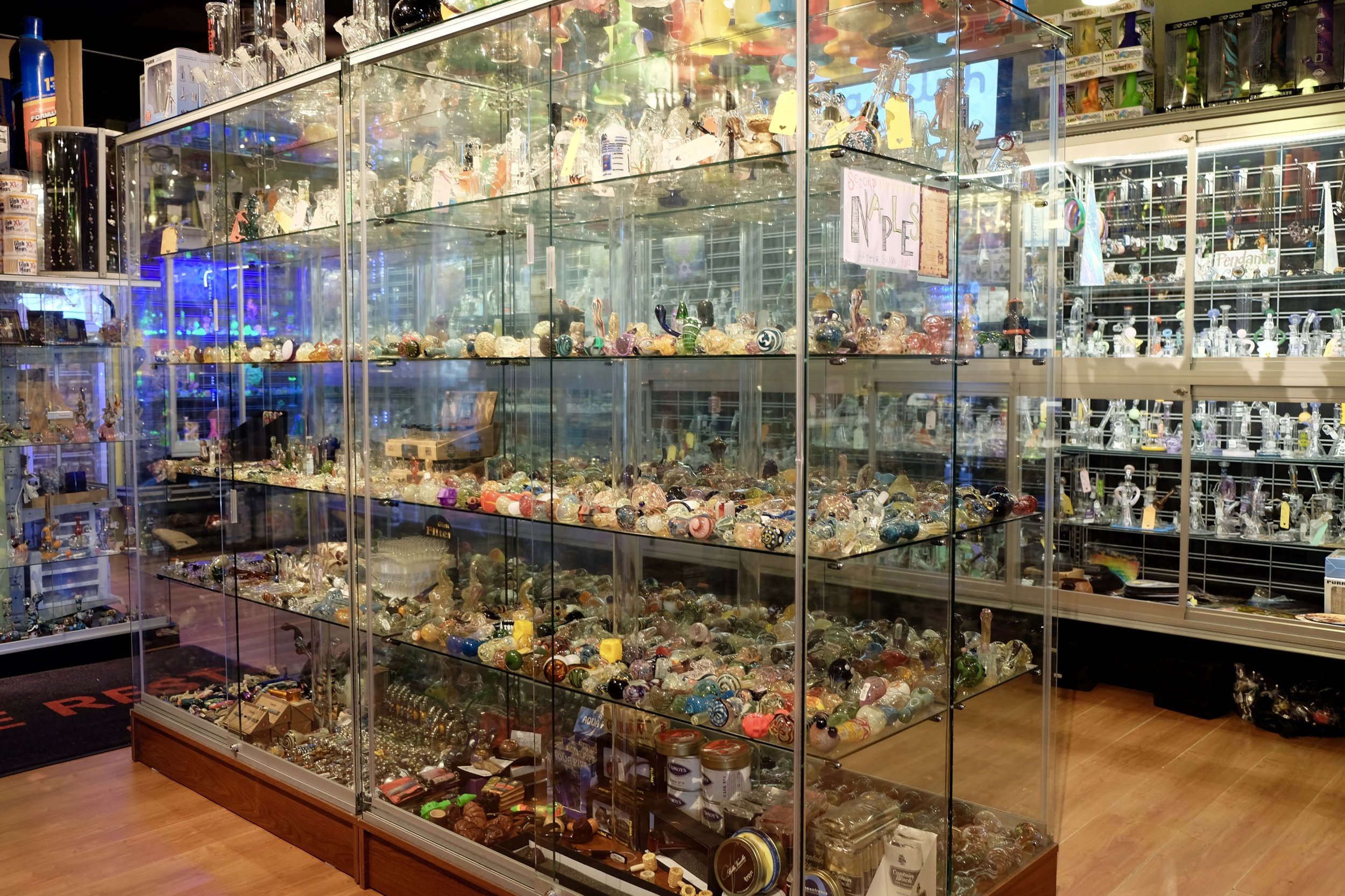
Ken is a glass artist, you can see many of the creations he’s made being sold here at the Treasure Chest.
Ken: "I think it’s really important that we all start to realize that it starts with us. It starts with what were doing. It starts with what kind of plastics are we using. What kind of environmental changes can we make personally. And then working up to political changes and whatever we can influence."

This is the main parking lot for going to see the Sanibel Lighthouse. It was nearly empty on Labor Day Saturday. In fact, the parking was free.

Normally it would cost $5 per hour to park here. For the last few months, fees have been waived in light of the red tide crisis.
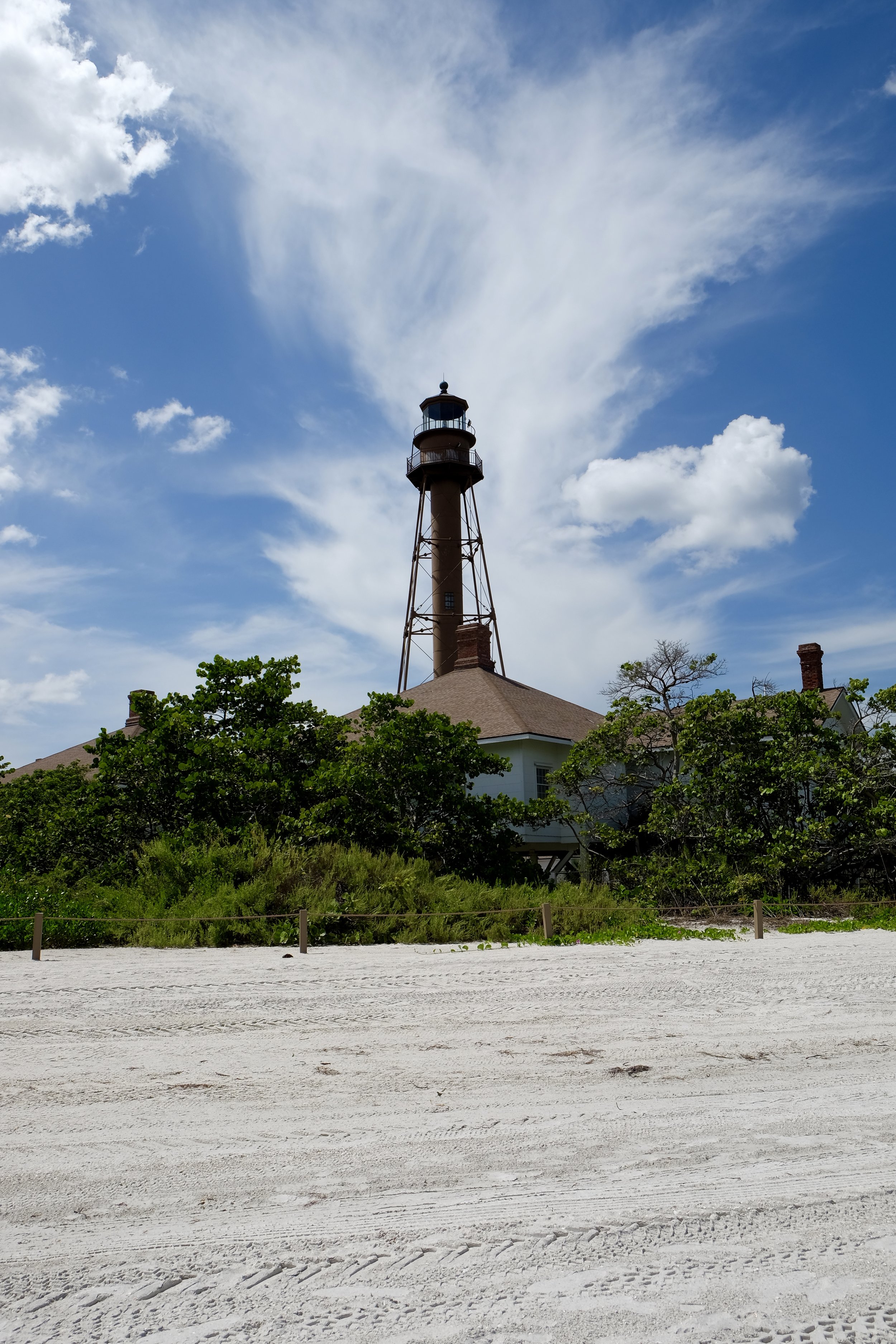
Just below this Lighthouse, are several sea turtle nests. Like other marine life, sea turtles have seen massive casualties. As if mid-September, Lee County had collected 1,700 tons of marine dead fish, turtles, and other marine life.

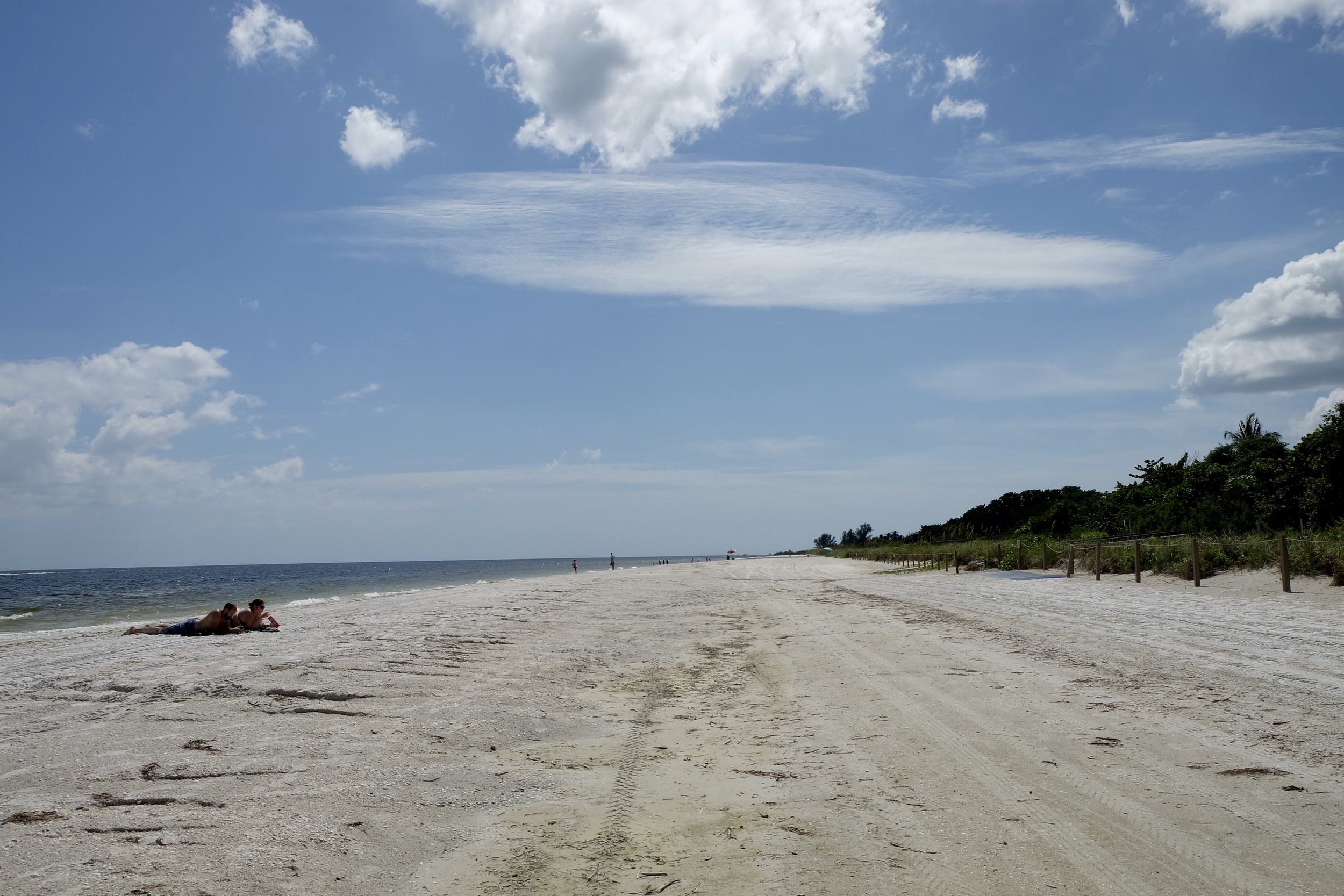
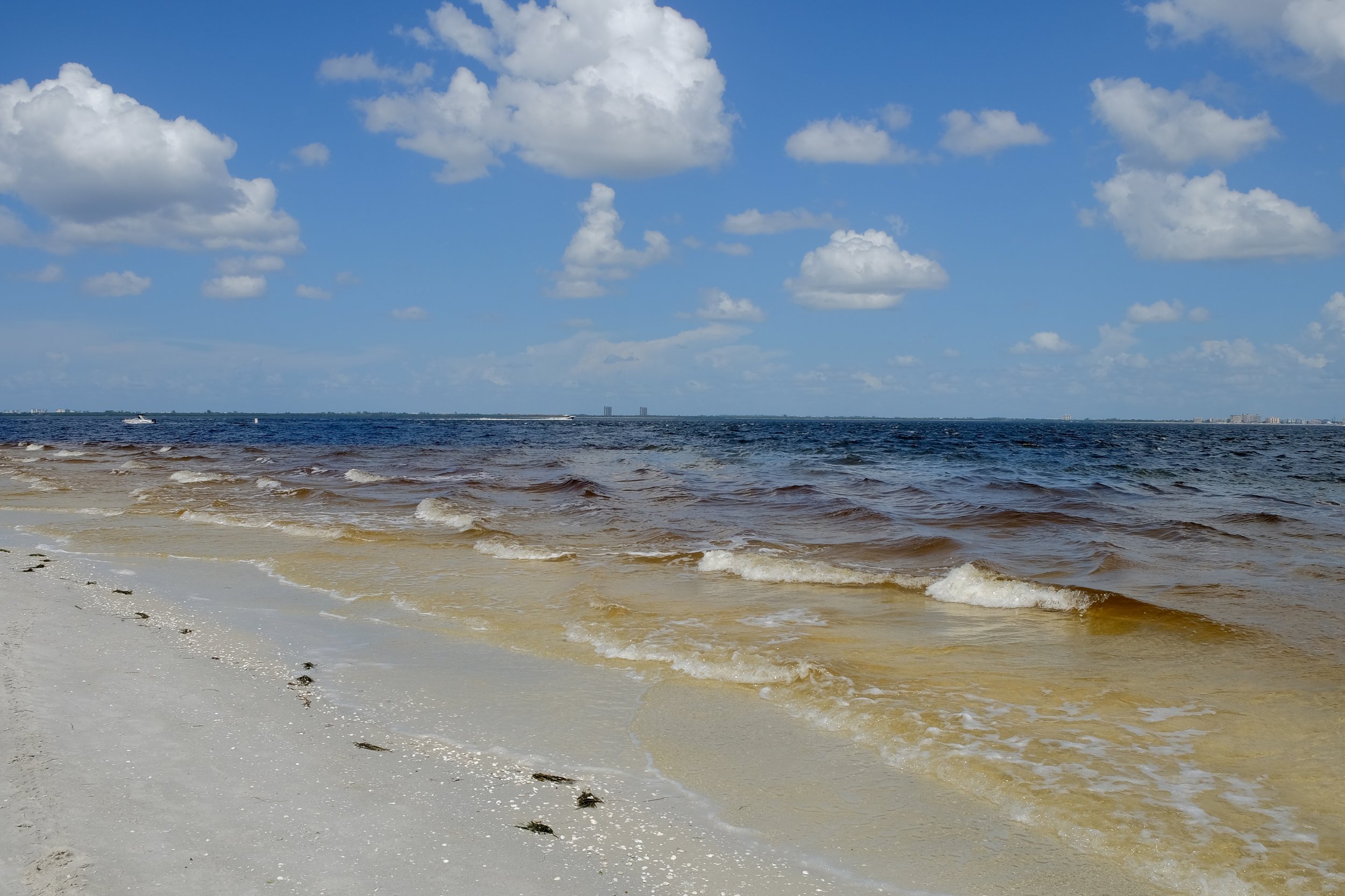
You can see the deep red waters hugging the beach.
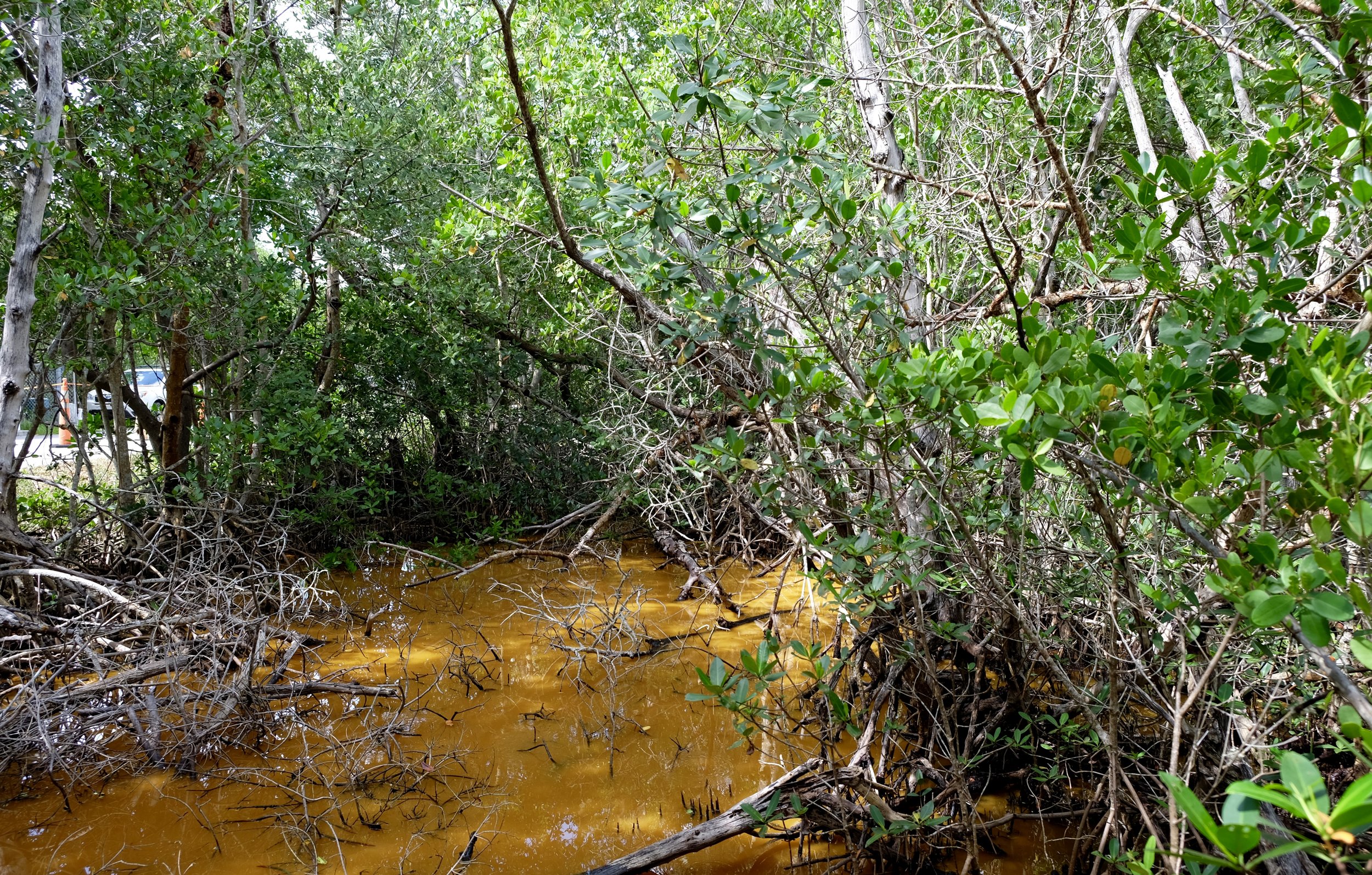
While walking along some of the mangrove boardwalks in Sanibel’s J.N. "Ding" Darling National Wildlife Refuge, this neon orange-yellow water was a common site, also caused by the rush of nutrients and bacteria from Lake Okeechobee.
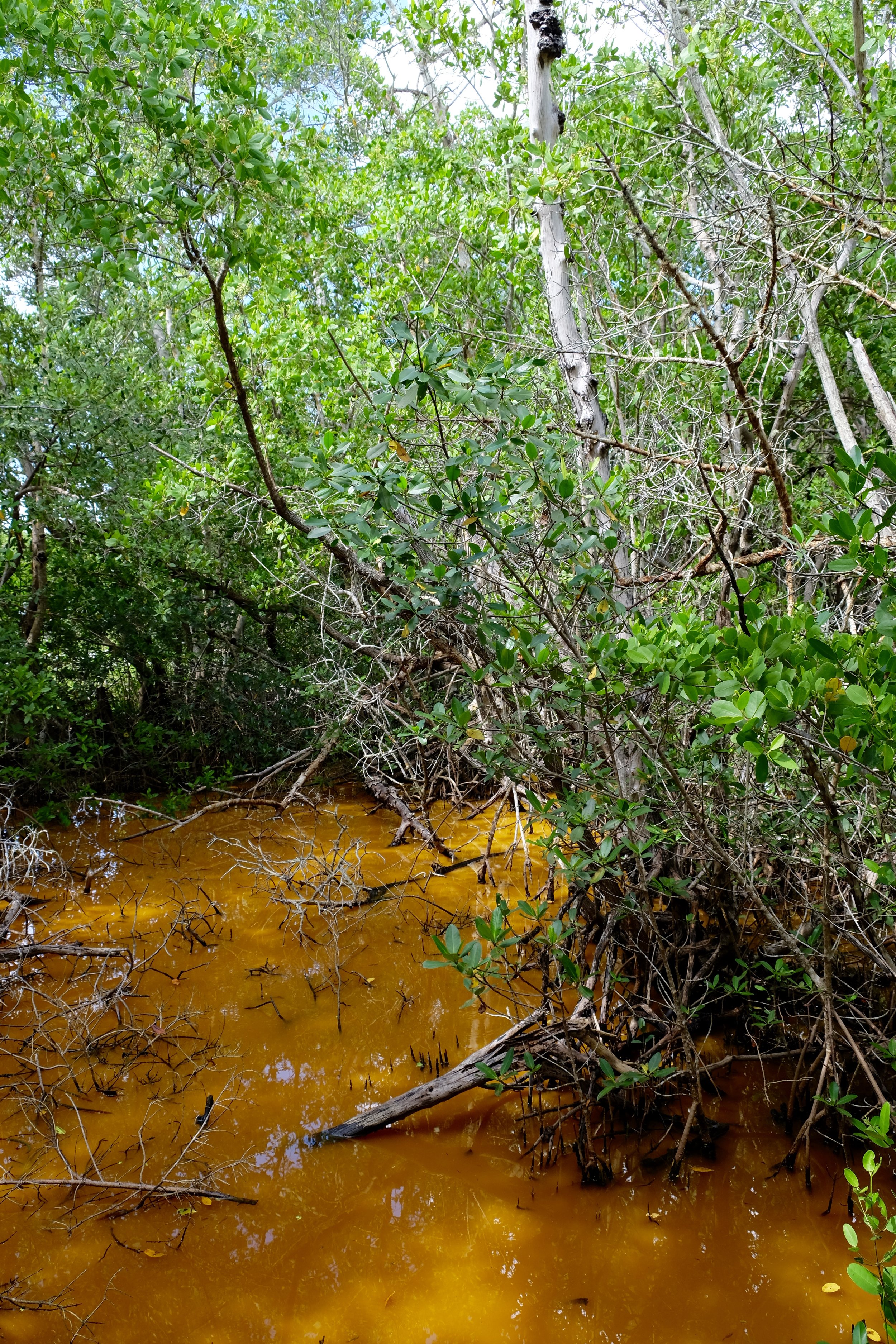
Mangrove systems are equally impacted by this pollution crisis.



















Hover your mouse over the image to see interview quotes and descriptions.
Tatiana Martinez | Cape Coral
Tatiana works at a global business consulting firm based in Fort Myers. A life-long Floridian, prior to moving to Cape Coral, she lived in Fort Lauderdale. In the last year since she’s relocated to the west coast, she’s seen the canals by her home turn a rancid green color; and Jaycee Park become unsafe. It used to be a favorite location for family outings with her three-year old son. We met with her at that park. Over the summer, her son has developed unending respiratory issues that have not subsided with antibiotics. She suspects it’s from the now contaminated air. Despite the new job, she and her husband are considering selling their home and moving.
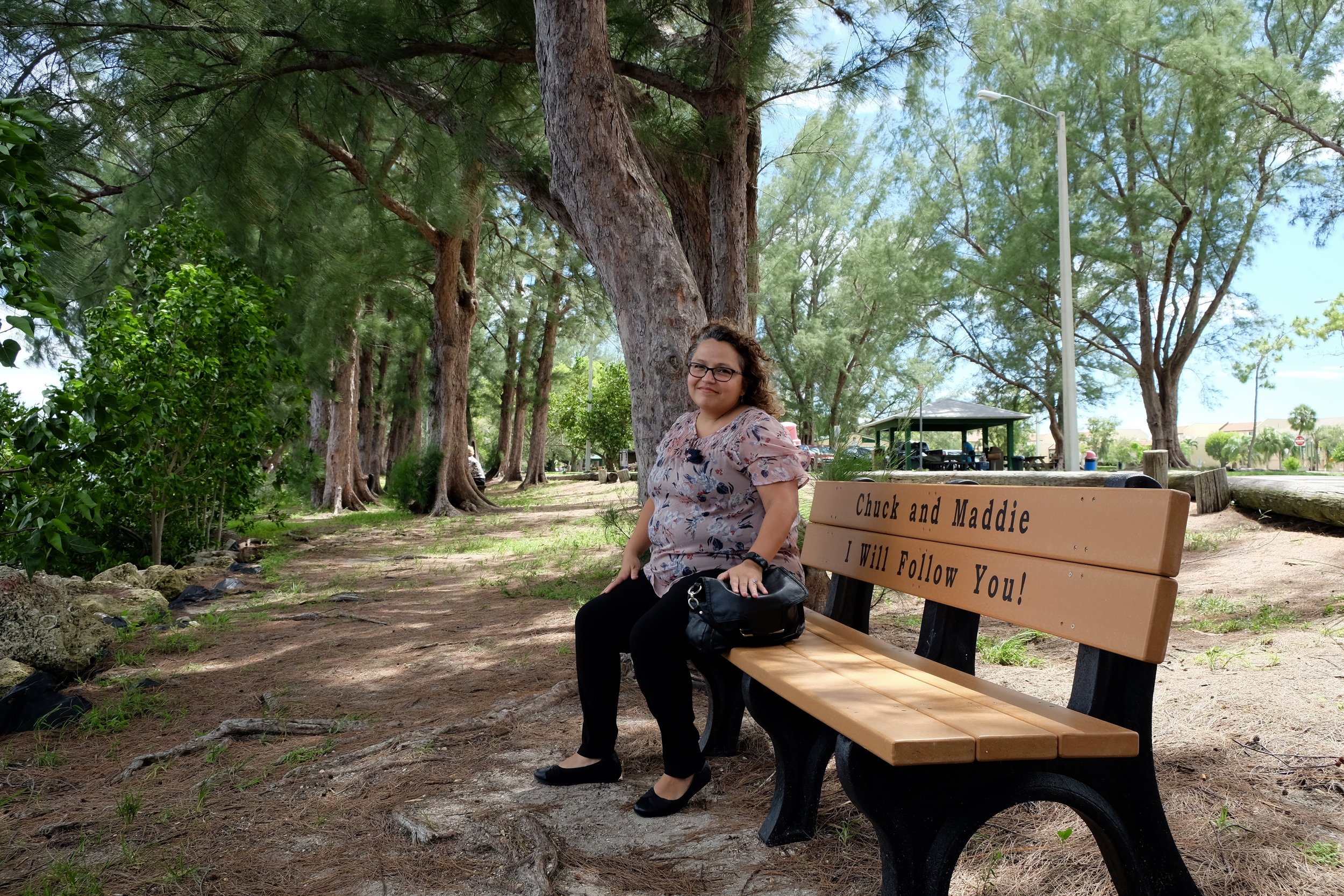
"We just thought 'okay, something unusual', but we weren't alarmed. We didn't really feel like it was anything to be alarmed about. I mean, I had recalled hearing stories about things like that, I didn't connect it to what was going on in Stuart until I started reading more about Lake Okeechobee and the water releases, and then all of a sudden I started to think about new stories [from] two years ago when I was living in Fort Lauderdale, and then it was like, 'wait a minute, is this what they were talking about?'"
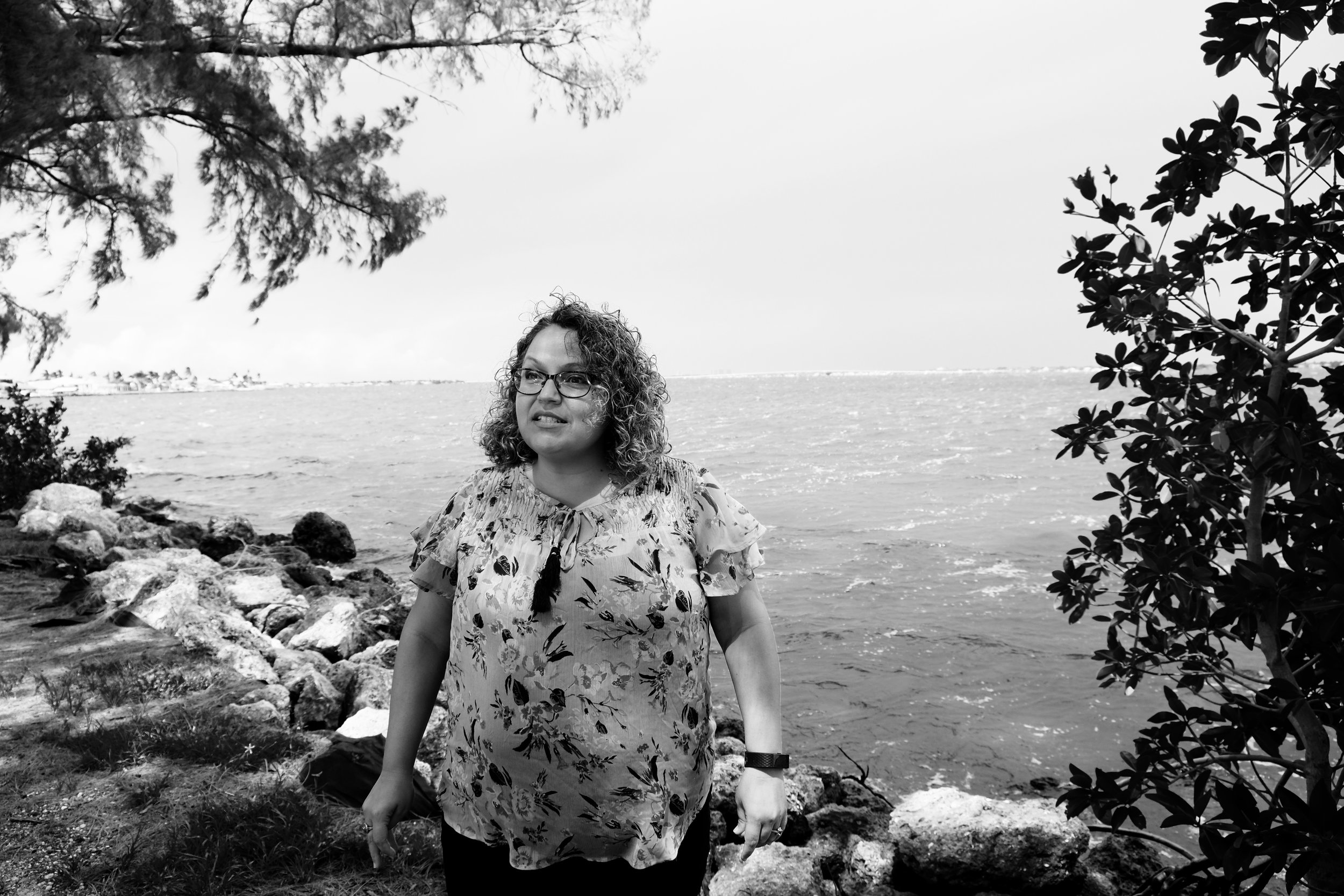
"We started to see the green water more and more... And then I saw a video that was filmed by one of the guys that's part of the Captains For Clean Waters and he had an airplane literally go from down the river, from the Caloosahatchee from the locks there, and did the whole thing, and I was like 'holy shit he's like flying over Fort Myers right now.' And I think that's when it hit home, because up until then I was like, 'maybe it's just going to be a thing up there, I'm not with that worry yet' and when I started to see from the sky the footage of the water and then I [realized] I really need to start paying attention to this because this is concerning…. then the deaths of the animals started, and then it feels like it literally happened. And it did, but when I think about it, it was like the last because we're in September now so its been like a good six months, five months. But that five months maybe the first two and a half, three, were discovery. Just kind of understanding and paying attention but not fully immersed in it."

Tatiana: "I had party at my house on the fourth of July with some friends from work and stuff, and we live on the water, and I thought: even then we were like 'we'll take the boat out and watch the fireworks,' like it wasn't a second thought to it. But we knew about it even at that time, it's just the more I started to hear about the possibility of this and then smelling it, I think that was another thing. Your senses, once its more than one sense that realizes it, it becomes even more real so its like you're smelling it, you're seeing it and I was like, 'okay, now you're getting more confirmation that this is poisonous because you're seeing death as part of it'. So it's like all these connections start to come together and then all of a sudden it was like, is this, am I like surrounded by something that's completely toxic? Like I don't even know what to think anymore."
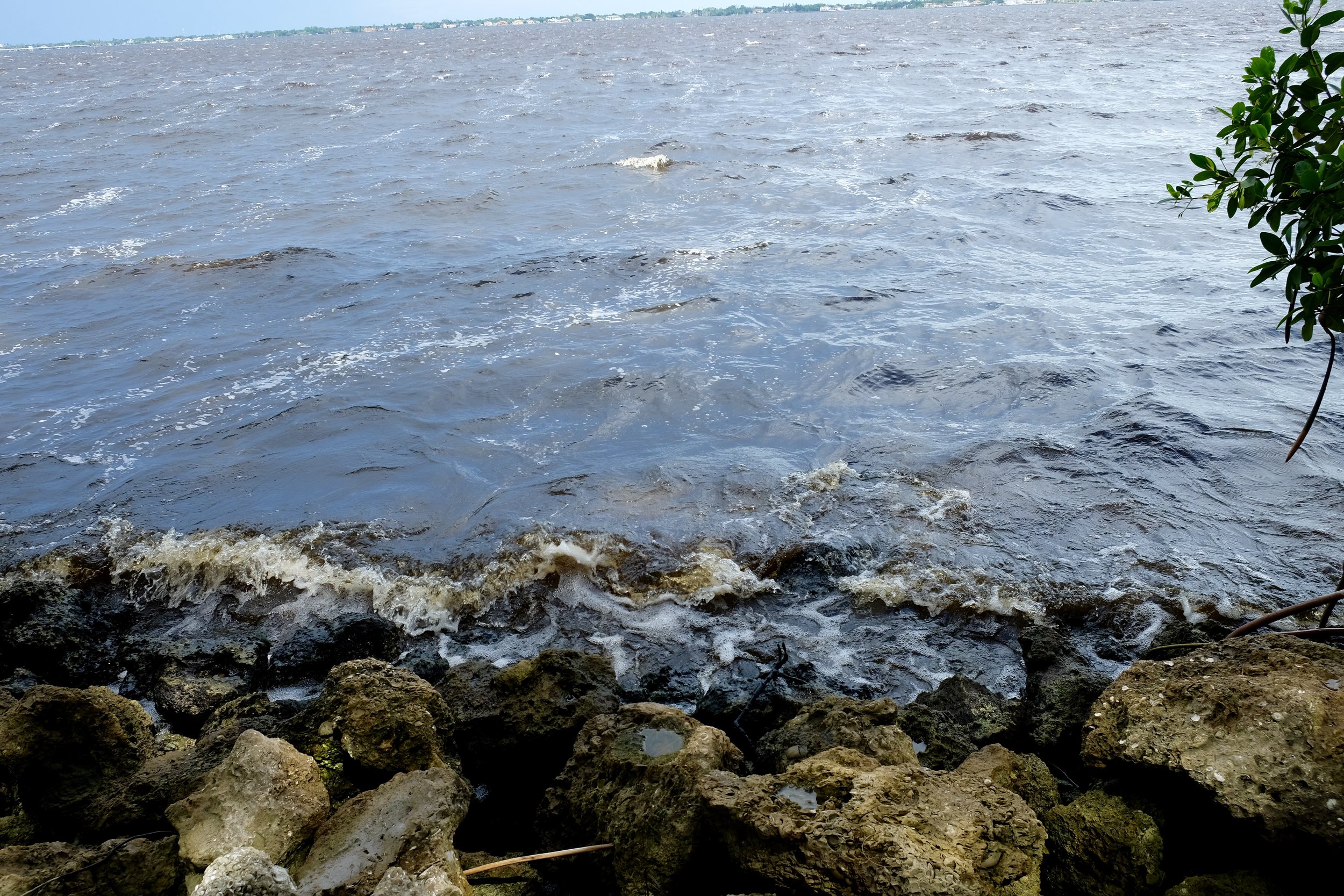
Tatiana: "The Army Corps of Engineers were here in Cape Coral. I think it was in early July to mid-July, and I feel like if I wasn't paying attention I wouldn't have known she was here. And they did the meeting at like 12:30 on a weekday, so its like, who the hell is going to make it then? Everyone's working and I almost took the day off, but then I heard that it got so packed they weren't allowing people to get in anyway."
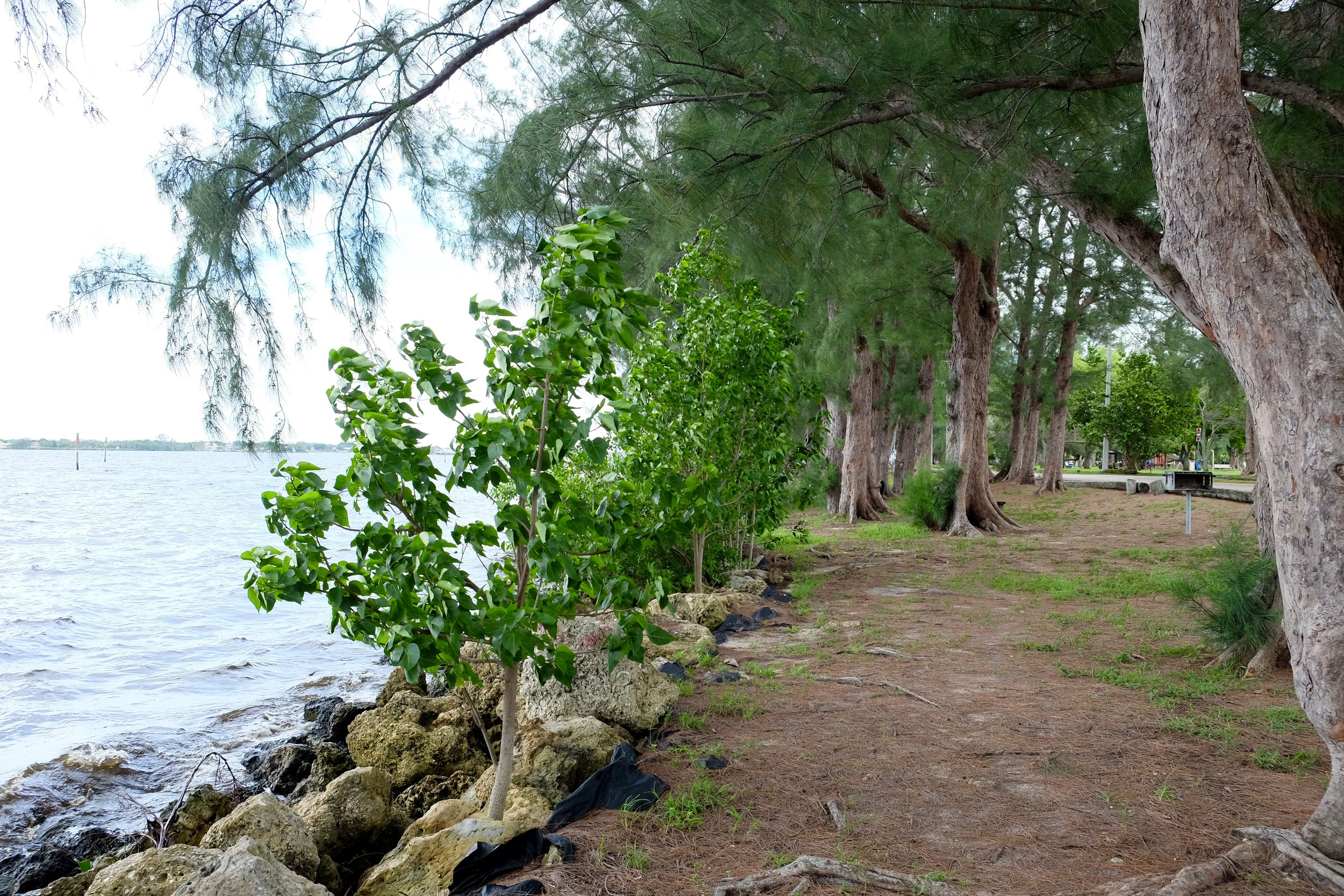
Tatiana: “My son started coughing probably about a month ago, and I didn't really think anything of it and it just wasn't getting any better. And I thought, 'okay, he's a kid, there's nothing unusual about a kid having a cough'. He also started daycare so I was like, 'alright, this cough is not going away', so we took him to the doctor. The doctor said he has an ear infection, okay no problem. We put him on amoxicillin for ten days and nothing. Maybe I'm a little annoyed by that so we take him back to the doctor. Doctor said, this time I wanted to take him because I wanted to talk to the doctor and kind of see if she said anything about if its related to environmental factors that could possibly be contributing to it, or maybe not allowing him to heal properly, I don't know. So when I asked her I was like 'what do you think about the cyanobacteria?' She was very dismissive about it... so now so he's going on almost well, 20 days in antibiotics straight, and he's still coughing and he got sick on top of it."

"My concern now is that if he doesn't get better, I'm kind of like on the thought frame of like, I have no real answers from the doctor. I feel like they can't say one thing definitely or not, so what's the next step? Is it to get him on some kind of nebulizer? Something like that? I mean, if its an ear infection then why isn't it clearing up? I just don't know what the next step is. If it gets to something that severe then I feel like my next step to protect my son would be to take him out of this environment to see if its an environmental factor that's causing it. And if it is, then we just got to go. I can't, out of everything the most important thing is my son, so I can't subject him to something... I'm literally talking about walking away from our dream home and potentially... I said to my husband last night, because I don't think he thinks that I'm serious. I said, 'you really have to come to grips with the idea', because I was talking to his mom yesterday and she was in South Carolina, that if he doesn't get better soon we may just pick up and go even if it’s just for a week or two just so I can see if he gets better."
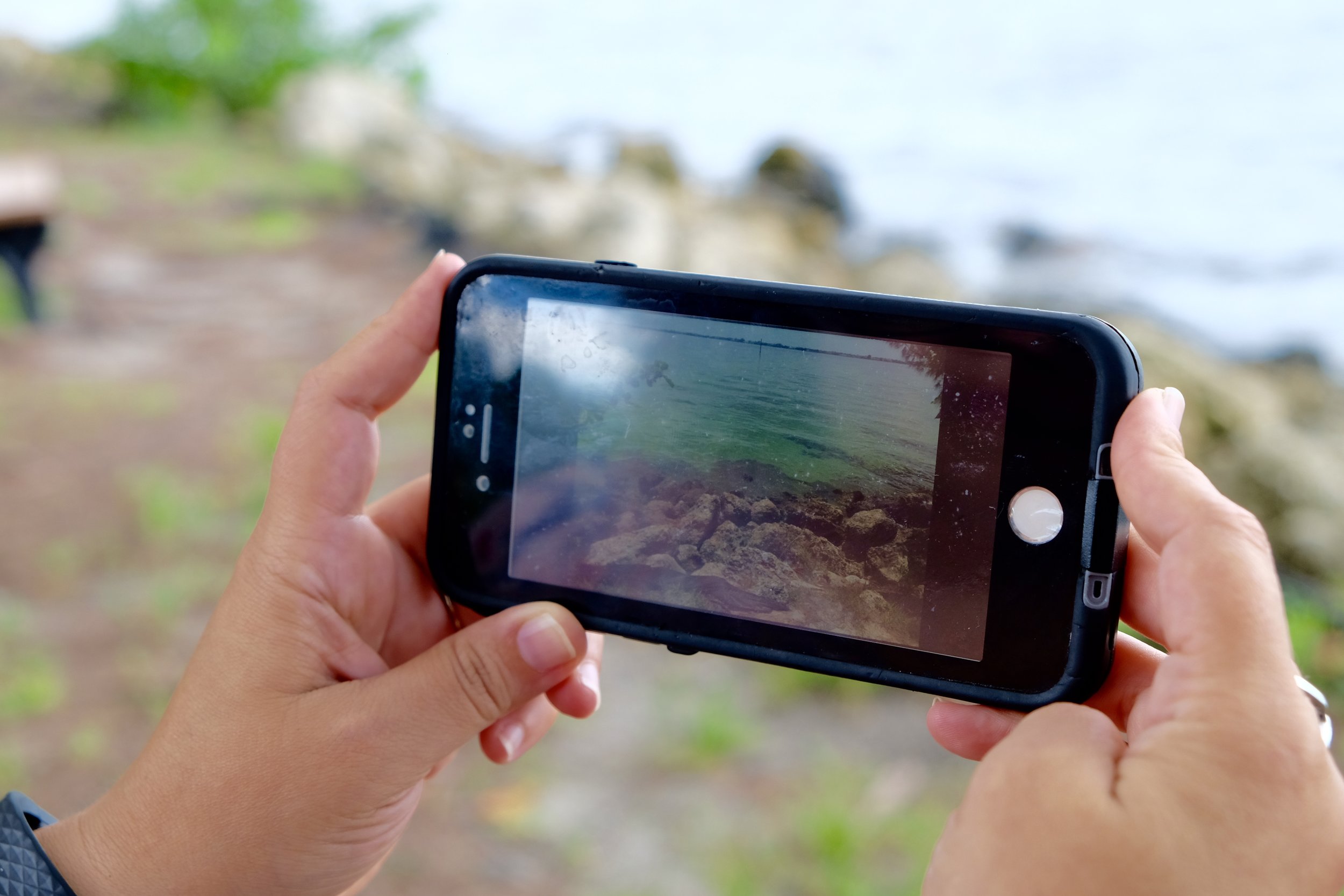
Tatiana showed us photos with green algae lapping at the edge of the park.
Tatiana": “We literally live on a house on the water, and we cannot get on our boat. I look at it every day, and I like want to cry. Because I'm like, ugh that's nice. I wish we could go on the boat."

Tatiana showed us photos of the canals by her home.
Tatiana: "From what I understand, Rick Scott has done badly in terms of water management. He, to my understanding, had defunded about $700 [million] from water management. It seems to me like the priorities in Florida are not focused on environmental issues, they're focused on tourism, they're focused on development, and they're focused on economic growth. But not the preservation of what sustains this place that we call paradise. You can't do one and not the other, you can't have all this growth, you can't have all these people, you can't maintain this type of pollution that we're giving into this environment without thinking about the adverse effects that we're having towards the animals and birds and trees and everything. Everything has to have a balance. It's out of wack."
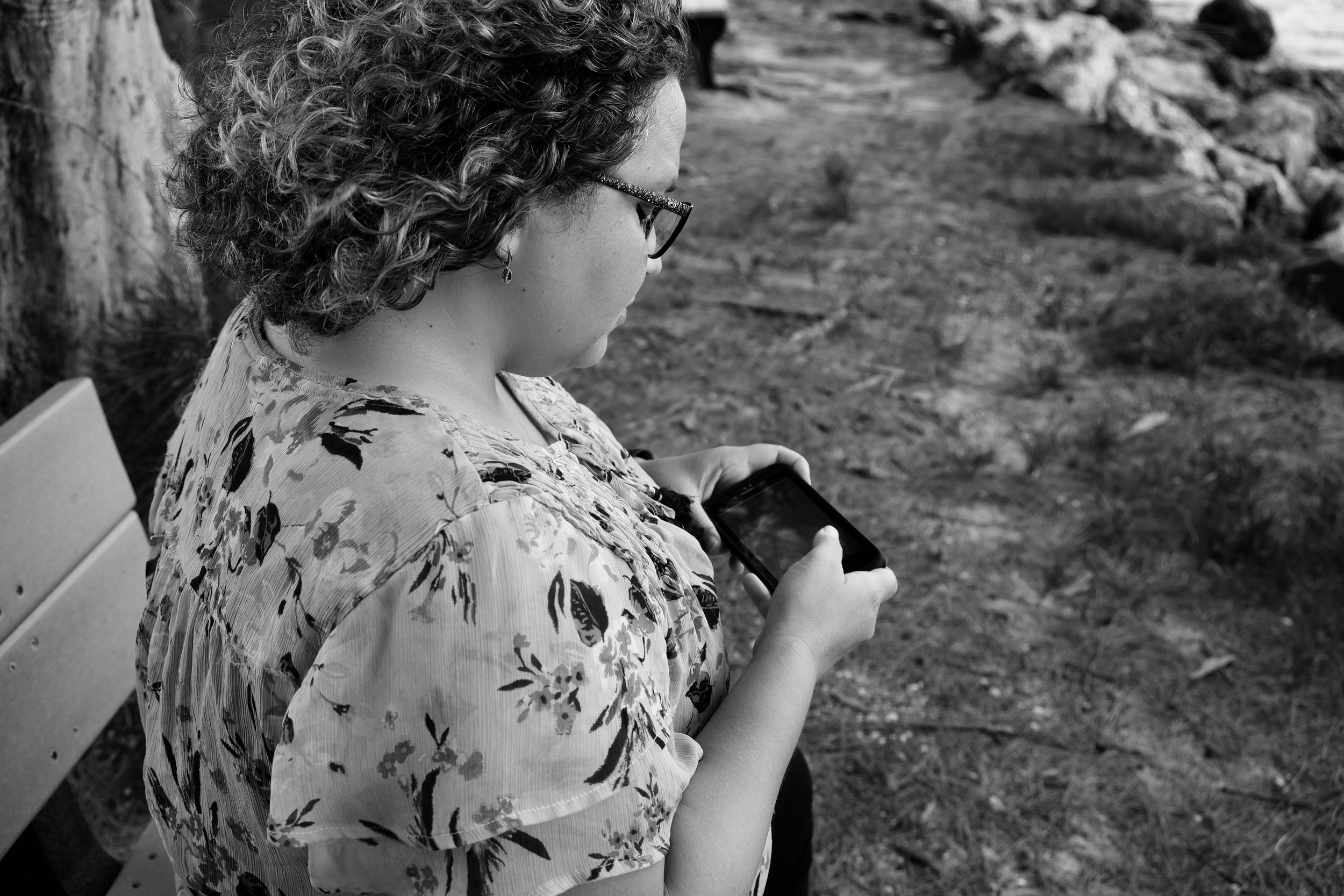
"I don't think I could go through this another summer. It has been emotionally draining, physically, emotionally like, no. I don't think I could do it. I think everybody wants clean water, I think everybody wants to feel safe, I think everybody wants to know that future generations will be able to live here and love the things that they loved as well. It's not about race or religion or politics, it's about sustaining life."

Tatiana: “There's been no information from the city, from the health department, from Lee Health, nothing. I feel like they have a responsibility to tell people, 'if you want to stay here, fine, but here's what you could be possibly subjected to'."

Tatiana: “They created this unnatural system where the water releases from Lake Okeechobee are being leaked out through the Port St. Lucie River and the Caloosahatchee River and that now everybody says 'big sugar, big sugar, that there's all this farmland south and they're using... there's farmland north, there's farmland south, they say they keep the water levels at Lake Okeechobee higher because the drought season they try and keep the water levels in case there's a need for that. But then people are saying that there's also money that's being given to them by big sugar because they need it for watering their crops and if they don't have it, then they get into a bad situation."
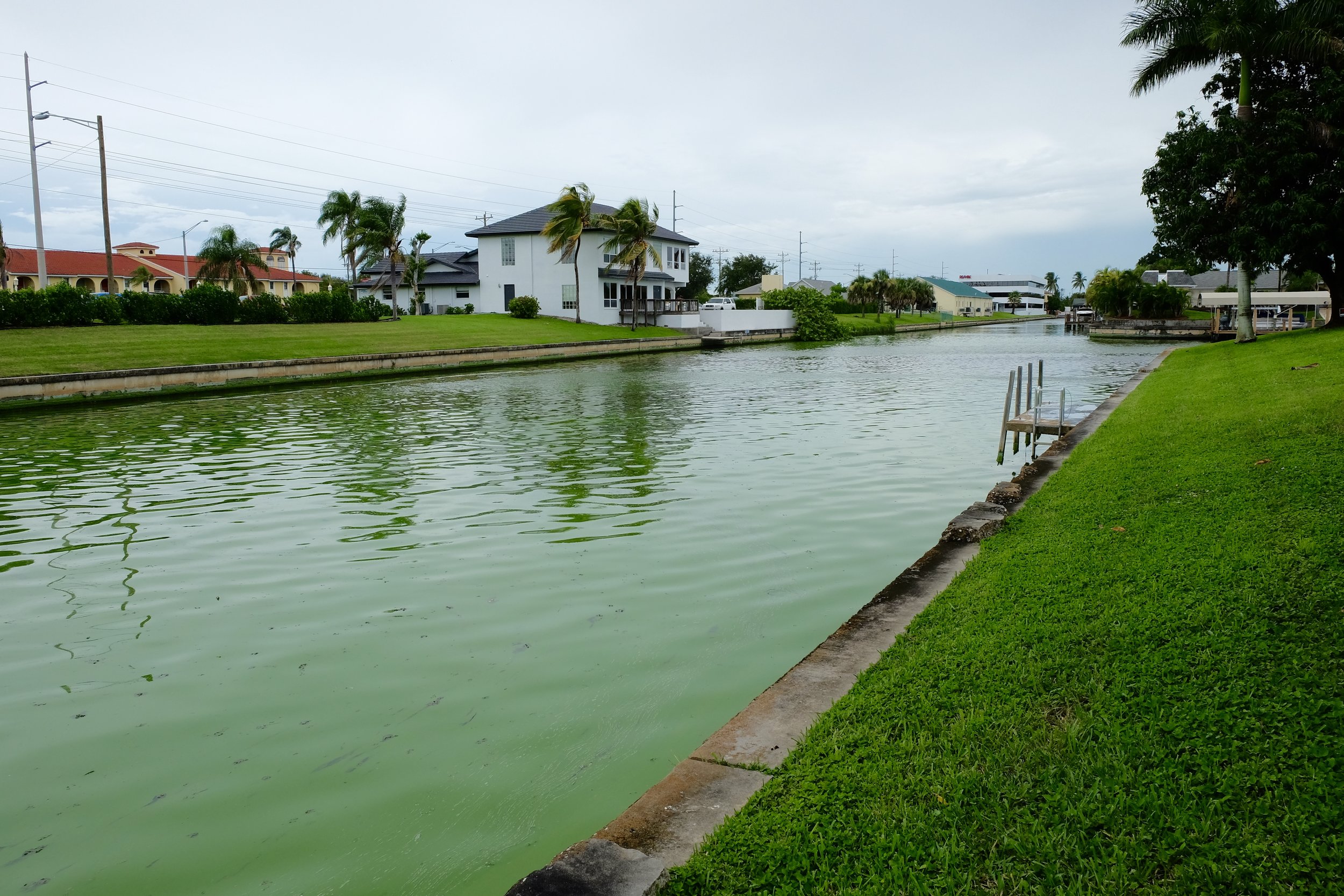
Tatiana: "What I think an immediate thing could be is, bring down the water levels to more where they were naturally at Lake Okeechobee so that you don't have this overgrowth and natural sea grasses can grow. Grasses in the Lake can grow that filtrate the systems and allow the sun, just let nature do its job like it’s supposed to. Stop making these man-made things. When the Army Corps of Engineers was here she herself said, they were like why are the water levels so high? You guys had us on a drought during winter you said we couldn't water our lawns and all of this and you wouldn't release the water, but now you're releasing all this water, why? And she's like, well based on NOAA's prediction on what the weather was going to be like and we were supposed to have untimely dryness or drought, but its not happening like that so now we have too much water. So bad management, bad accountability, not enough attention, not enough information, people, there's just not a strong infrastructure here for environmental policies and information. And not only that, but the human effect. They haven't talked about the effects of what these aerosols potentially could do."
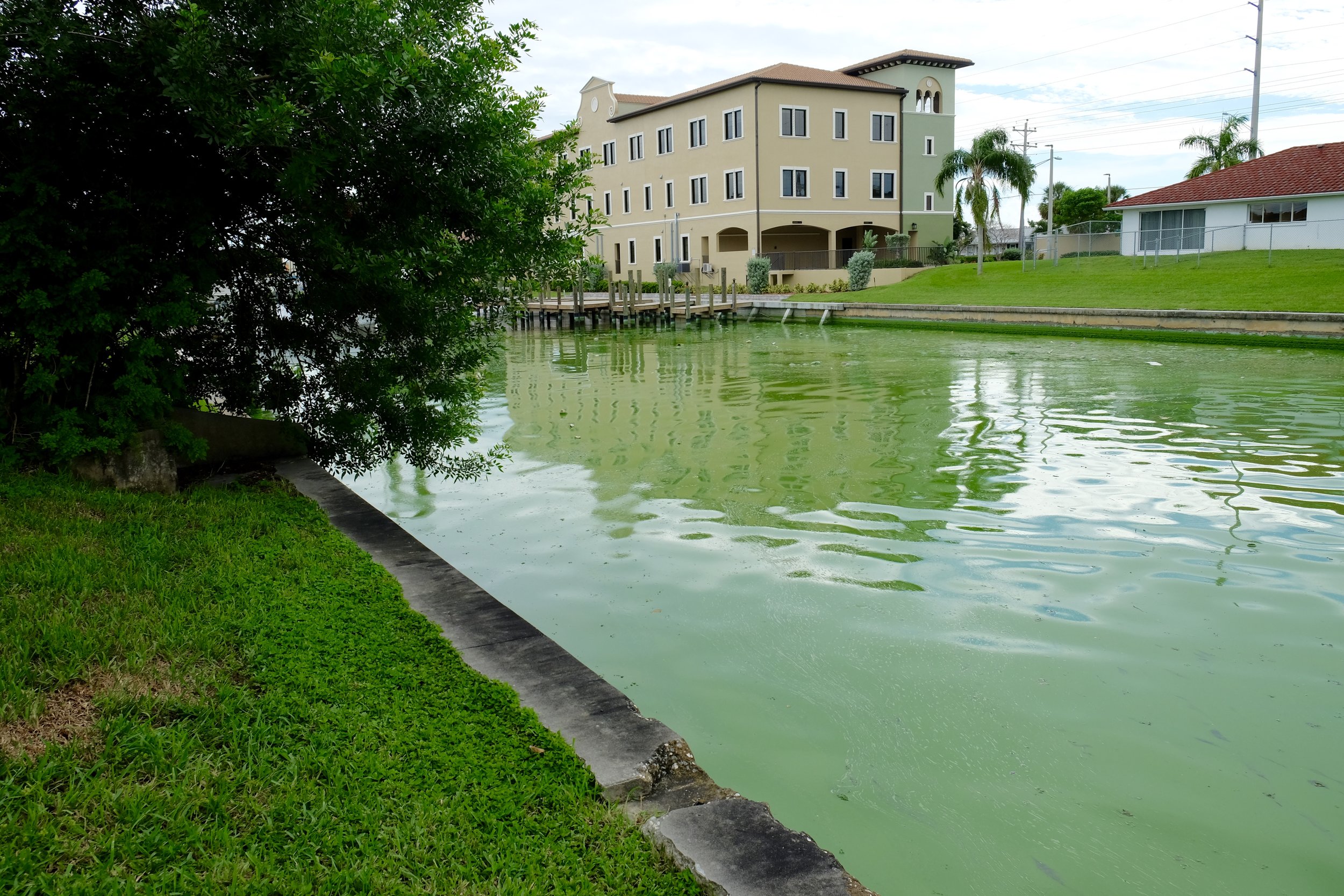
Staff Attorney for Save the Manatee, Anne Harvey Holbrook: “We hope that, if there is a silver lining to be found, it is that the public at large now has a better understanding of these harmful algae bloom events and their long-term causes and consequences, and will as a result be more engaged in resolving Florida’s nutrient pollution problems going forward."

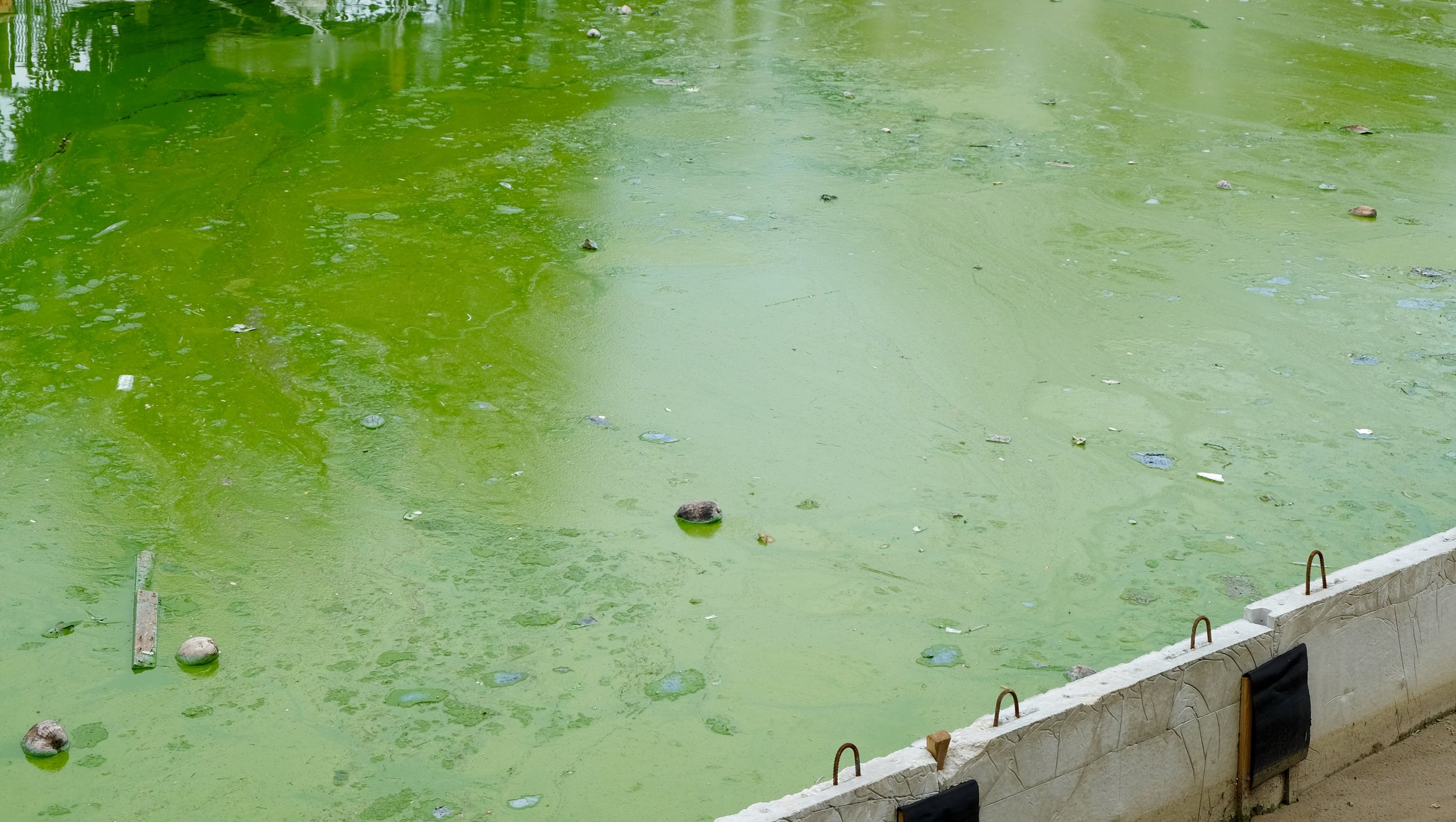
Here you can see a close up of that blue-green algae that is inundating the canals and small waterways of Cape Coral. The smell in these areas is unbearable, and the long term health impacts of the gasses emitted are not entirely known. It is known to cause health impacts like: stomach aches, diarrhea, respiratory issues, fatigue, skin sores, muscle and joint pain, and many other health problems for people in regular contact with the cyanobacteria, aka: blue-green / green algae.

Mallory Clancy, licensed Professional Civil Engineer: "I am not aware of any degradation or physical impacts to stormwater infrastructure caused by Red Tide (Karenia brevis) in the ocean or Blue-Green Algae (Cyanobacteria) in the Caloosahatchee. However, the blue-green algae has so overtaken slower-moving portions of the Caloosahatchee that I'm sure municipalities bordering the river are having to redirect a lot of resources (labor, time, equipment) to responding to complaints and therefore could be seeing delays to regular maintenance. I do not know of any City/County efforts to do anything about red-tide. The tourism industry has definitely suffered as many events have been cancelled or moved, and I know we personally have not visited the beach or any beach-side businesses."
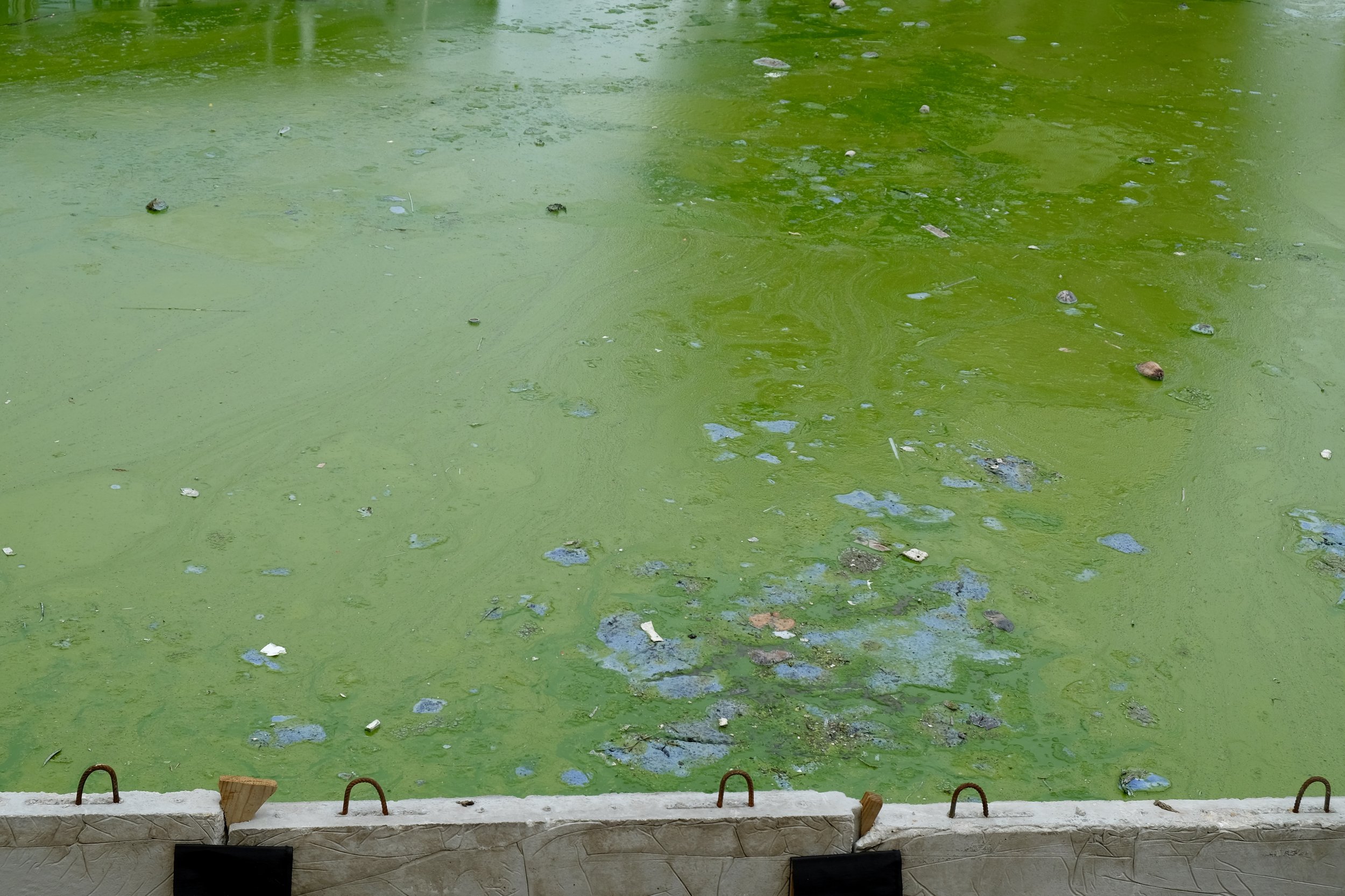
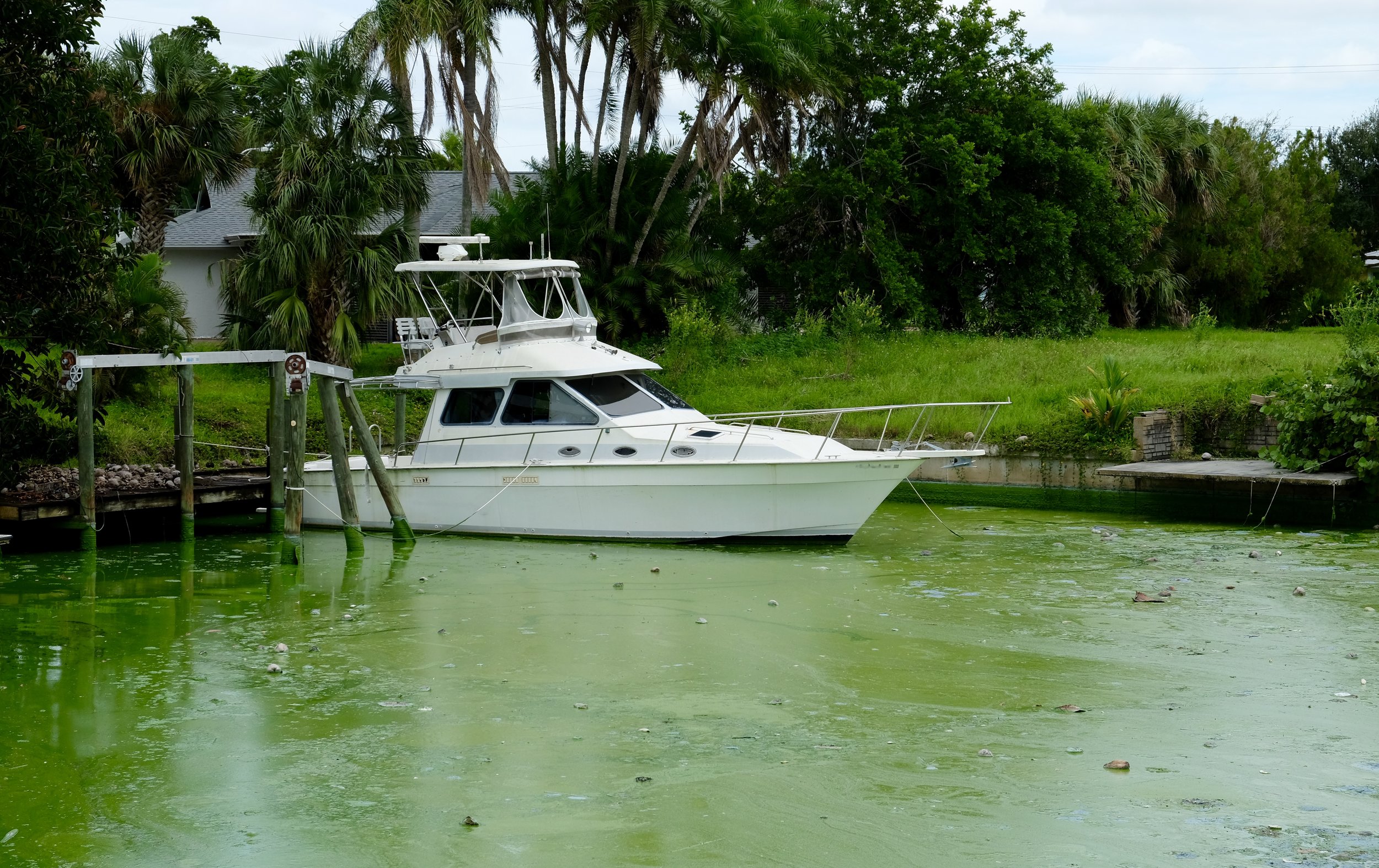




















Hover your mouse over the image to see interview quotes and descriptions.
Lake Okeechobee + Surrounding Areas
What’s happening in this picturesque place is having a dire impact on downstream communities in the Fort Myers area. Environmental rollbacks have allowed large-scale agribusinesses surrounding Lake Okeechobee to use more pesticides and more nutrient rich fertilizers. That runoff flows into Lake Okeechobee; and later, through a system of locks, flows into the Caloosahatchee River. A vital freshwater river that flows into Estero Bay and the Fort Myers area, bringing with it that same nutrient rich runoff and bacteria into these communities. Those nutrients feed red tide, while also bringing freshwater green algae into saltwater areas.
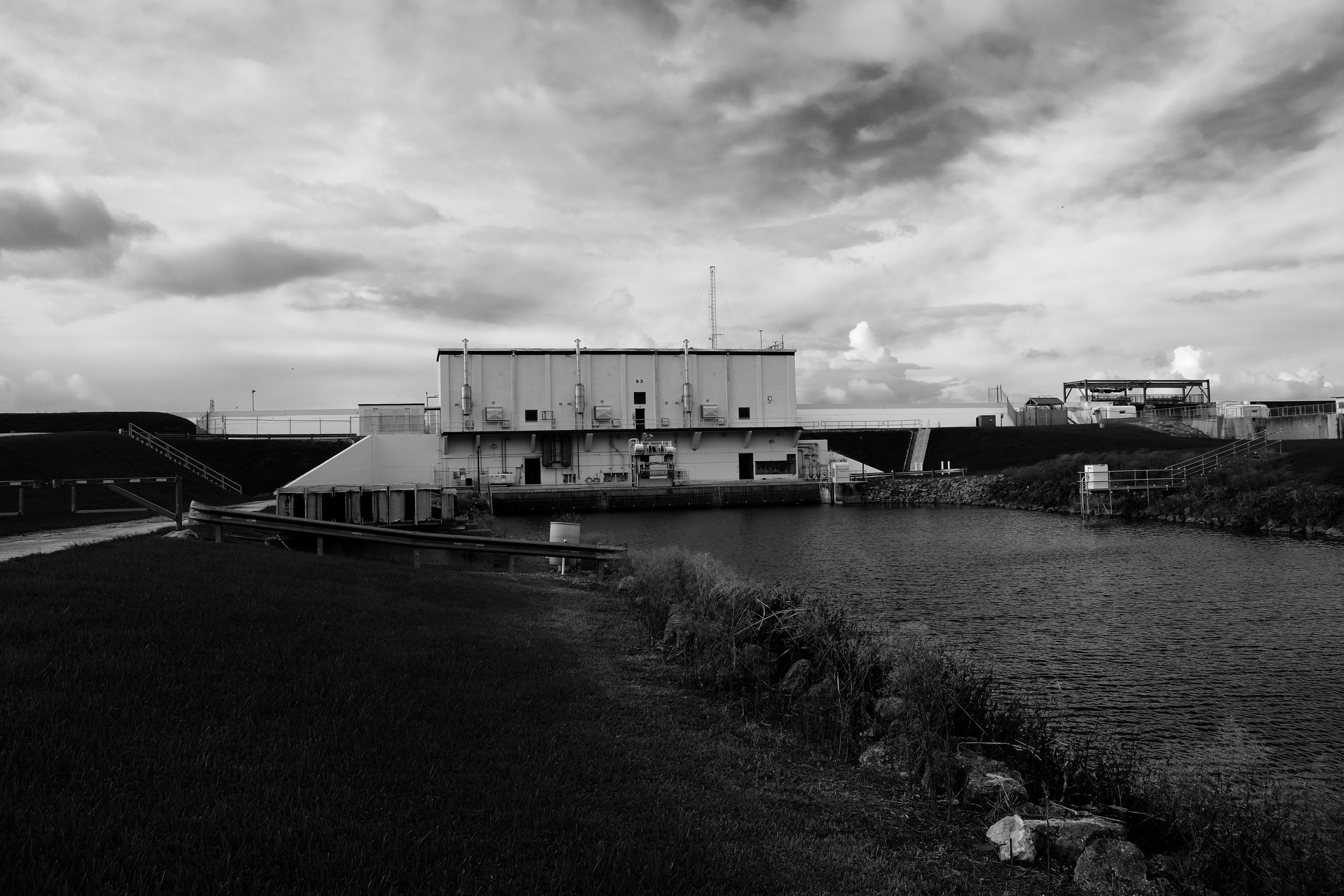
In the 1930’s, the Army Corps of Engineers surrounded Lake Okeechobee with a large earthen dam, aka: the Herbert Hoover Dike, with various locks controlling the flow of water in and out of the lake.
This is the lock that controls the flow of water into the Miami Canal, which flows into the Miami River, and right into the downtown Miami. It is not currently being used to control the flow of water out of Lake Okeechobee, but it was one of the few we could get up close to, to see how this system works.

Right now, the Army Corps of Engineers is only utilizing the locks for the St. Lucie and Caloosahatchee Rivers - allowing nutrient rich and bacteria laden water to enter into the waterways and estuaries in the Fort Myers area, and Stuart, Florida. Now both coasts are affected by this pollution in the form of a devastating red tide.
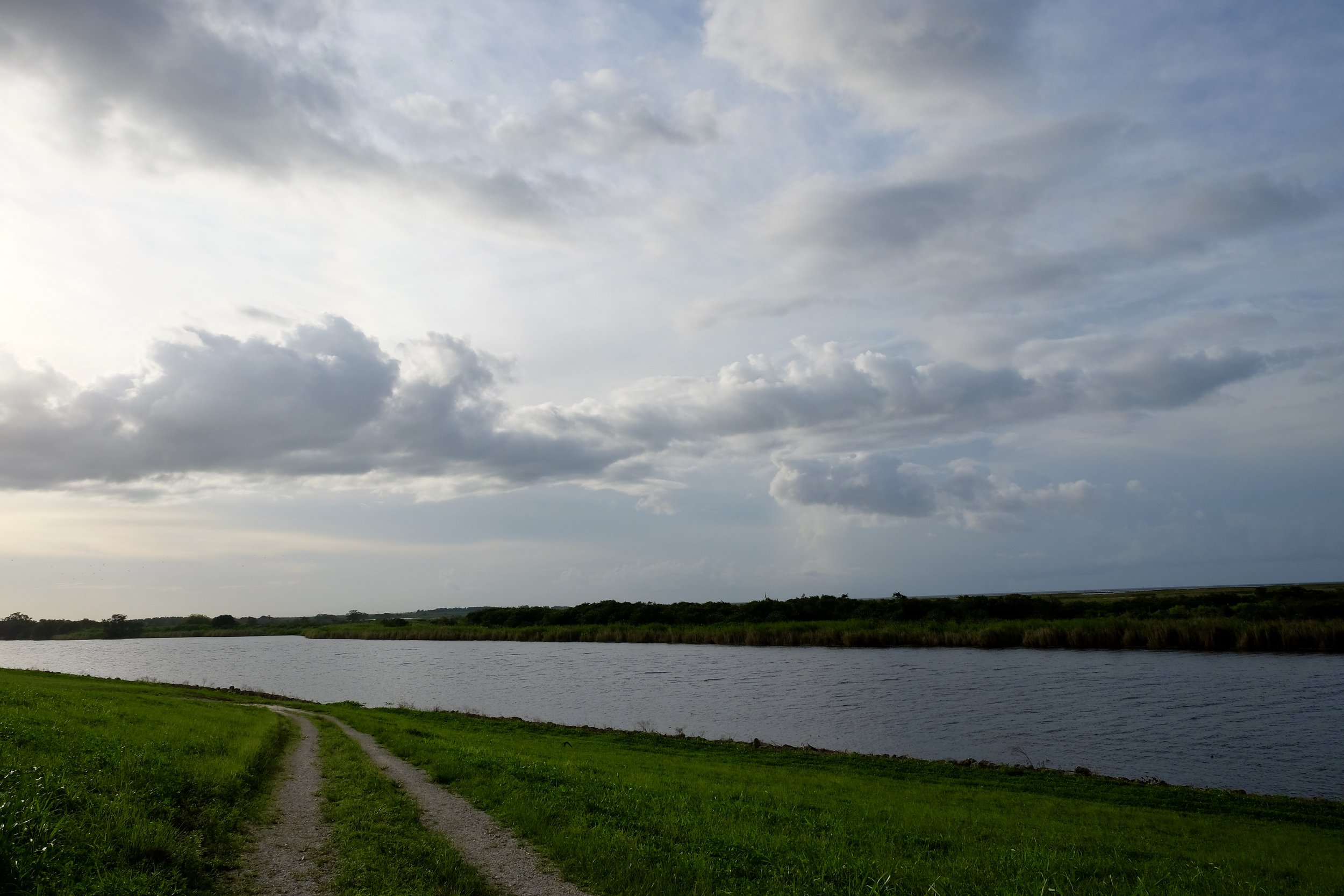
Staff Attorney for Save the Manatee, Anne Holbrook: "US Army Corps of engineers could mitigate the cyanobacterial blooms on the Caloosahatchee and St. Lucie Rivers by ceasing releases of contaminated water from Lake Okeechobee. However, that does nothing to ultimately address the root problems of why the water in the Lake is polluted in the first place. The sugar growers in the Everglades Agricultural Area have been using the lake for irrigation and then backpumping fertilizer-laden water into the lake. Moreover many of the rivers and springs in North and Central Florida drain to the lake, depositing nutrients from all around the state. The sources of these nutrients are many, and overall policy for land and water management need to change from a culture of deregulation to one of environmental protection to truly address the underlying causes of Florida’s harmful algae problem."
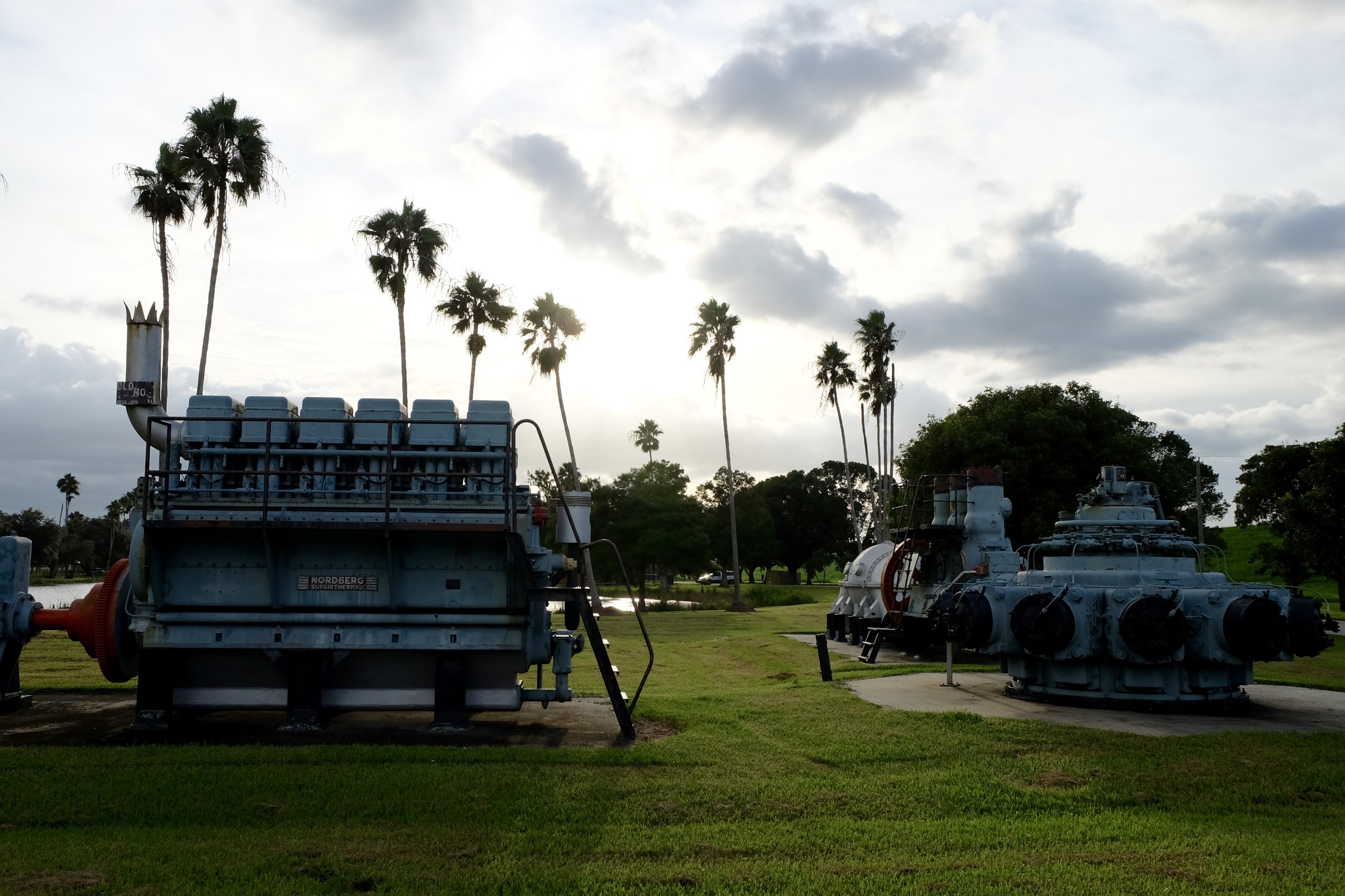
You can see some of the heavy duty machinery used to manage the flow of water.

Before 1948, this whole area was sawgrass, and served as a vital part of the Everglades watershed system - accounting for 27% of the historic Everglades. Having a total area of 700,000 square miles, 500,000 square miles is currently used for sugar farming. The entire Everglades Agricultural Area was established as a means of protecting the ecosystem in conjunction with agriculture - with 15 canals and 25 water control structures, managed by the South Florida Water Management District.
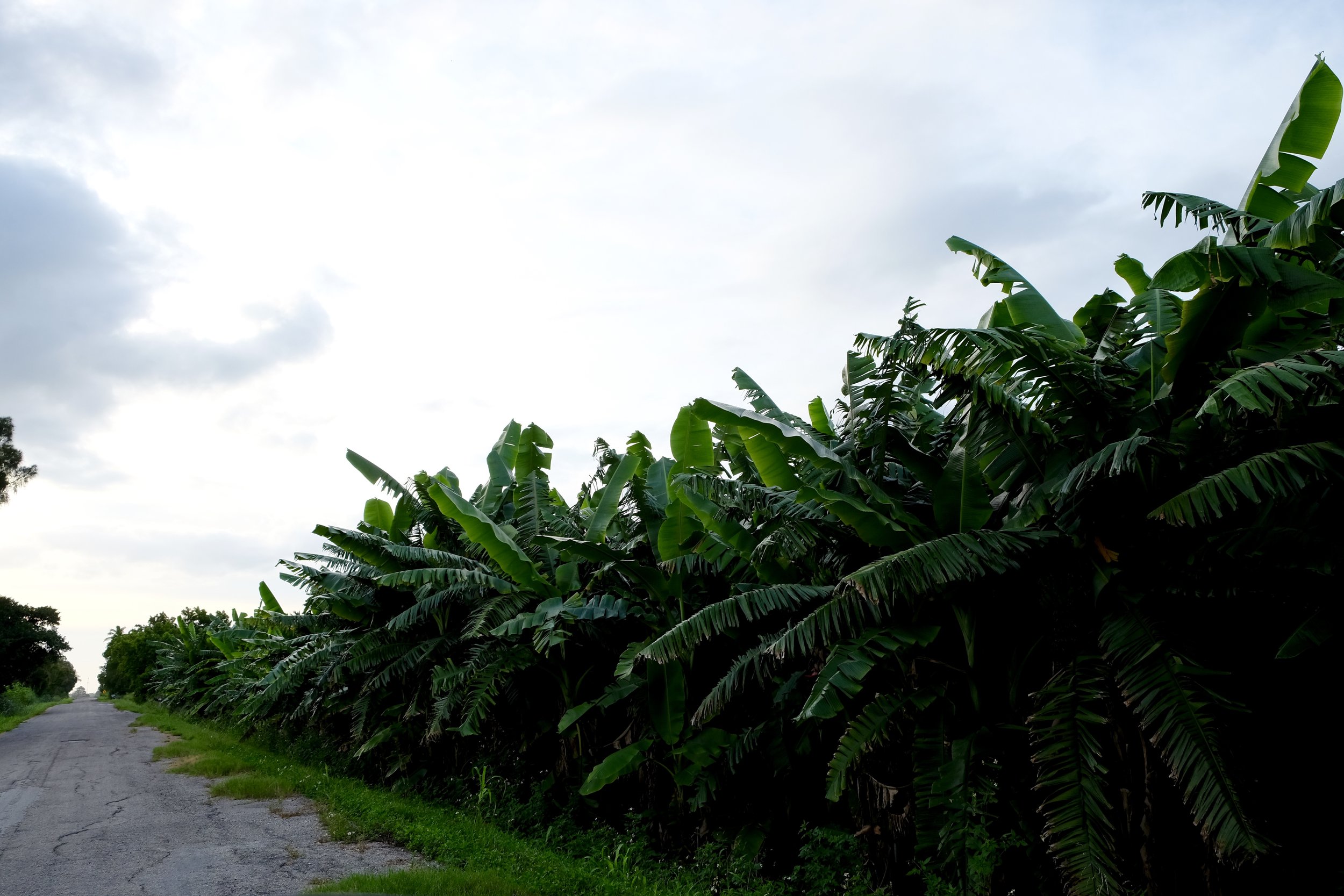
The Everglades Agricultural Area (EAA) rests where the ‘river of grass’ or Everglades, used to begin. Today, runoff from agriculture businesses in the EAA is ending up in Lake Okeechobee. The water has no way to flow south as nature intended, and is too polluted to go to the Everglades without being treated. Instead, this polluted and nutrient rich water is being sent down the Caloosahatchee and St. Lucie Rivers - feeding naturally occurring red tide with nutrient rich water, and sending freshwater blue-green algae into saltwater ecosystems. The damage seen in Fort Myers is a direct result of what’s happening here.

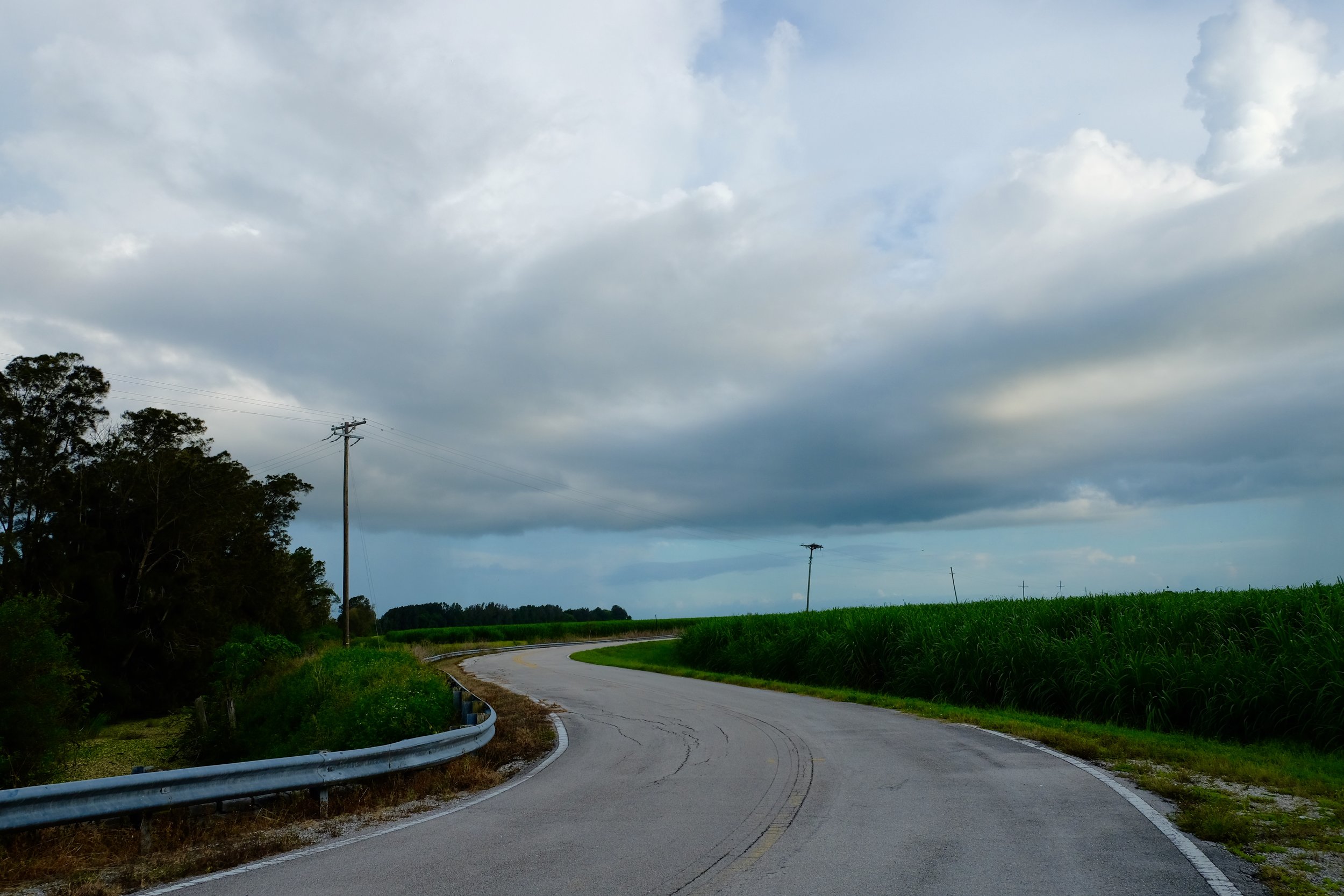
Sugar crops on a winding road through the EAA.
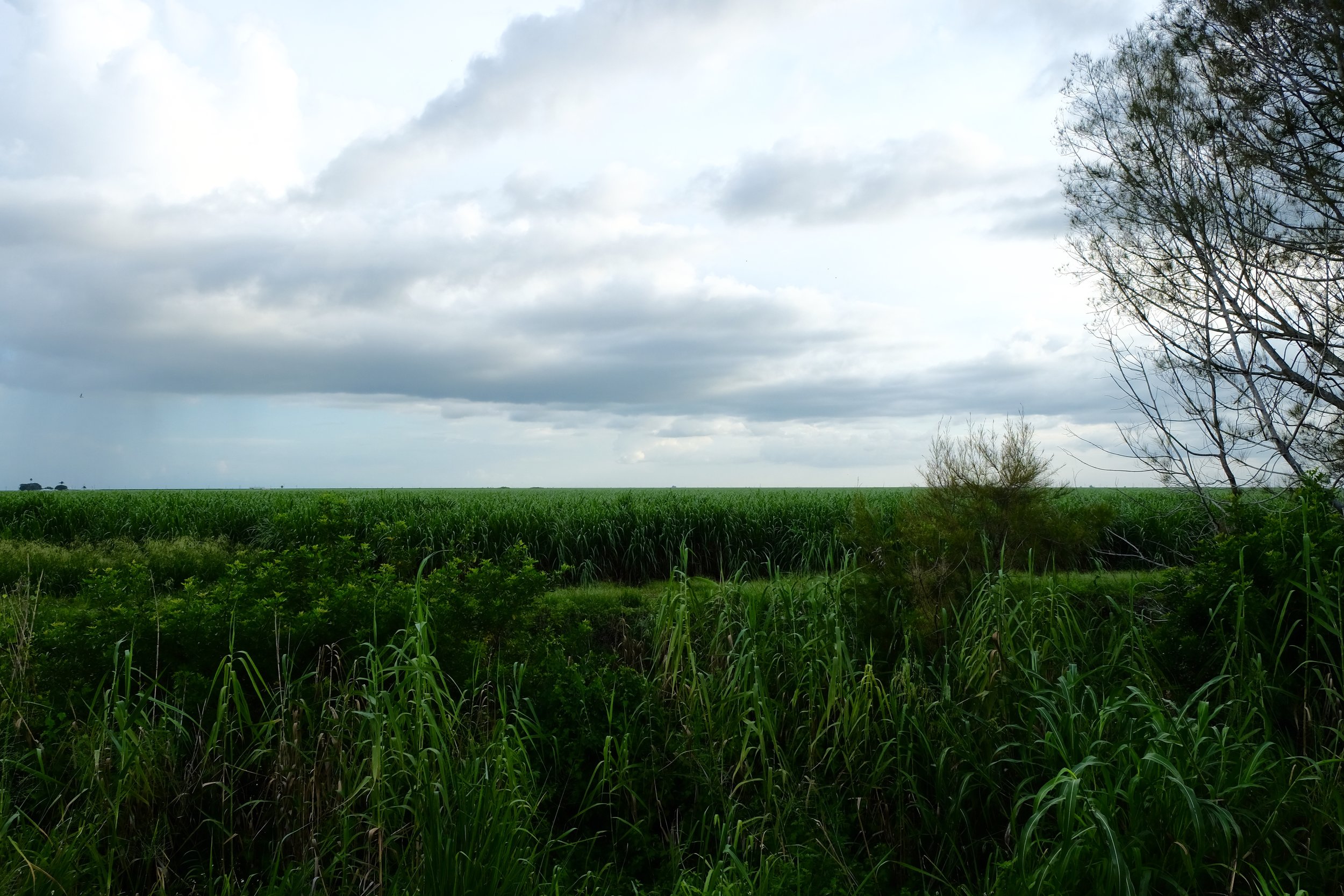
Sugarcane
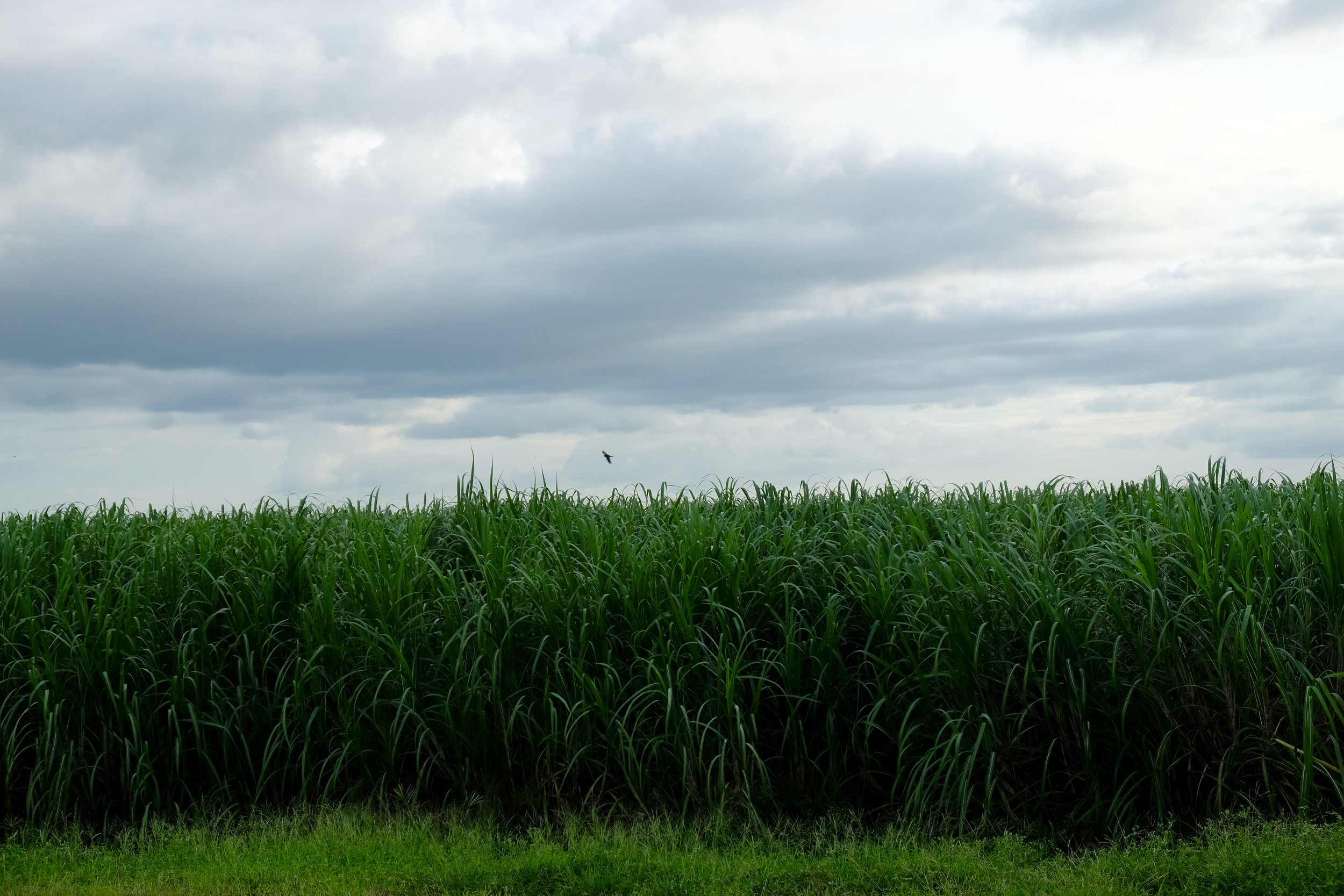
Sugarcane
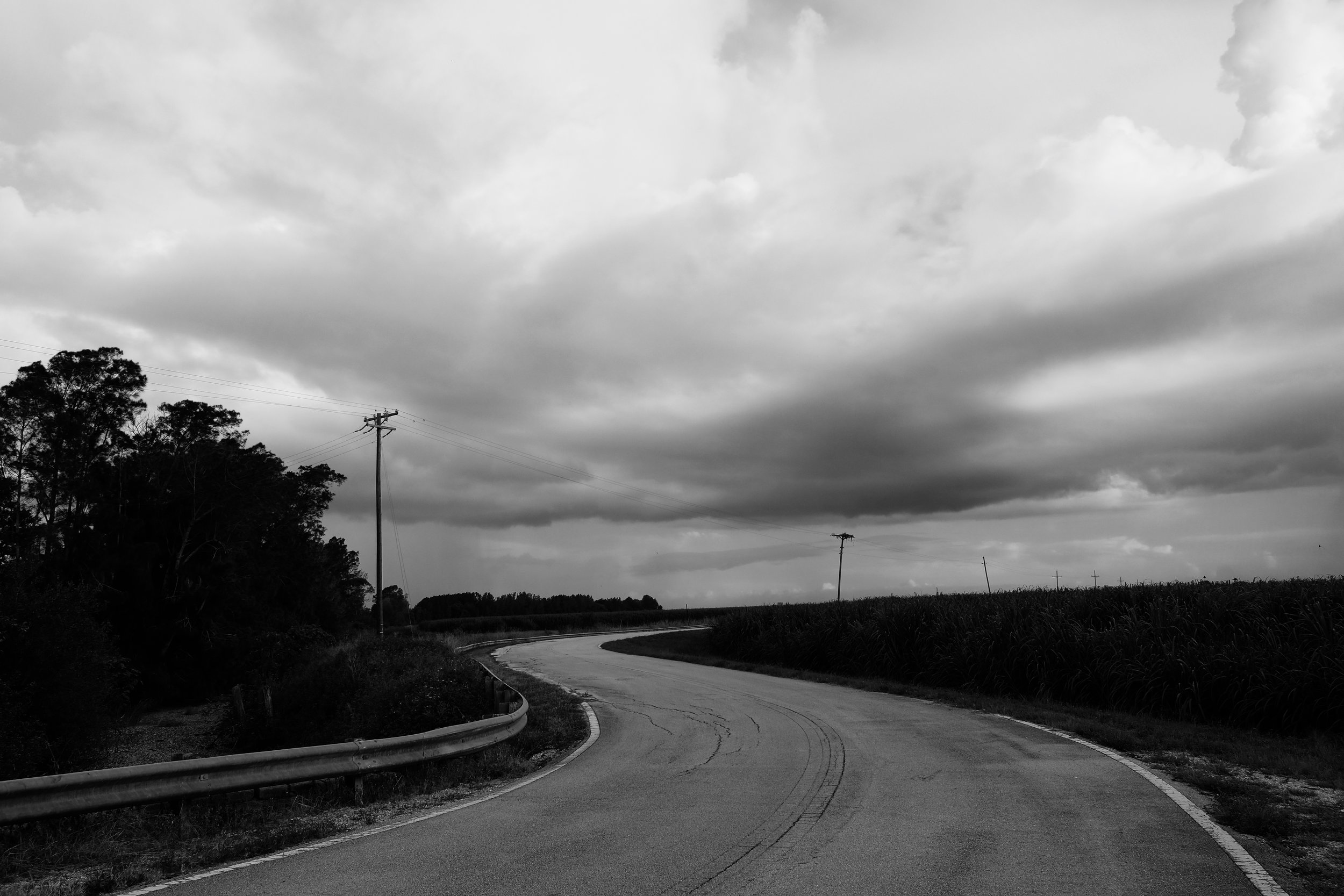
Mallory Clancy, licensed Professional Civil Engineer: “Municipalities and construction operations that discharge stormwater into a Water of the State are regulated by the NPDES (National Pollutant Discharge Elimination Program) and they are required to apply for a permit and take steps to reduce their discharge of nutrients through implementing a Stormwater Management Plan and reporting on it every year. So, when able financially and technologically, they can devote resources to reducing the nutrients that get into the system (through fertilizer ordinances, pet-waste education etc.) and in filtrating or treating the ones that do (through building stormwater infrastructure). As for the releases of Lake Okeechobee water that occurs every year, that issue is more complicated. I believe that issue is a combination of all of the nutrients getting into the Lake, and the fact that their are regulated releases from the Lake into the Caloosahatchee. The regulated releases are necessary now because of how the hydrology of that region has been altered over time to prevent flooding around the Lake. The nutrients getting into the lake are being regulated by FDEP similarly to the NPDES program mentioned above, but it's a long game and there are many people who discharge into the lake being held accountable for what goes in.”
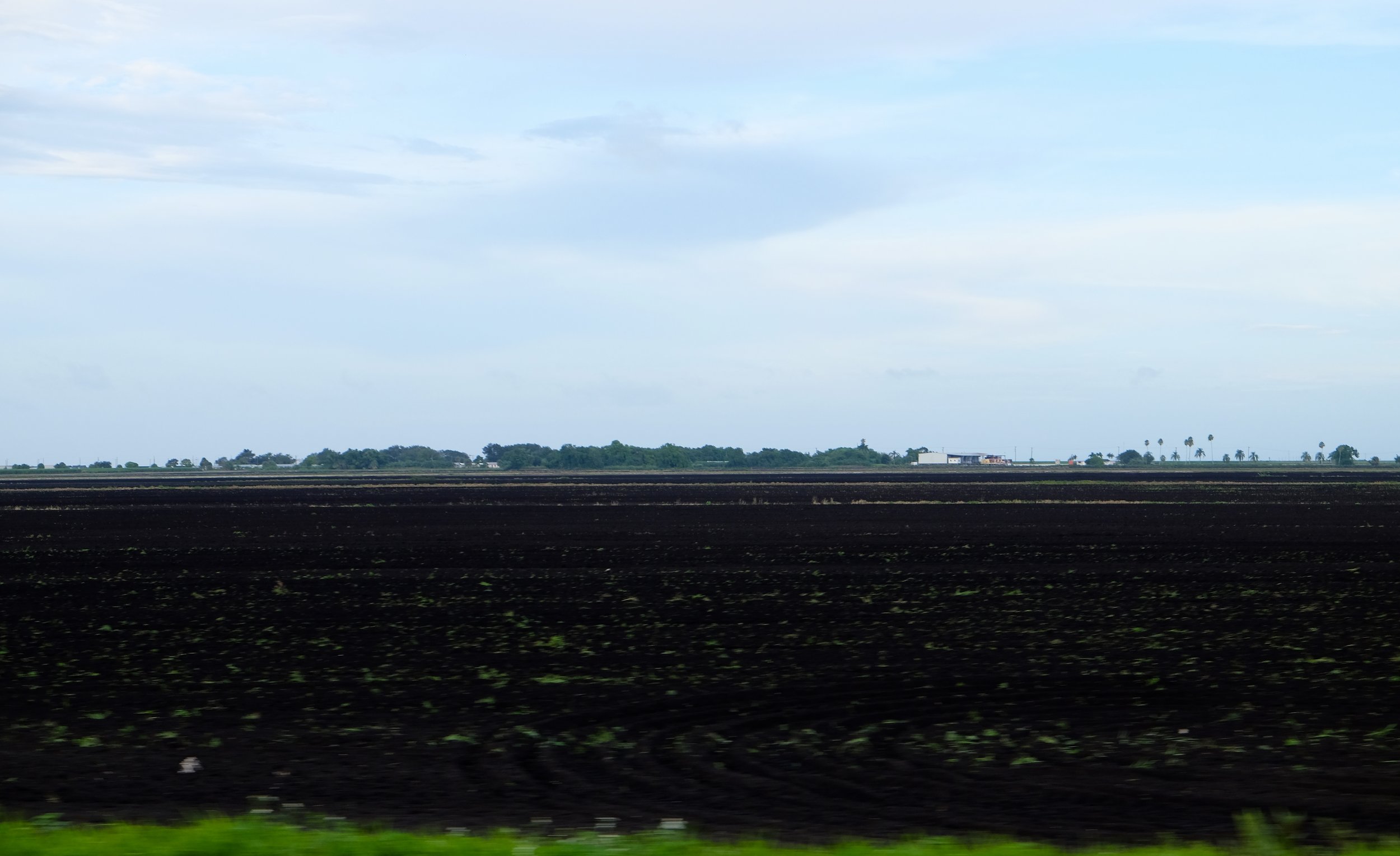
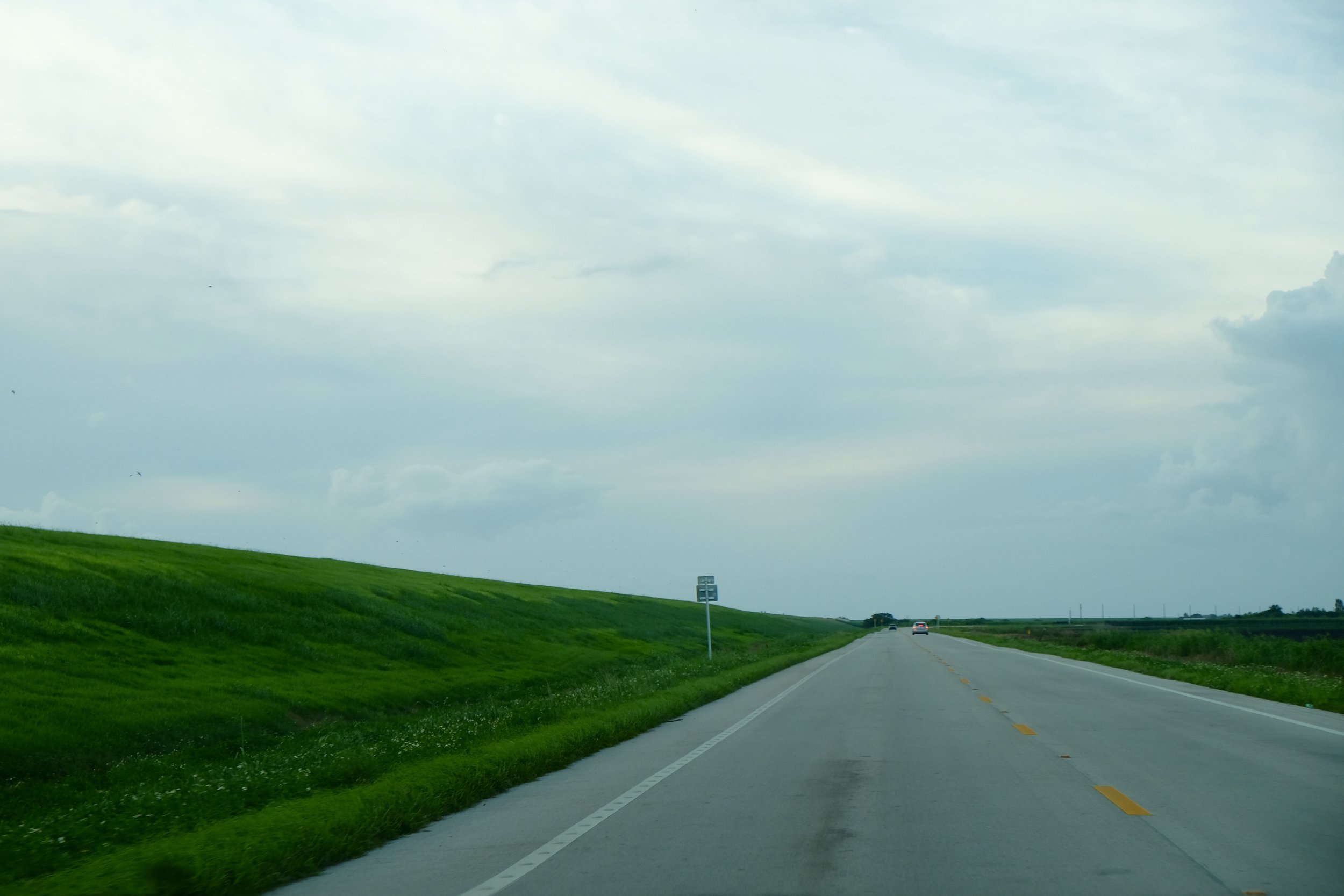
This is the large earthen dam that surrounds Lake Okeechobee. You can walk along it at some sections, or drive beside it on Highway-27.
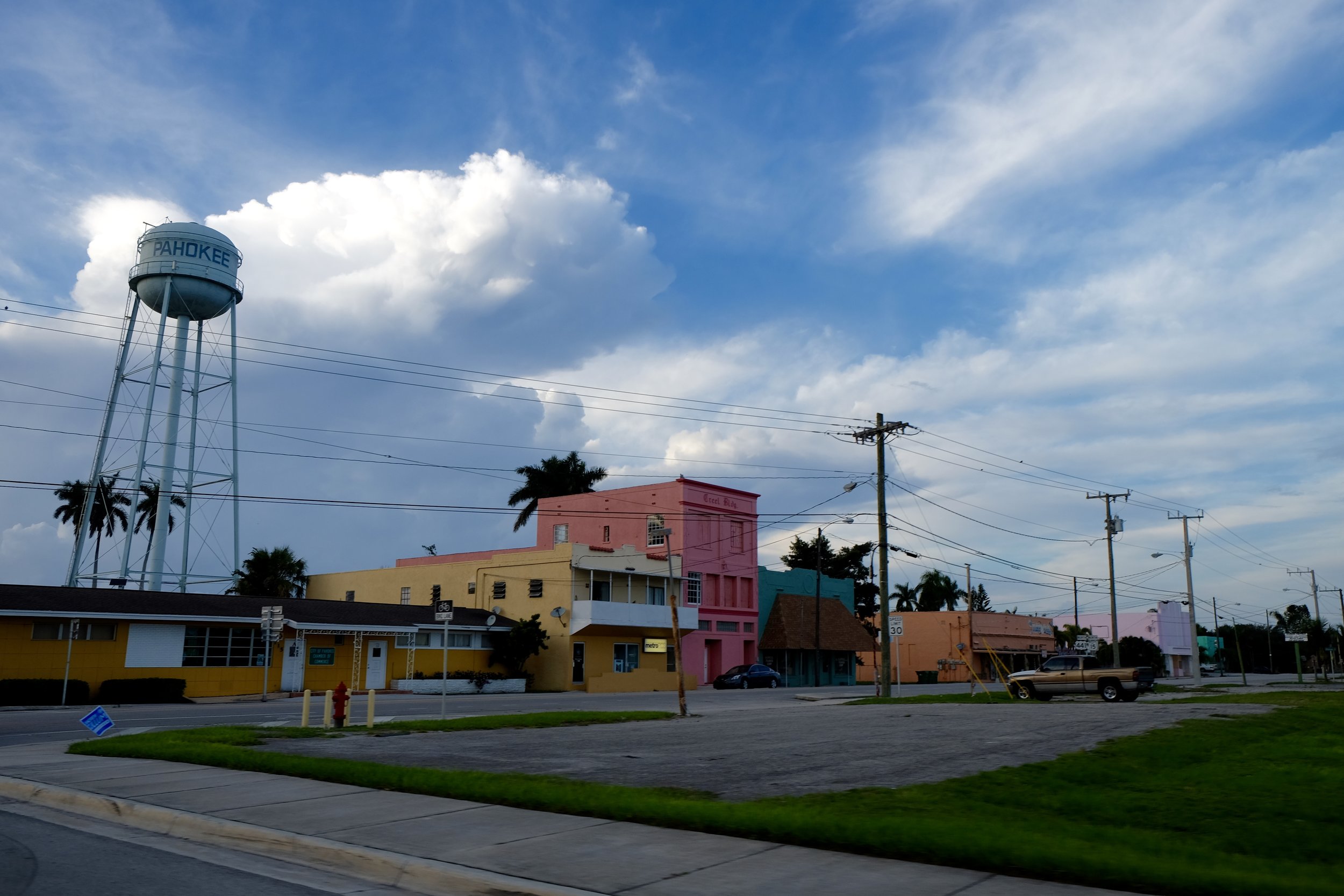
Pahokee is one of many small towns along the Everglades. Many of the people who live in Pahokee and neighboring towns work in the Everglades Agricultural Area.
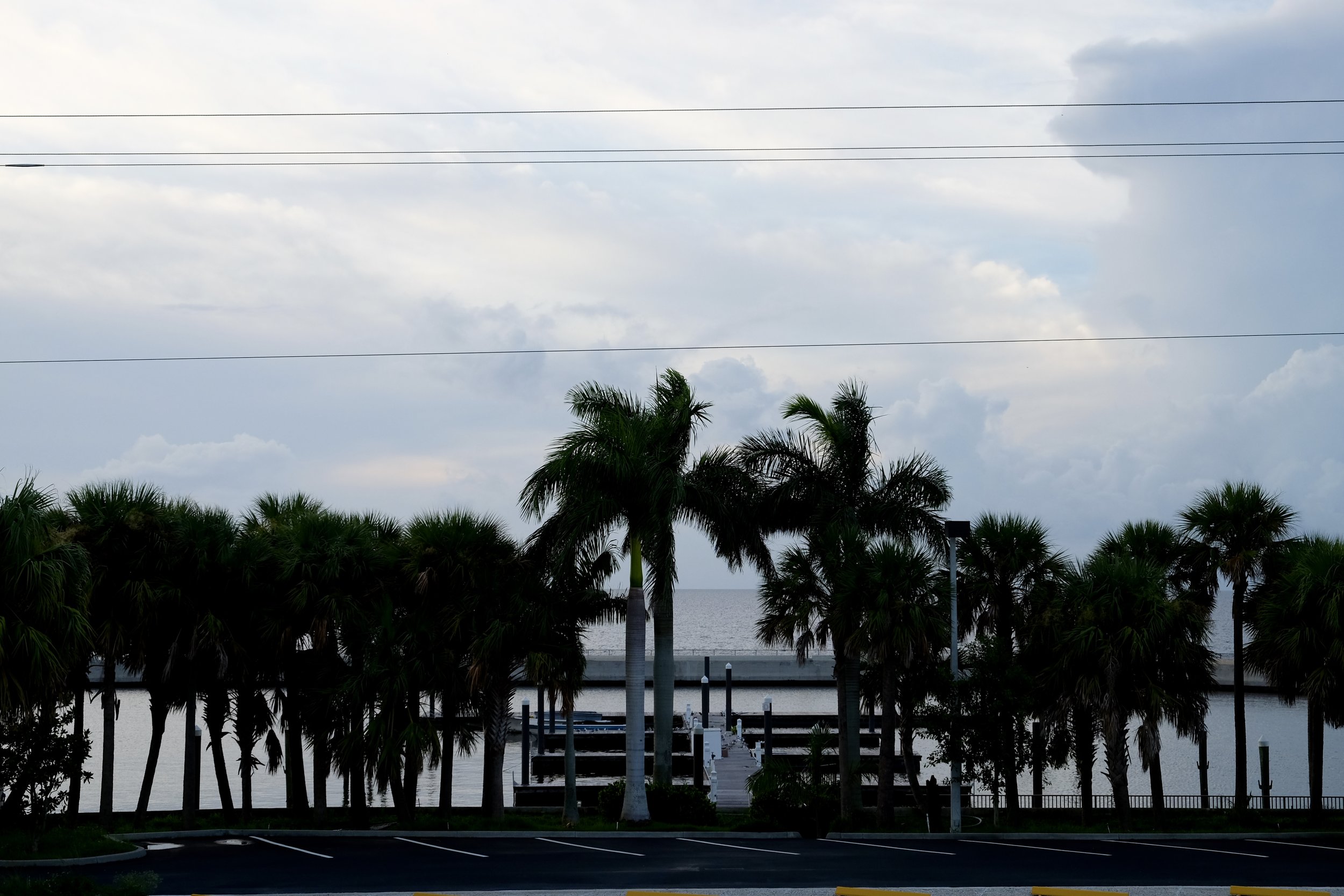
This is one of many parks that surround Lake Okeechobee.
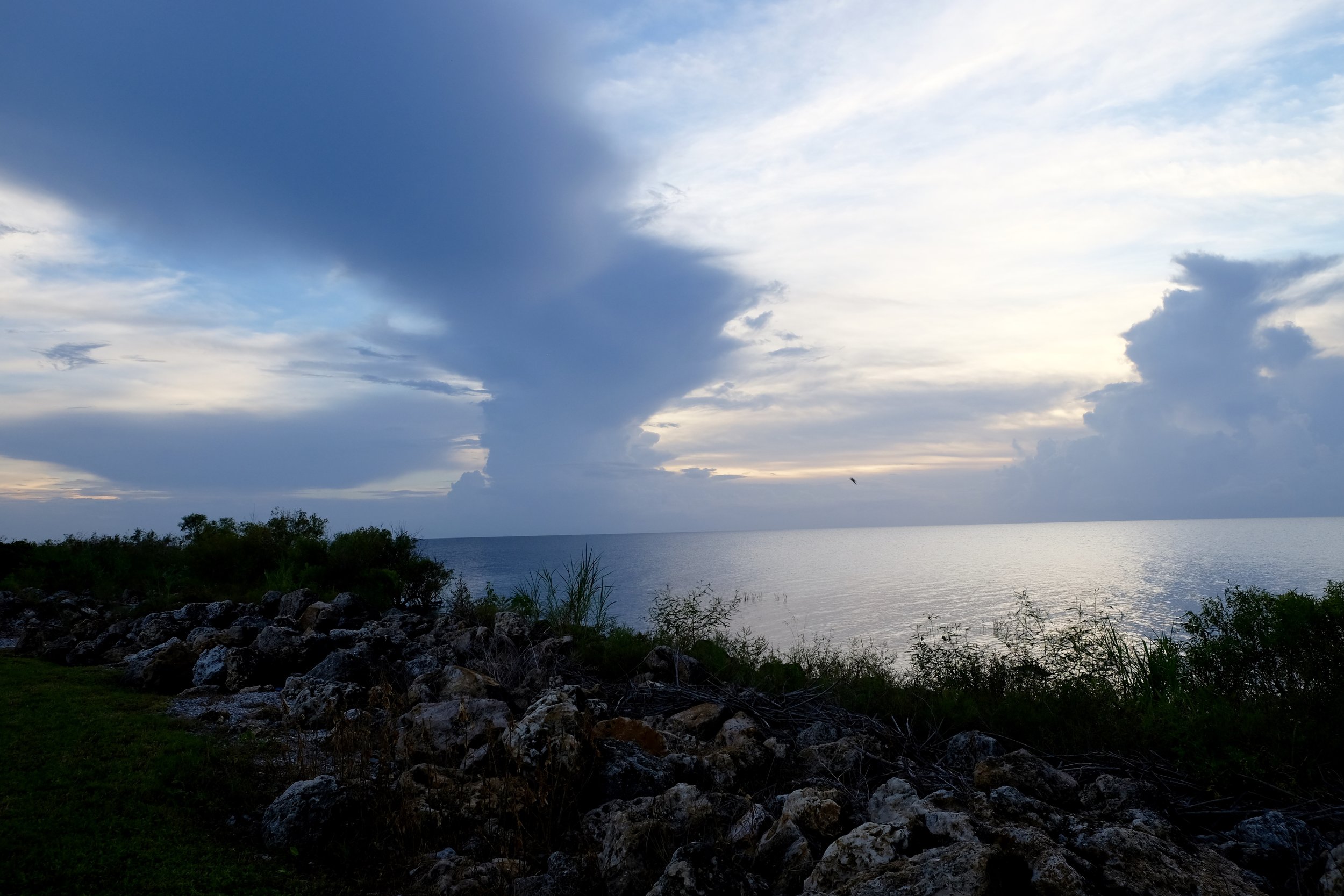
Lake Okeechobee is the second largest freshwater lake in America. What has happened to this majestic place is unfathomable. What is worse, is that the pollution wrought here has impacted millions of Floridians, accounting for over one-third of the state - and growing.


Mallory Clancy, licensed Professional Civil Engineer: "As an engineer, my impression is that there is not an easy one-time solution but that many, small changes in the ways municipalities approach water quality will make a difference overtime. I see the policies being put into place like permitting... and attempting to hold municipalities accountable for their discharges almost making it more difficult for those small governments to put money towards the projects themselves because they have to devote so many resources to meeting permit requirements. I think the solution is for citizens to request green infrastructure solutions and vote for people who prioritize environmental issues. Slowly if the Board members of our communities choose green and sustainable development, we can prevent future pollutants being added to our waterbodies and focus on retrofitting existing polluters to reduce their impacts. It's a long game, but I see the desire there. We need more proof of green projects providing financial benefits to those who implement them and then we'll start turning the developers and municipalities to prioritize green and sustainable development."
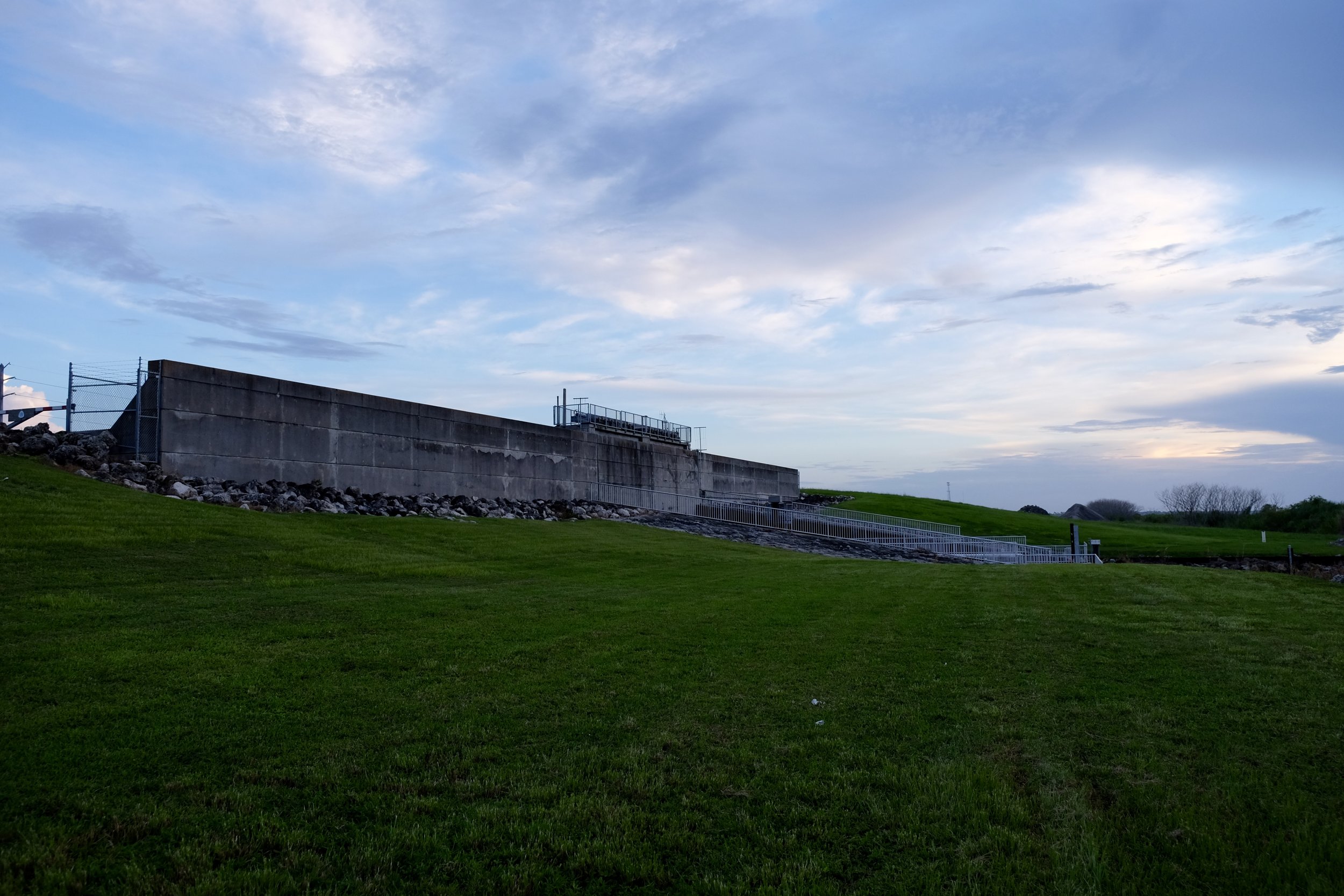
This is the lock for the West Palm Beach Canal, that flows into Palm Beach. Like the Miami Lock, this is not currently in use, but we were able to get up close to show how these lock systems work.
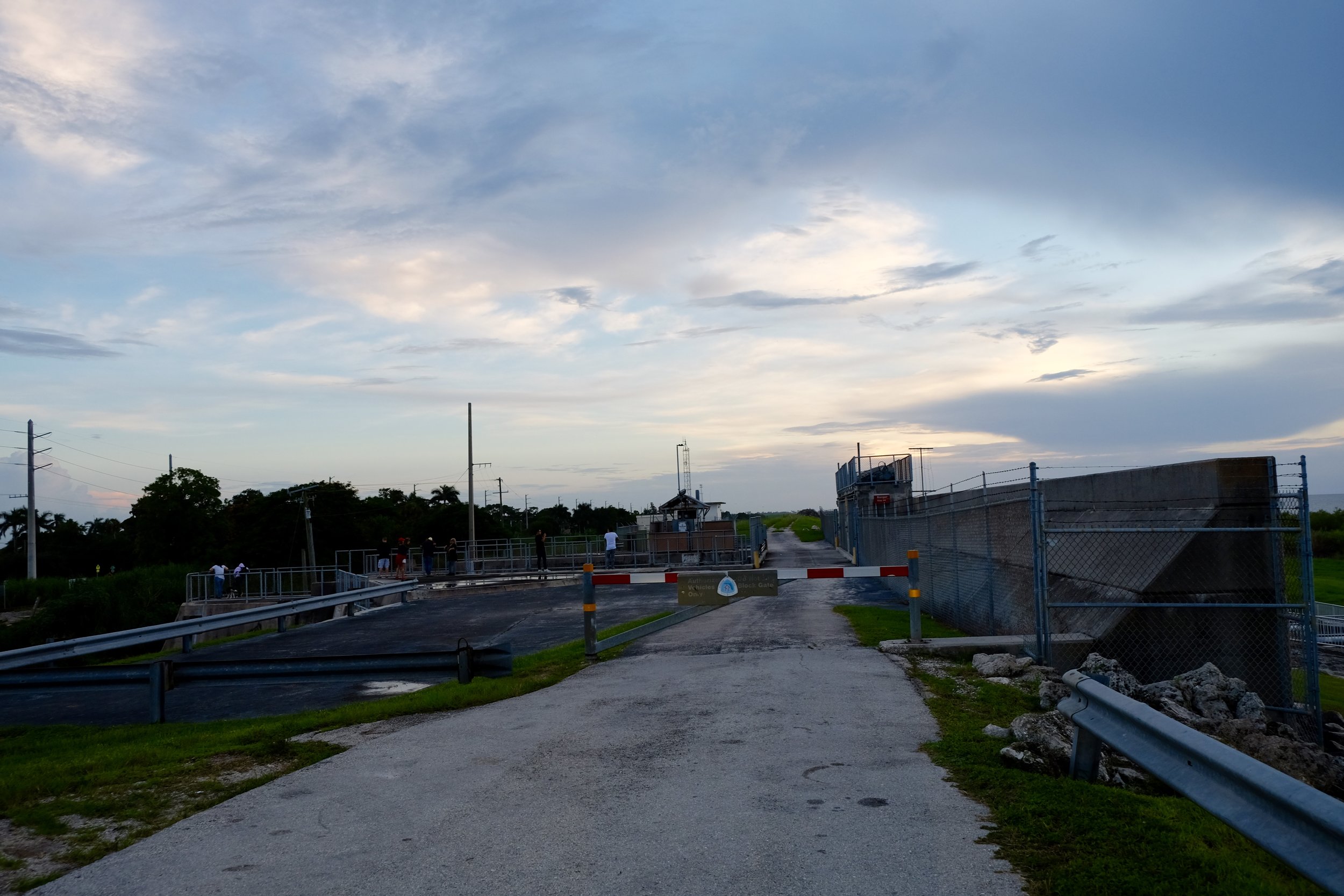
An access road to the lock allows you to drive or walk right up to it. From the top, you can look out onto the canal, and you can see the large lock doors holding the water at bay.
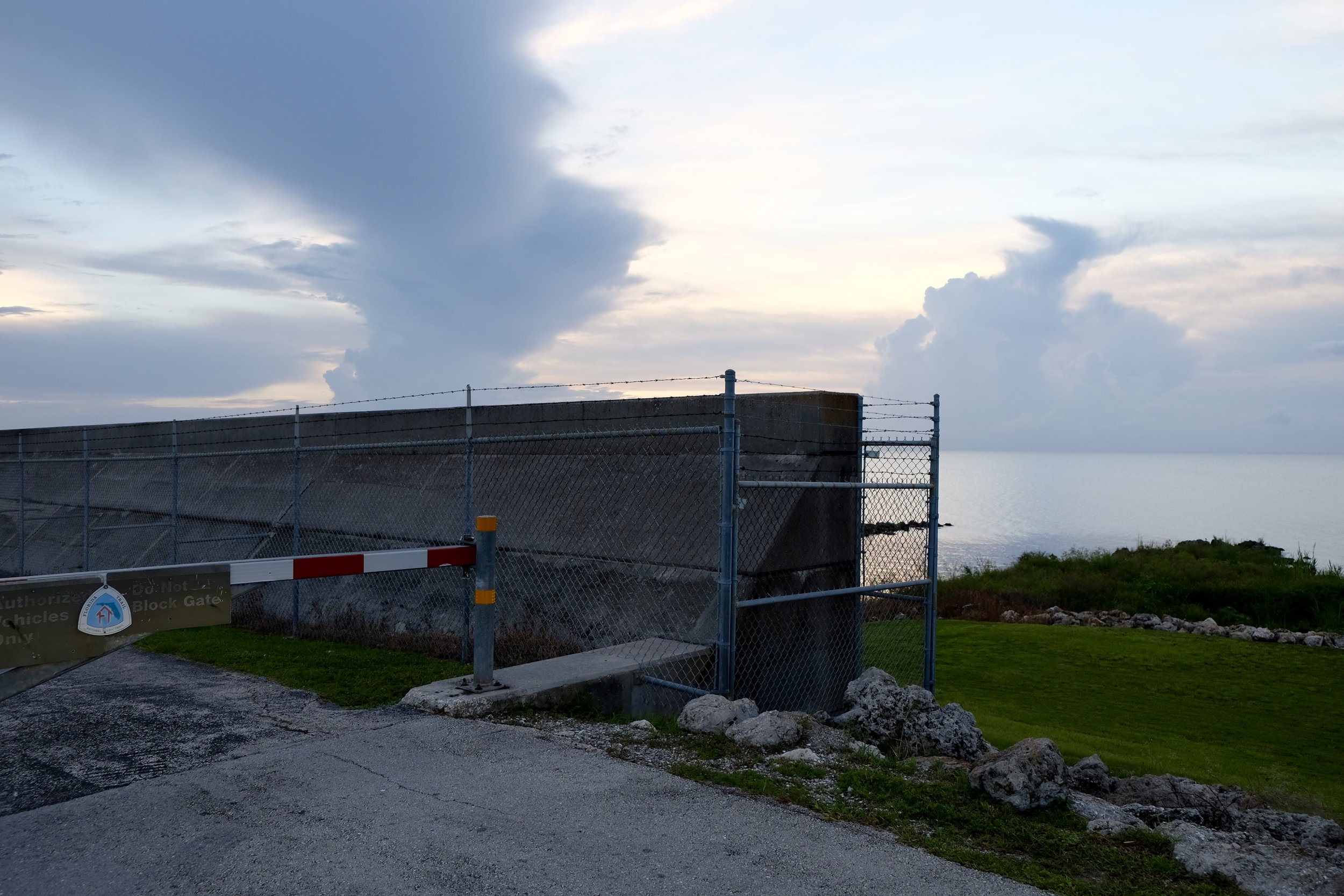
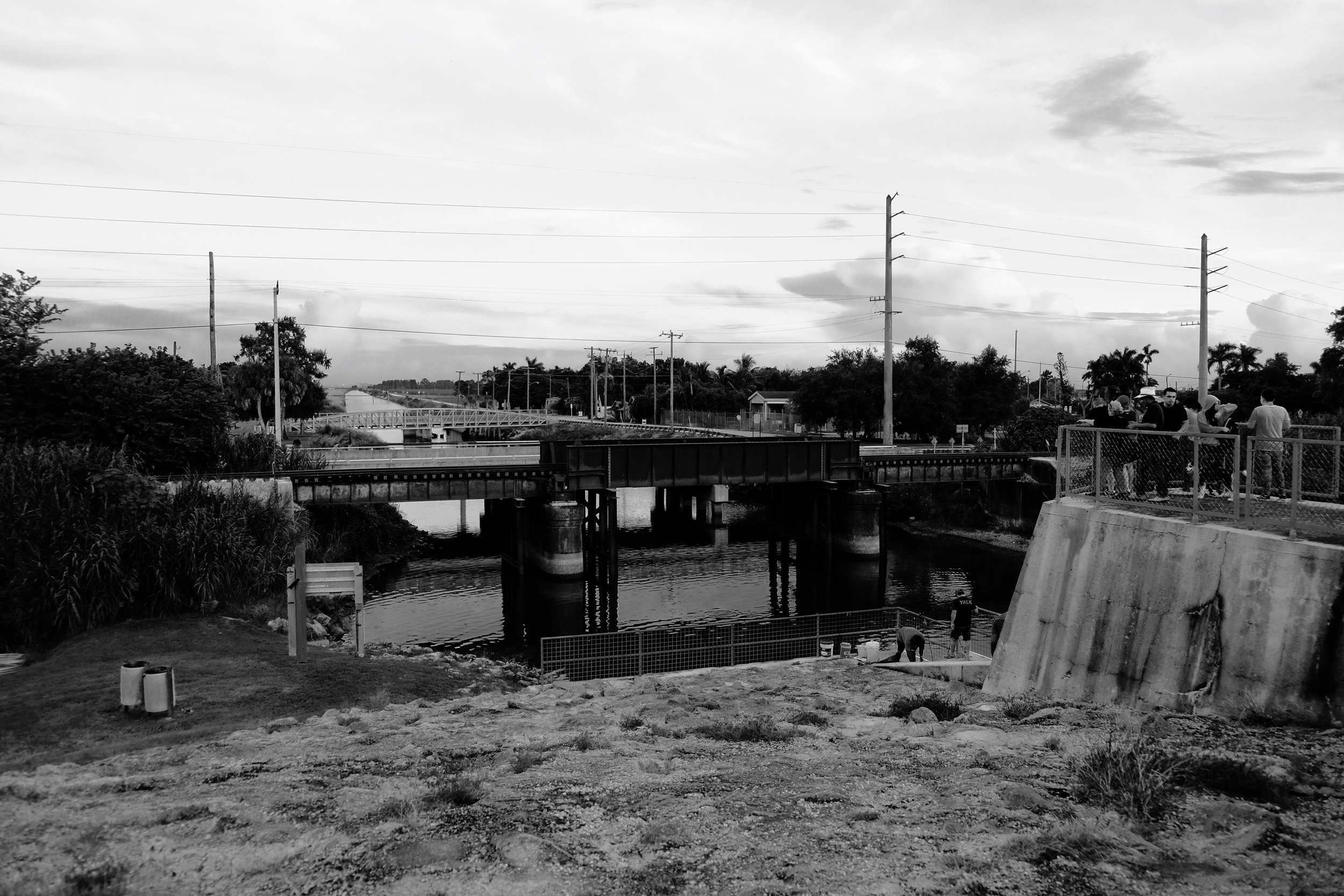
Beyond the mess of concrete and steel, you can see the West Palm Beach Canal.
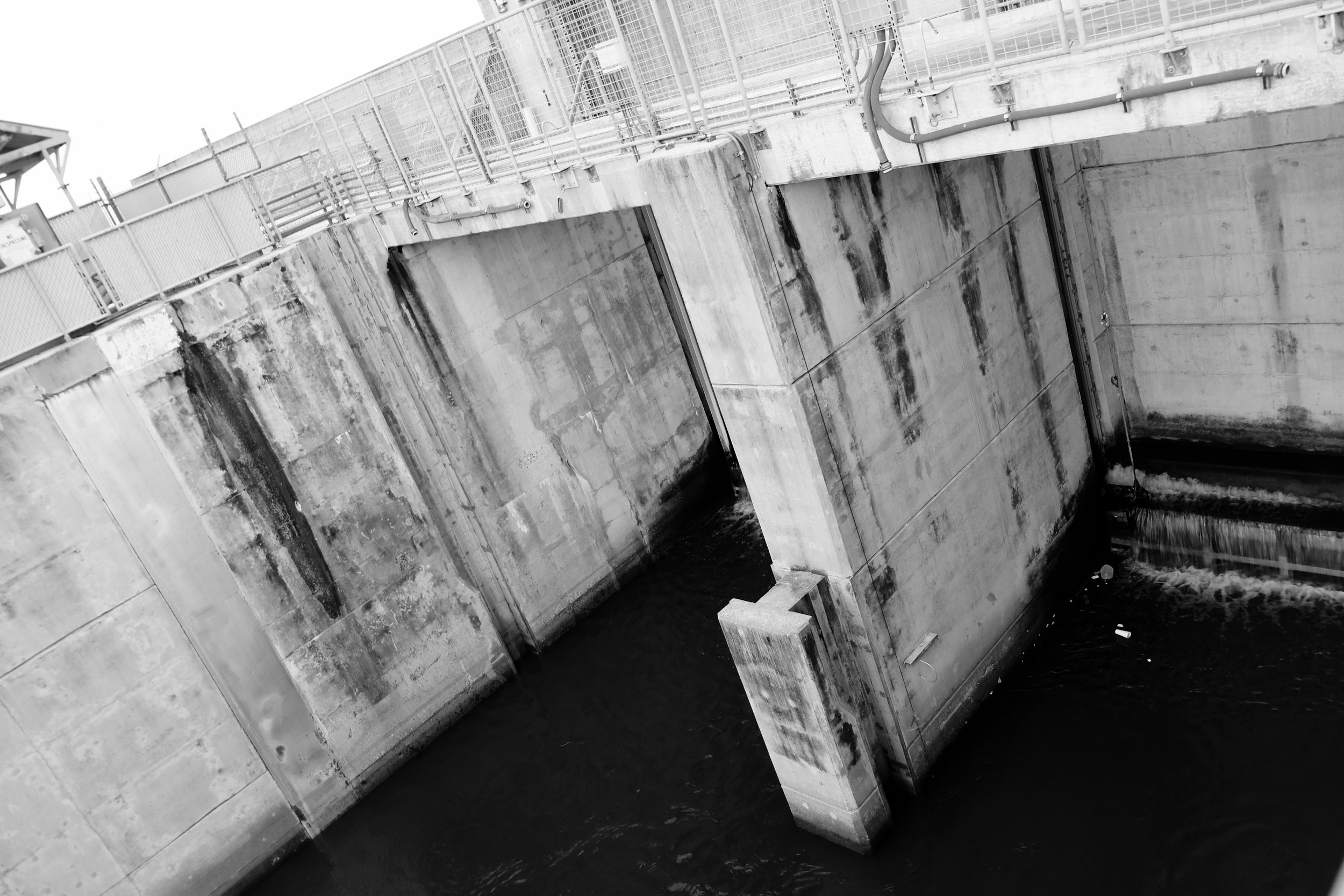
The lock system.

The West Palm Beach Canal
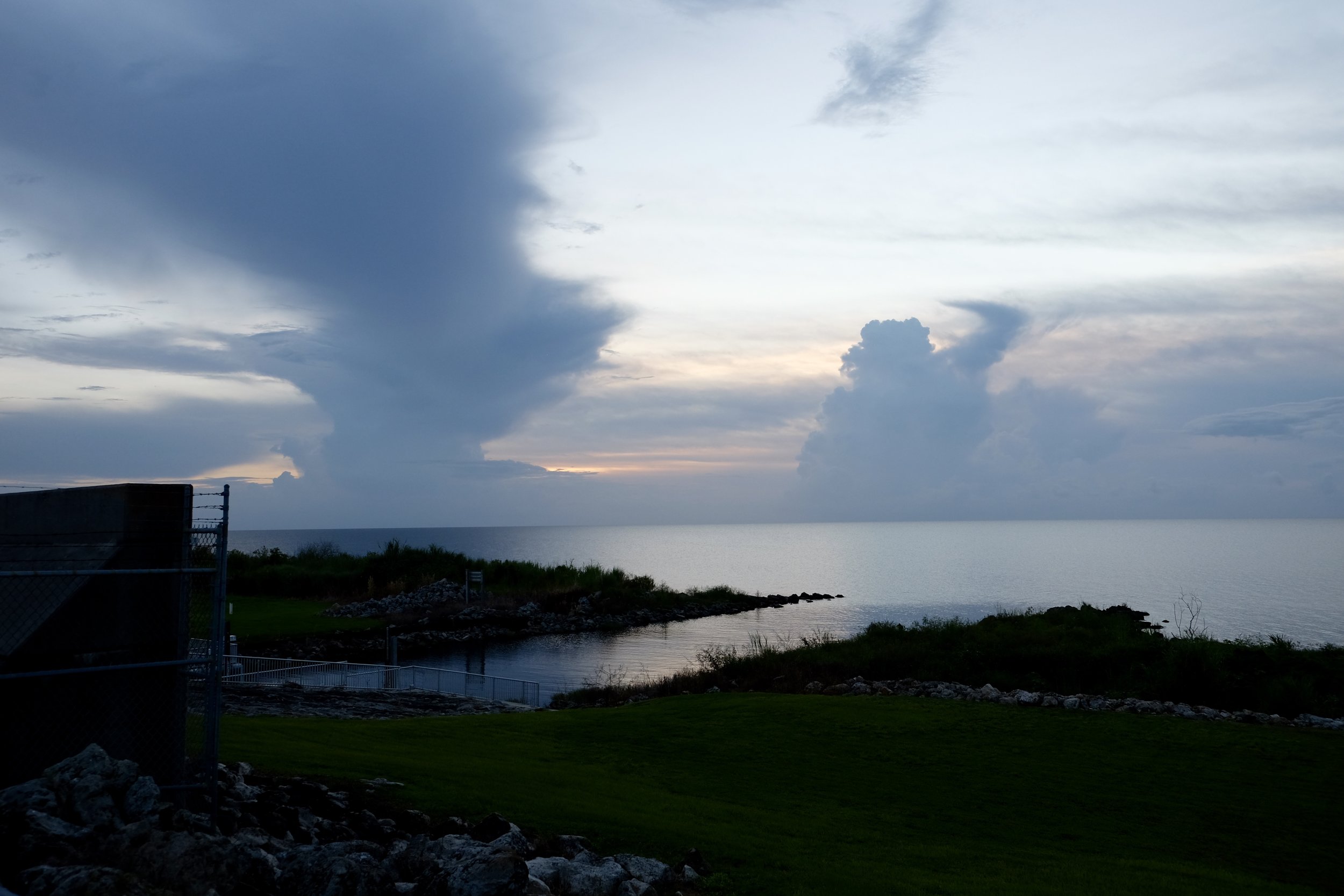
That small waterway coming out of the Lake is flowing directly into the lock here at Canal Point. Currently, there is no filtration system at these lock outflow points.

There were many locals here, a few of them were taking their horses along the Herbert Hoover Dike.


























Hover your mouse over the image to see interview quotes and descriptions.
